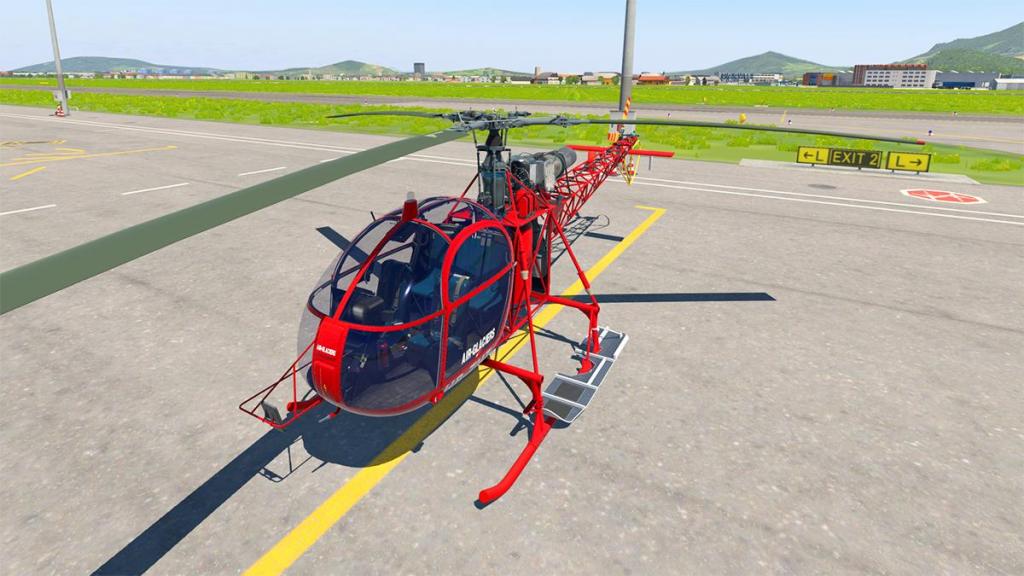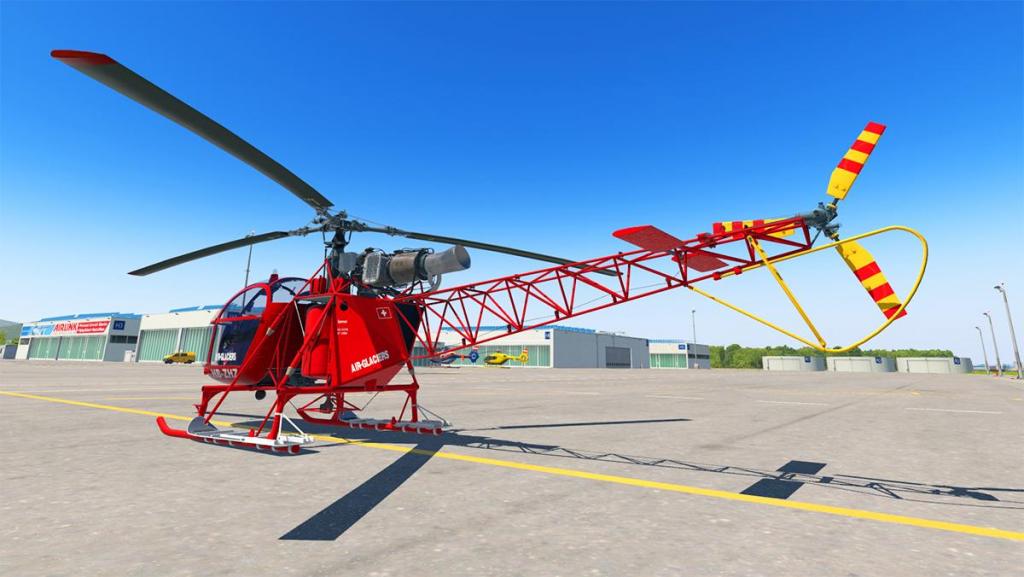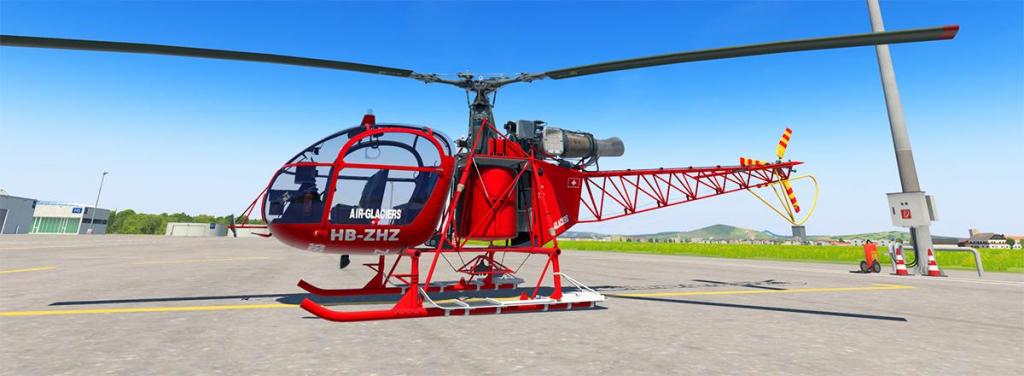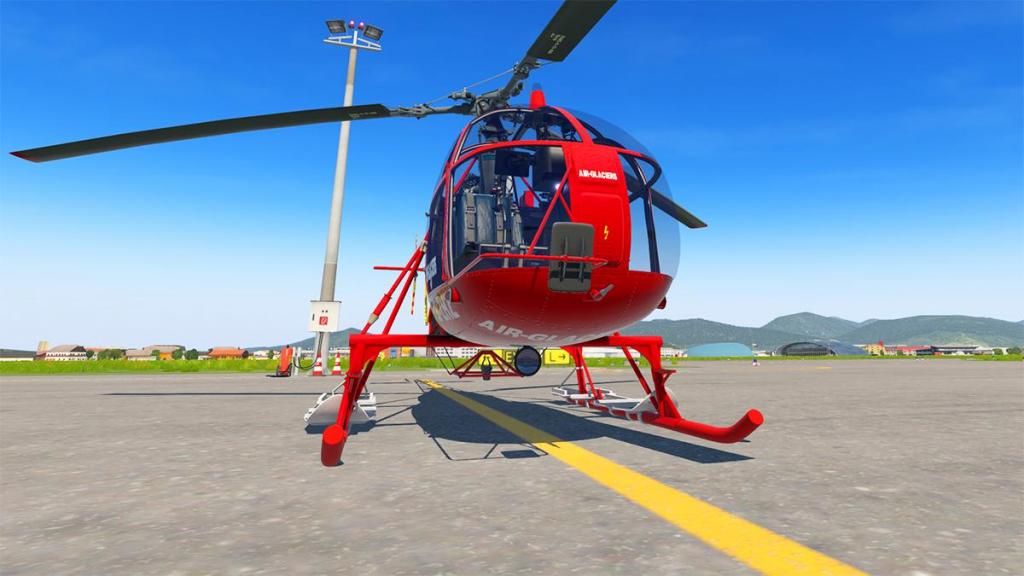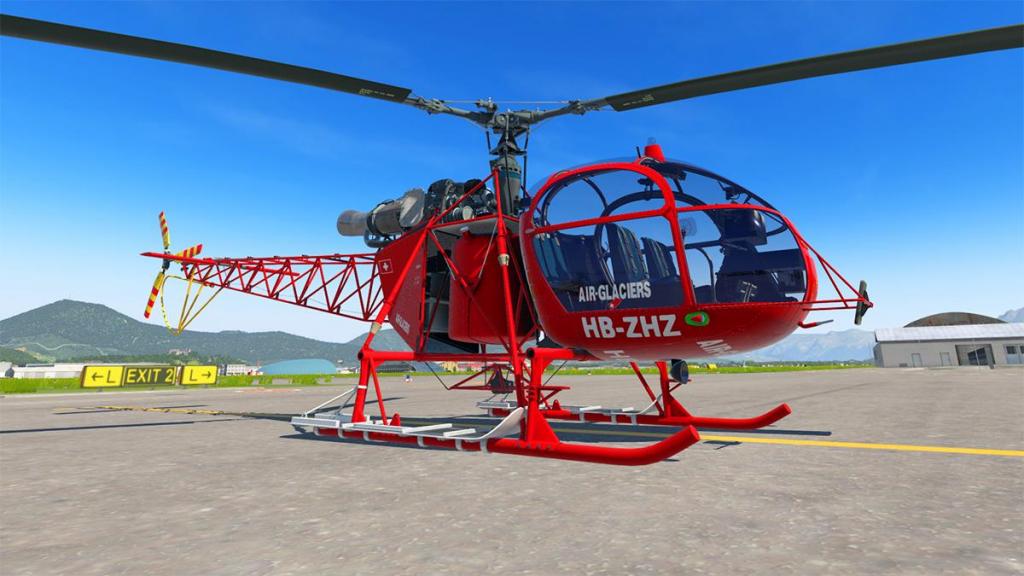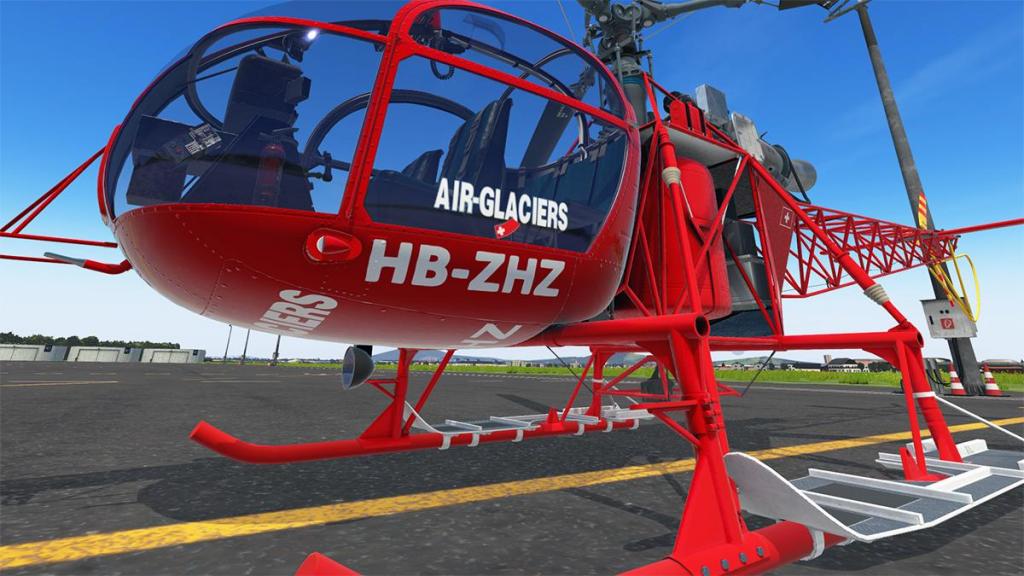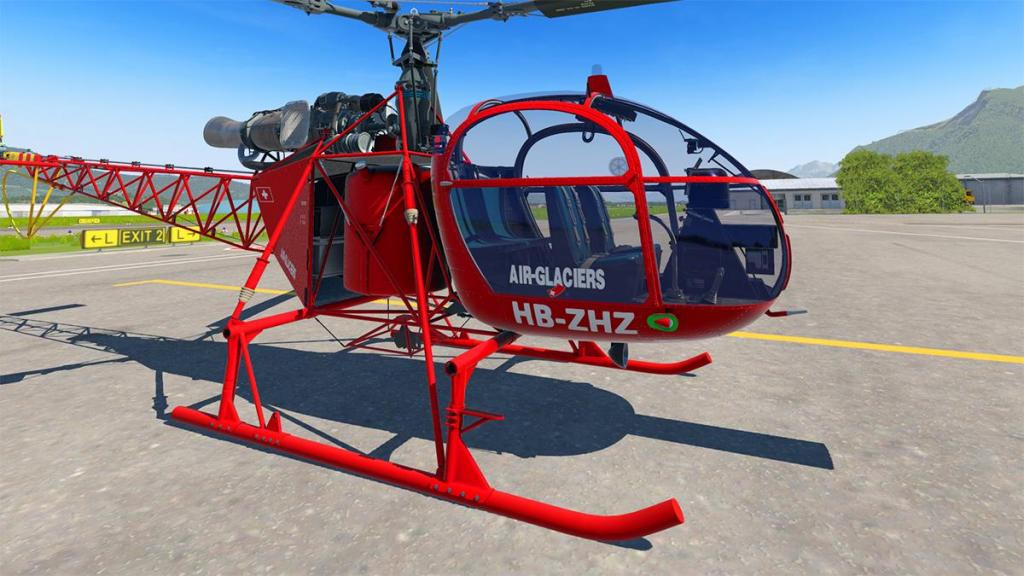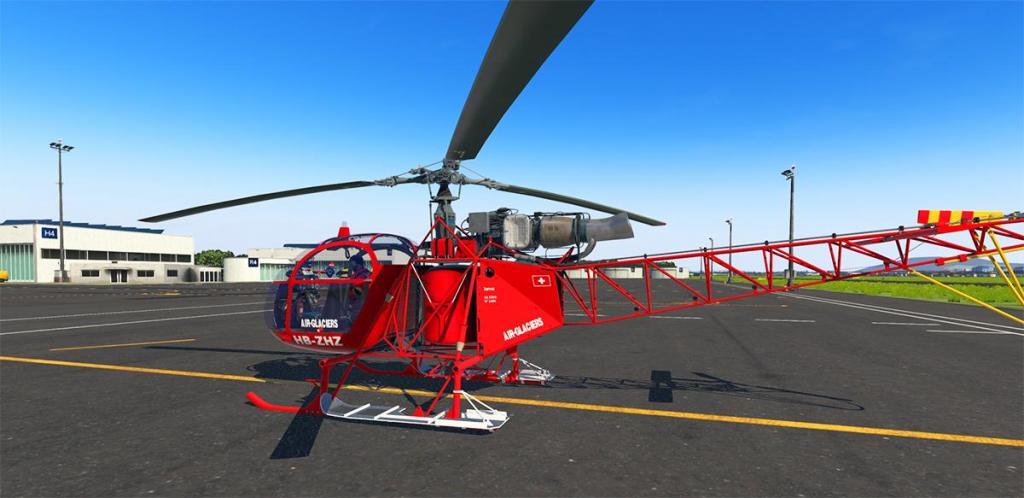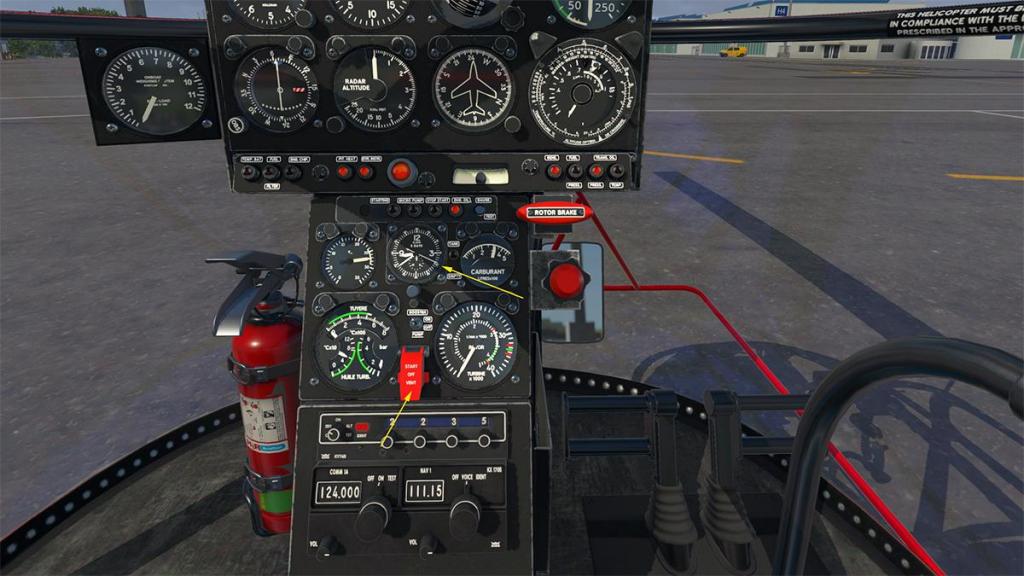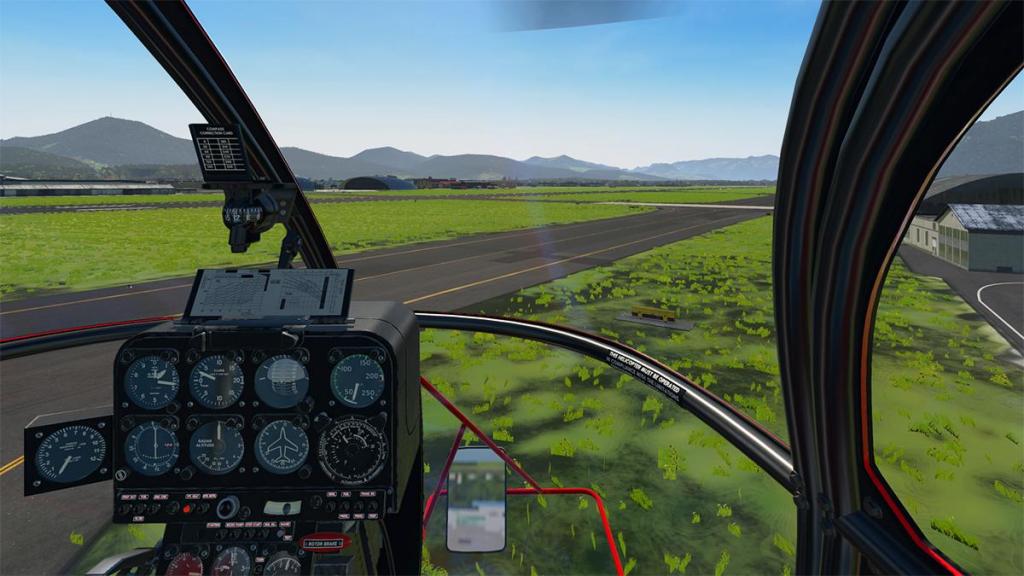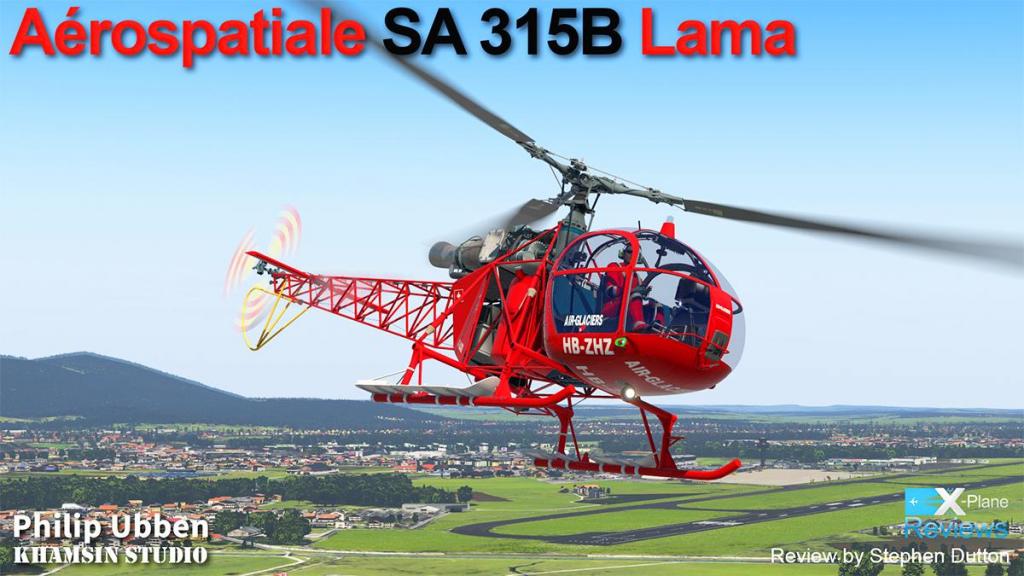-
Posts
2740 -
Joined
-
Last visited
-
Days Won
359
Content Type
Profiles
Forums
Articles
Everything posted by Stephen
-
Aircraft Update Review - DC-3/C47 Skytrain v4.0r4 by VSkyLabs Flying Lab Project vSkyLabs are back with another focus on the DC-3/C47 heritage aircraft. It is a year since the last v3.0 update that renovated the cabin and included a cargo version... note the word "Project" as in any aircraft by VSkyLabs creates is an ongoing project and there is more to come as the aircraft is developed out more and more. This is part of the deal with the developer, and at least he keeps his side of the bargain. Noting the versions... Authentic DC-3 "Douglas Commercial" above and the C-47 Skytrain below... ... you can add on some really big Ice skis, or... ... a huge set of XC-47C floats. The Douglas aircraft is also highly developed for VR (Virtual Reality) use and operation. DC-3/C47 Skytrain v4.0r4 There was a huge amount of changes in the last v3 update, and there is again this time around. But v4 is more focused on the cockpit than the cabin or any of the external modifications than what was presented last year. The main changes are on bringing in the PBR (Physically Based Rendering) properties to the cockpit, a "fresh over" if you like. The changes in v3, were mostly all to the very good, but there was also a few items that I thought were also a big retrograde step backwards... The main instrument panel was changed from a basic black to a more detailed green panel... the green looks very good and is certainly nicely worn, but it was also missing the nice screws that originally held the panel in place... again the screws have not yet been replaced, and you still really miss them as it makes the panel a bit "missing something"? Second was the change of the glass, from the original dirty rusty brown, to a smoky black... the new finer tint just does not have the ageing impact of the earlier grubbier version, again the lighter black tint remains. Note the nice opening windows. The panel actually though has had a lot of changes... in fact all the gauges have been remodeled and re-engineered to include plastic covering for lighting, better refined needles and engine markings (L/R) on the relevant instruments, and all the gauges animations were re-calibrated with higher precision indications. The differences are far more highly noticeable at night... ... the Airspeed indicator can now also be switched (hotspot) to either MPH or KNOTS, and the speed bugs then move to match each of the different speed settings. I bet you didn't notice, but there was no Artificial Horizon instrument gauge (arrowed below) on the right Co-Pilot instrument panel, that instrument has now been installed... the AH replaces an Ampere meter that has been removed. The original Sperry Type A-3A autopilot facia has also been redone... including the compass scales, rotary knobs, bezels. The Sperry autopilot cutout was also added, to host the Sperry unit inside... in fact the whole complete instrument panel and instruments have been remodeled and retextured to PBR texturing quality and dials come with reflective covering glass. Ditto the overhead switch panels, again PBR texturing and new switchgear. There is remodeled dirty roof speakers and an added master Ignition switch that works... (below) the drop down (press the Whiskey Compass) twin Garmin GNS 530 GPS units have had their outer casings units totally remodeled, and they now have a far more visual 3d look and feel. The yokes have also been redone, gone this time around is the loss of the lovely raffia weaving, after the loss of the Douglas logo the first time around, so the yokes are all now just a pure metal frame with a nice PBR gloss and still no return of that magnificent Douglas logo? The AviTab (plugin required) has also now been added. There are two tablets positioned on each yoke, and the tablet is selected via the pocket (hotspots) on each side of the pedestal. The pilot seats have been redone (recovered?) as well... Green before they are now a more authentic worn brown leather with a nice PBR wear look and feel. The pedestal has also been remodeled, and again the look and feel is to the more modern, or a straight out of the shop brand new feel... beautifully done however with some very nice metal work, but not in the original feel of tired, aged or worn in any area? On the rear of the pedestal now (arrowed above right) is a real-time conversion board for airspeed (mph/knots/kmh), temperatures and altimeter settings. On the floor between the pilots, there has been added both an undercarriage lock handle (arrowed) and more about this when flying, and a "Emergency" panel for the fuel shutoffs and Fire Extinguisher, again all really well done. The classic DC Hydraulic panel, situated behind the Co-Pilot has been totally overhauled.. there is now a Engine-Pump-Selector, Autopilot Emergency valve (which works), a Star valve (non-functional), and both the Flaps and Landing Gear handles now operated in a three positions of UP, NEUTRAL and DOWN (Again more about about these movements when flying. The hydraulics metal panel placards are beautifully done (detail, detail) and add a lot to the aircraft, as all of the advisory and warning placards around the instrument panel and cockpit which are also new and more authentic. Up on the roof, the escape hatch has been redone and has gained a window, which lets in a lot more light into the cockpit... very nicely done with great window surround detail. Gone also is the 60's IBM 360 mini-computer (Avionics rack) situated right rear of the cockpit... it has been replaced just by simple brushed aluminum facade that is quite nice, but I would have rather have had a realistic avionics rack (but not the 60's rack, but a far older model). There is a notable pattern here, a far, far higher quality, but also a more sleek and modernistic look... you are certainly leaving the grubby, wear and tear feel now well behind... for me it is a debatable context, if you want old classic, wartime built and battered, then that aspect has been (but slowly) refined totally out. Flying the v4 DC-3/C-47 Instantly when starting the twin Pratt & Whitney R-1830 Twin Wasp 1,200 hp (890 kW) engines... is they sound now very different? This is a very all new FMOD sound package, and it comes with new multi-layered engine sounds for the interiors and exteriors... and you significantly notice that aural difference straight away, and it is very good. With the weight of the aircraft you steer with the engines as much with the locked tailwheel, yes I am cheating, but as noted I don't have toe-brakes to get a realistic wheel on wheel braking effort. Taxiing mean small movements for corrections, if you don't go too fast the DC-3 will hold a nice straight line. The Gear lock has to be flat on the floor to "Lock". So you check it, then set the trim to neutral. Half throttle to get the bird moving, then feed in the full power... control is via the throttles as much with the rudder to keep the DC-3 straight, as you need more power on the right to counteract the forces of the pull to the left, it is natural to me now, but this is on how you fly the DC. The tail will soon lift around 70 knts, and you use the rudder for more control, but be careful, as if the DC-3 starts to weave you can easily lose it. Around 90 knts the DC-3 will naturally lift, so your job is to just keep the aircraft tight and straight, once off the ground and flying and all you need is to do is a slight pull back on the yoke that will give you a nice clean 1,000 fpm climb... ... now come the tricky bit, you have to pull up the "Gear Lock" handle... then move the gear lever upwards to stow the gear, simple... No not really. It is because you are flying totally blind while moving around the cockpit to focus twice on two different actions. This is the second change. Originally vSkyLabs used a setting on the Slider# to create a 3 way selection, UP, NEUTRAL and DOWN... .... but that caused me personally havoc after setting the Slider#14. I got a conflict with my Saitek X56 throttle system, it made the right engine run weak... disconnect the Saitek throttle add-on and it worked all fine again, plug it back in and it doesn't? Why an addon unit messed with a throttle power selection is totally beyond me, but it did? Other users struggled with the 3-way system as well, so it has been since simplified back to using the default (Gear) UP and DOWN commands, but you still have to pull up and push down to lock the "Gear Lock" lever... two other notes, one is to make sure you update to the latest version via the "STMA" built in updater to get the later (r4) gear update. And when the gear is retracted, do a little pull on the regular brakes to stop the wheels rotating in the wheel bays. There is an "ESSENTALS" pdf with all the Slider# commands to set as the developer recommended), including sliders# to cover the "Gear (safety) latch", "Gear Handle", "Flaps Handle", and all to save you moving visually around the cockpit, but after the incident or conflict with the Slider# command I am personally wary of other hidden actions of using the sliders#... it is an area to investigate further. I totally recommend using the XPRealistic Pro v2 by rk Apps and their realism effects... it makes the DC-3 "shake, rattle and roll" with aplomb, and they are extremely highly realistic. Add in those new FMOD sounds and you are having a great time up here. Notable is if you open the side window, on how the sounds change nicely (tone wise) in the cockpit of the unique thrum of the Wasps, it is far quieter with the window closed again. Trimmed out, you need to again to adjust the throttle position to stop the slow yawing to either the left or right... The DC-3 always had a tendency to drift or bank one way or the other. The throttle trimming will do a good job here, but the exact balance window is very hard to find. Changing the throttles or power can have a big impact on trim or the change of altitude... you can steer and fly by the power settings alone. Notable in v4.0r4 is that long-waited fix for the dual DME radios, which were replaced with a fully functional, independent dual DME radio that allows to fix your position with the use of separate NAV1/2 radios, while still on-navigation with NAV1/2. The Sperry Type A-3A autopilot is about as basic as you can expect it to be, it also now has the "Autopilot Master" switch on a slider# setting and the noted "Autopilot Shutoff Valve" that actually works. Three dials in RUD (Rudder), AIL (Aileron) and ELE (Elevation) will adjust your flying surfaces, in reality it is just another trim function but one that you can control easier. Turn the ELE knob and you will see your yoke go towards you to climb, same movement in forward to descend. AIL will bank the aircraft to a new heading and so on. It all works quite nicely but you have to watch your instruments in that you are going in the right direction and not slightly banking towards another one... as with the A-3A system the DC-3 tends to drift (badly) over distance, so you had to consistently make heading adjustments. I actually love this sort of flying as you felt you were back in a period of basic automation and you still required your navigation skills to find your way around the planet. Switch on the provided S-TEC Autopilot, and the more modern system eliminates this aspect, but the wide swings around the new heading are not at all realistic? In v4 vSkyLabs have adjusted these wild swings, but they don't seem much better to me? To change the heading for the S-Tec you use the RUD (Rudder) knob on the A-3A (arrowed orange) and I love the alignment of the compass to heading rotors (arrowed yellow) on the A-3A. Notable is the vSkyLabs use of the "Experimental Flight Model" that needs to be selected ON in the Menu/General settings. And vSkyLabs recommends to set up your X-Plane configuration for MAXIMUM REALISM, and all "Stability Augmentation" to zero "0" values. In v2.7b vSkyLabs introduced Ice and rain to the aircraft... but to note how far that interior quality has also changed over the versions, but I still really miss those great earlier twirling fans! The Ice and Rain effects are some of X-Plane's best use of the feature, it not only feels cold, but it can be quite lethal as well. Lakeland (KLAL) field in sight, it was time to get ready for landing... like the Undercarriage the Flaps are now also on the new (Slider#) system, and it is used in a realistic hydraulic pressure fashion, in the real DC-3/C47 there is a hydraulic hand pump located at the bottom of the hydraulic control panel, this is a handle that extends out between the pilot's and co-pilot's seats, and is set there for manual use if the engines cannot supply the required hydraulic pressure (but not yet implemented in this aircraft, but coming). Gear lock lever up to release and then click down the gear lever to lower the undercarriage, then the gear lock lever down again to lock the gear in place... Flap position is noted to the far left, upside down... with the UP position low, and the DOWN position high in front of your eyes, but it can still be tricky to see while on approach. Approach speed is around 70 knts, but I think it is too fast, it feels fast... not slow and lumbering? but it is still close to the 58 knots stall speed. A slight nose up will drop you down to 63 knts, then slowly you fall to the runway. The DC-3 is very tricky to land... very susceptible to crosswinds, and you have to get those wheels perfectly right, unless you will bounce or hop like a drunk bunny all the way down the runway quite badly... ... now if you do bugger it all up (and it IS quite easy to do), in v4 a bad landing or crash will now do untold damage to the aircraft, like blown tyres and broken props... or the aircraft will simply come apart in the air... (note: no DC-3s were harmed in displaying the damage shown here!). Over throttle and the engines will simply blow up on you... "Oh dear!" Summary This is another huge update to the vSkyLabs DC-3/C47 classic aircraft. The aircraft was released back in July 2017, but has had continuous and quite significant updates since, this is v4.0r4, up from v3.0 last year, which in renovated the cabin and included a cargo version... note the word "Project" as in any aircraft by VSkyLabs creates is an ongoing project. Look at the original release version; DC-3/C47 by VSkyLabs Flying Lab Project and see the large amount of changes to the aircraft over the years, yes it is hugely and even significantly a far, far better aircraft, but a few of the great original ideas have also been lost along the way... notable the cockpit fans, rusty brown window tints and the screws around the instrument panel, this has also taken away a little of the old wartime classic feel that was so originally attractive. There has been also a more of a modernisation of the aircraft from back then as well, more modern tools like modern autopilots and in this v4 version AviTabs on the yokes. Other significant changes here also include another complete overhaul of the cockpit, mostly to the instrument panel to include instrument covers and the full look and quality of PBR textures and effects. Hydraulic panel has been overhauled and the gear lock handle included. Hotspot to either MPH or KNOTS, and dirty roof speakers and an added master Ignition switch. GNS holder are also all new... removed is that 60's avionics rack and replaced by some just nicely brushed aluminum panels. Slider# options are also now included as well as the usual default commands, but be careful the settings don't conflict with the default settings as they did with X-PlaneReviews. New damage effects are also clever and the feature list like with the realistic icing and rain is huge and getting longer by each version release. The DC-3/C47 is one if the the greatest aircraft ever produced, and 30 of the old timers are still actually flying... the result here is one of the great simulations, with a highly realistic feel and handling of this amazing aircraft for the X-Plane Simulator... it is a challenging aircraft to fly, a "sort of grab it by the neck and fly the thing" sort of machine, but a classic never the less, and what you get in the features and detail delivered here is excellent value and all for the under US$30.00 price.... value, huge feature list and barnstorming fun, what more could you ask for! ______________________________________________ The DC-3/C47 v4.0r4 by VSkyLabs Flying Lab Project is NOW available! from the X-Plane.Org Store here : VSKYLABS C-47 Skytrain / DC-3 Flying Lab Project Your Price: US$29.95 If you have already purchased the DC3/C47 from Vskylabs then just login to your X-Plane.OrgStore and go to your account and download the current v4.0 update (note - that you download the r4 update via the STMA Auto-Updater plugin, built into the simulation) Project's Highlights: Project is 'VR Ready' for use with X-Plane: VR functionality is a part of the project aspects which are constantly under evaluation and development for reaching a higher level of immersion as the VR features and possibilities are growing. Highly Realistic Handling and Flight Performance DC-3/C-47 Simulation: Highly accurate performance and handling simulation of the DC-3/C-47, along with a full set of traditional/old school navigation and autopilot systems. Aircraft performance and handling qualities were designed and tested in a "Research level" approach and went through a validation process of hundreds of flight testing and evaluation, tested and refined by a real-world C-47 pilot. Workhorse for DC-3/C-47 pilot skills: Experience authentic flight performance and handling practices (takeoff, landing, single engine operations, flight planning, long range flights and old school navigation). It is a perfect platform to recreate and fly historic routes using authentic performance. Unique look and feel: There is nothing to hide - the VSKYLABS DC-3/C-47 is a mixture of a simplified yet very engaging design. Two C-47 variants included: The C-47 and the XC-47C floats-equipped variants. Systems: All the relevant systems are being simulated. Here are **some** of the more unique systems: Two speed Supercharger blowers - based on the PW-1830-90C engines model, equipped with lo/hi blowers. The high blower configuration allows high altitude cruise. Oxygen system - including crew dilution/regulator, pressure indicator and functional flow-indicator ("Blinker"). Do not forget to enable hypoxia in X-Plane's general settings menu. Fire Extinguisher system - including fire indication system. The fire extinguisher control panel is located behind the hinged cover on the cockpit floor, between the pilot/co-pilot seats. Damage simulation - engines are sensitive to rapid spool-up. Engine mishandling will result in severe damage to the engine/engine fire. Stressing the airframe will result also in severe damage, following a visual representation of the damages. Blown tires are also being visualized and simulated. Engines/propeller systems - designed with fully featured, functioning and authentic propeller feathering systems, for highly realistic single engine simulation. Landing gears and flaps simulation - are being simulated with a high level of authenticity. Sperry Autopilot - Old school autopilot is configured. Optional modern avionics - dual GNS 530, S-TEC autopilot, AviTab compatibility. Anti-Icing/De-Ice systems - including icing and rain visualization. Skis - Animated, incorporated in the flight dynamics model. Passengers/cargo configurations. Comprehensive FMOD sounds. STMA Auto-updater plugin included. AviTab plugin compatibility included (AviTab plugin not included). Highly responsive VSKYLABS support system (including C-47/DC-3 operational knowledge and support/assistance). Requirements X-Plane 11 Windows, Mac or Linux 4 GB VRAM Minimum - 8 GB+ VRAM Recommended Current and Review version: Version v4.0r4 (October 1st 2021) The AviTab Plugin is NOW required for this aircraft. _____________________________________________________________________________________ Update Review by Stephen Dutton 12th October 2021 Copyright©2021 : X-Plane Reviews (Disclaimer. All images and text in this review are the work and property of X-PlaneReviews, no sharing or copy of the content is allowed without consent from the author as per copyright conditions) Review System Specifications: Computer System: Windows - Intel Core i7 6700K CPU 4.00GHz / 64bit - 16 Gb single 1067 Mhz DDR4 2133 - ASUS GeForce GTX 1080 8Gb - Samsung Evo 1Tb SSD Software: - Windows 10 - X-Plane 11.55r2 Addons: Saitek x52 Pro system Joystick and Throttle - Sound : Yamaha Speakers YST-M200SP Plugins: : Plugins: Global SFD plugin US$30.00 : Environment Engine by xEnviro US$69.90 : RK Apps XPRealistic v2 - US$34.99 (Highly Recommended) : Traffic Global - JustFlight-Traffic (X-Plane.OrgStore) US$52.99 Scenery or Aircraft - KRSW - Southwest Florida International Airport by Aerosoft (X-Plane.OrgStore) US$24.99 - KLAL - Lakeland Linder by Freddy de Pues (Not Available)
-
Behind the Screen : September 2021 It is very hard to ignore the announcement of the next version of X-Plane12... at least the name is now official, so we can move forward on that aspect. But what of the announcement itself. FlightSimExpo 2021 in San Diego (24th-26th Sept) as it was forecast to be a huge affair with the massive fanfare the new simulator version deserved. Laminar Research had an open goal as well as the big MSFS (Microsoft Flight Simulator 2020) in the developer (Asobo Studio) and 3rd party developers (PMDG... et all) all staying away from the Expo. Covid of course created an environment of chance, but I think that the MSFS crowd stayed away for the more personal reasons, no doubt they will be back there in full force next year. So Laminar had nothing to lose, and absolutely everything to gain... but it all went so wrong. A rushed presentation, a particularly poor new branding... was it all Covid created in hindsight, personally I think not, worse was the fact that under it's skin X-Plane12 when put into it's full context is very good, it will be very good as well... but that aspect didn't show through, so haphazard was the presentation... at the core here is that simply the new simulator wasn't finished, there was a running version at the Expo, but nobody except a chosen few saw it, not even images or a video emerged to show it off, because quite simply is that X-Plane12 is not ready in context to show off. The hard Expo date and the announcement coming at Oshkosh created a monster problem for Laminar Research, it had no time nor the resources available to get that Alpha version running for that due date, I really think they tried, mercilessly so to meet the deadline, it showed on every face in that video, but it will be now just weeks late, it will come together, and very soon and X-Plane12 will finally come to light. What was the core of what was really going on here. X-Plane users and all people closely involved in the Simulator are usually very used to all of this, to the most older X-Plane sim users this is all actually nothing new, in fact it is all so normal that we shouldn't have been surprised at all of the eccentric release show... it was at it's core Laminar Research at it's most buccaneer moments, only this time we just didn't get the joke or feel the fun. Overall we know Laminar and it's motley crew will deliver an exceptional simulator as they have repeatably in the past, and this time in coming with all the areas we have moaned about for years in now actually fixed. So why are we feeling the opposite than what we should be feeling... the problem is, this in 2021 and not 2011 (early X-Plane10 era). The world of Simulators are at a critical stage and now out there on the world stage in full view, X-Plane doesn't have it's own cosy little world anymore, it is up there and is noted as one as the "Premier" simulators, because deep down it is a Premier Simulator, and this next evolutionary step was a very crucial one, in fact the most crucial step for X-Plane in it's 25 year anniversary life. So in the full glare of publicity did X-Plane actually blew it? and do we know that X-Plane blew it... the effects of that will be felt maybe like Covid for many years to come. For many X-Plane users they will simply in private rejoice, they never wanted the limelight in the first place, it will to them in their minds, return the simulator to the good olde days of clubby nonsense... and they can reclaim the Simulator to their particular paradise. They hated the intrusion of the Flight Simulator thinking, the monetary aspect of the Simulator... the numbers and the spending to 3rd party developers is not their vision of a Flight Simulator, but in a complete selfish reversal... put a good product out there and they squeal with delight, ethos be damned. For most of us we dream the dream, and over the last decade that dream has soared beyond and higher (pun intended) than we ever expected, that of course put even more focus and illumination on the next version of the Simulator, and not to forget the MSFS aspect that now "expects" yes the word "Expected" to compete with Microsoft... you could even say that this is "what this is all about?" Unfortunately it is far more than that... Punters deep down will rally the point that they don't want X-Plane to change, they don't want X-Plane to become a MSFS clone, but that is really missing the point entirely. X-Plane does not have to sell out it's soul to move forward, but it has to be also a business to survive. MSFS opened up simulation to a world that didn't know that such depth of flying aircraft and realism in airports actually existed, they watch the simulation videos with awe, and they simply can't believe the depth of the systems we are used to... but to do simulation on this level is not a game, it isn't just tootling around the sky, as it requires years of learning and study to perfect the perfect flight service. Flying is and will always be complex, but that is the ultimate attraction and the challenges to overcome. So X-Plane12 is the next evolution, it covers most of all the areas that we need to be covered to take the Simulator up to that next level and in most areas be even better than MSFS or any other simulator out there. But part of the disappointment was to at least address the area of the visual component. You are never going to complete with all that MSFS bing mapping and come off better, you can't even try. But the Laminar direction is to fix the areas that can be fixed and no doubt Laminar have done that, but you are also seeing the other critical area being totally ignored. Mostly this is about internal Laminar resources, worse is that since Alpilotx moved on a few years ago, there was no replacement, and a huge hole in the scenery aspect has been created in that Laminar in it's own wisdom didn't feel it needed filling to their own detriment. Remember in the early days the core of Laminar did the central work, and most of the other areas were dialed out to talented enthusiasts, again in that clubby innovation... but if a Simulator has to grow, compete and be a business, then soon you need talented people to cover the various critical areas... you could try cloning Ben Supnic, but my guess they would just argue amongst each other, but it is a great idea... Certainly Laminar are aware of the problem, you would be an idiot not to, but the comment here is to let us fix the most obvious and return to the scenery later, in reality their should have been a person put into place to do that aspect actually earlier. My personal view on this is that a rejuvenated scenery component in X-Plane12 would have attracted back FlightSim developers to bring their products with them... the current scenery textures are a decade old, and scenery developers struggle to make their scenery (and cityscapes) look authentic in the current environment, the look of X-Plane just does not help, but I will admit the new lighting model will go a long way in creating a far better environmental feel... but that aspect may now be lost, at least for a few critical years. The current mesh tools are horrible and difficult to use (hence only Alpilotx was the only one skilled enough to do it), and Laminar won't give access to them anyway, unfortunately Ben Supnic would need to rebuild the system from the ground up to do it justice... you can see why it was a project shelved in another current too hard basket... fix what you can and visit the other problem later, but to attract back those scenery developers in this critical area, then updated scenery mesh should have been a major part of the X-Plane12 feature list. Most of all X-Plane12 didn't feel different this time around, I called it initially X-Plane11+ and it felt like that, but studying all the new components together and it does deserve the X-Plane12+ moniker, however Laminar Research at least should have rebranded it, "At least make it feel new(er)", and the better new, and they started off really well with the "Next Generation" feel, they just didn't follow the branding through on to the actual product itself. Again was that not to look like X-Plane was feeling the MSFS promotional onslaught and "we better rebrand" to compensate towards MSFS... "Sail steady and true" was always Laminar's motto in the past, but like I said at the beginning of this article, this is 2021, not safe 2011 anymore, the one thing above all else was that Laminar really needed to do this time was to refresh the branding to say "This is a Premier Simulator" and "Come and see how great it is", but in reality it will now just be seen as the same X-Plane brand it has always been in either X-Plane11 or even X-Plane12, ditto in the fact that X-Plane will still be viewed the same old X-Plane as well... just at the very point it could have made it's real impact felt in the wider context. The lost missed open goal... I should and will always support the best Simulator out there, the one that has brought me over a long decade a lot of immense pleasure, and that is X-Plane. Covid has without doubt created a lot of confusion, ruined markets and businesses... In time the moment will be forgotten, in a year X-Plane12 will be part of our lives as much as X-Plane11 is now... "who cares" will be the memory, but you have to record the moment for what it is, and in what it actually could have been. See you all again next month. Stephen Dutton 4th October 2021 Copyright©2021 X-Plane Reviews
-
NEWS! - Aircraft Updated : VSKYLABS C-47 Skytrain-DC-3 to v4 Vskylabs have updated the C47 Skytrain/DC-3 to v4.0. This is a MASSIVE update, HUGE, as even the v4 changelog is as long as most feature lists... To be honest I didn't like the the v3 update, as the trend was away from the earlier WW2 feel to a more modern DC-3 with modern avionics, I had felt it had lost a little bit of why you wanted a DC-3 in the hanger, for that classic design of this of all the greatest legendary aircraft. But you have to admit, you get a lot of DC-3/C47 with huge features and detail for your money. Version v4.0r1 (1st October 2021) New and improved FMOD Sound pack: New multi-layer engine sounds for the interiors and exteriors. New aural indication system recordings for the mixtures, autopilot and tail-wheel. Updated and tuned FMOD package. Cockpit - Overhead panels and ceiling: Overhead panels switches - Remodeled (NEW) with new PBR textures. Overhead panels - Remodeled radios-stack, radios, added PBR texturing and covering glass. Overhead panels - Remodeled speakers, re-arranged inside cockpit ceiling. Cockpit ceiling - Escape hatch door remodeled, now includes an up-facing window. Ignition panel - Added Master Ignition switch (operational). Cockpit - Pedestal panel: Pedestal panel - Remodeled (quadrant and lower panel). Pedestal panel - Remodeled rotary switches and placards. Pedestal panel - Added real-time conversion board for airspeed (mph/knots/kmh), temperatures and altimeter settings. Cockpit - Main panel: Main panel - Remodeled and re-engineered the entire instrument gauges, to include plastic covering for lighting, refined needles and engine markings (L/R) on relevant instruments, all gauges animations were re-calibrated with higher precision indications. New, remodeled folding 2 x GNS 530 devices. Main panel - Added airspeed indicator in knots (toggle by interacting with the airspeed indicator glass). Main panel - Re-tuned airspeed limitation markers. Main Panel - Added copilot Artificial Horizon instrument gauge. Main panel - Remodeled switched and rotary knobs. Main panel - Remodeled and rearranged of the warning light panel (light bulbs, switches, placards). Main panel - Warning light panel now includes authentic indication for landing gear / landing gear handle status. Main panel - Warning light panel now includes operational 'door open' warning light. Main panel - Warning light panel now includes a functional BRT/DIM switch. Main panel - Added functional alternate pitot static valve switch and placard. Main panel - Placards - Added stall speeds placard. Main panel - Placards - Added MAX. Power limitations placard. Main panel - Placards - Added MAX. speeds placard. Main panel - Placards - Added advisory placard (on top of the pedestal). Main panel - Sperry autopilot - remodeled (including compass scales, rotary knobs, bezels). Main panel - Sperry autopilot cutout was added, to host Sperry inside. Re-modeled control yokes (wheels). All Panels - New night textures. Cockpit - Hydraulic panel and floor: Hydraulics panel - Re-modeled and replaced entire Hydraulics panel placards. Hydraulic panel - Re-modeled Engine-Pump-Selector (non-functional). Hydraulic panel - Added Autopilot Emergency valve (functional). Hydraulic panel - Added star valve (non-functional). Hydraulic panel - Remodeled and re-engineered / animated Landing gear handle to include all 3 positions (UP, NEUTRAL, DOWN). Handle operation is customized to reflect real-world operation practice. Hydraulic panel - Remodeled and re-engineered / animated Flaps handle to include all 3 positions (UP, NEUTRAL, DOWN). Handle operation is customized to reflect real-world operation practice. Cockpit Floor - Landing gear Safety Latch is now functional and integrated into the landing gear system. Cockpit Floor - Textures / PBR setup refined to include additional details. Cockpit - General: Pilot, copilot seats re-textured with new PBR hi-res textures. Old server-stack, located on the RH side of the cockpit corridor, behind the co-pilot seat was removed. Brushed aluminum walls were mounted instead. Upgraded front and upper panels, cockpit padding. All now featuring new hi-res PBR textures. Aviation flashlight (pilot side) - improved, new PBR setup. General Features: Added built-in AviTab compatibility, with Two sets of AviTab tablets (pilot, copilot), and two sets of tablet cases for quick interaction. Systems: New system: Two functional Inverters were added. New system: Ignition Master Switch (mounted on the ignition panel). New system: New Gears up aural warning (authentic for the C-47). New system: Landing gears pressure gauge is now wired to the landing gears system. When retracting the landing gears, it will drop to zero ("0") once the gears are up. Then, the landing gears may be set to NEUTRAL, like it's done in the real aircraft. When lowing the landing gears, pressure will build up and will be indicated. Upgraded system: Landing gears system now features two-levers: safety latch and gears handle. When safety latch is locked (down), gears handle cannot be placed in the upper position. Landing gears lever has 3 positions: up, down and neutral. In neutral mode the pressure is locked, preserving the current landing gears position state. Warning light panel indicates gears and handle status accordingly. Upgraded system: Warning lights panel is now wired to doors, landing gears indications and handle. Upgraded system: Flaps system now features a fully functional 3-position lever with up, down and neutral position. When in the neutral position, pressure is locked and the flaps will remain in the current deployment state. Added tail-nav light bulb in tail-cone. Autopilot tuneup including S-TEC modes refinement to work with the Sperry with reduced wandering in the roll axis. Autopilot - added heading-sync push button option along with DG alignment to the magnetic north. Vacuum system - Refined vacuum system characteristics. Doors - will get closed automatically above 20 KIAS. Propeller feathering system remake - now the feather push-handles will pop-out once the propeller feathering process is done. Un-feathering and terminating the feathering process is now possible as it works in the real C-47 (push to un-feather in case that the propeller is fully feathered). Propeller mode tune-up (pitch rate of change) Flight Dynamics: Re-tuned control surfaces throws and phasing. Re-tuned CL behavior with flaps deployment. Validated flight envelope. General interactions: Added blown-tires visualization. The Douglas DC-3/C-47 is a fixed-wing propeller-driven airliner. Its great performance - range of approximately 1500 miles and speed of above 200 Miles per Hour, revolutionized air transportation in the 1930's and 1940's. It is a twin-engine all-metal monoplane, capable of operating from short runways at remote places. You can update to version v4 now by going to your account at the X-Plane.OrgStore, and downloading the new version... All images are courtesy of vSkyLabs ____________________________ The DC-3/C47 v4.0r1 by VSkyLabs Flying Lab Project is NOW available! from the X-Plane.Org Store here : VSKYLABS C-47 Skytrain / DC-3 Flying Lab Project Your Price: $29.95 Features: New: Two variants included DC-3/C-47 Plus XC-47C Amphibious version VR Ready X-Plane 11 Native VR ready. will be updated as needed Requirements X-Plane 11 Windows, Mac or Linux 4 GB VRAM Minimum - 8 GB+ VRAM Recommended Current version: Version v4.0r1 (October 1st 2021) ____________________________ News by Stephen Dutton 2nd October 2021 Copyright©2021: X-Plane Reviews (Disclaimer. All images and text in this review are the work and property of X-PlaneReviews, no sharing or copy of the content is allowed without consent from the author as per copyright conditions) All Rights Reserved
-
Aircraft Update : BAe 146 Professional v1.2.1 by Just Flight In May 2021, JustFlight released for the X-Plane11 Simulator, the regional BAe 146 airliner in three variants -100/-200/-300. On top of that you also got Passenger/Freight/Combi versions as well. That is a pretty big spread of types for just one airliner. The equivalent later Avro variants were the RJ70, RJ85 and RJ100, plus the QT "Quiet Trader" and QC "Quick Change" variant. As noted in X-PlaneReviews comprehensive review... Aircraft Review : British Aerospace 146 Professional by JustFlight The BAe146 is an outstanding simulation, with real depth and that 80's classic dial and clockwork cockpit... ... modeling and detail is absolutely excellent, you want that extreme quality, then here it is by JustFlight with a conversion by Thranda Design. Notable is that there is an earlier release on the Prepar3D platform format, but the (X-Plane) Thranda version adds in more features and detail... but one aspect on the P3D release BAe146 that was not on the formal release of the X-Plane version was a fully working FMS (Flight Management System) or as it is sometimes called the FMC. The reason was that the X-Plane FMS had to be rebuilt from the ground up, as the P3D to X-Plane conversion was not possible. So the FMS was replaced by the default X-Plane FMC in the release version. BAe 146 Professional v1.2.1 This extensive update is mostly to update the BAe146 with that better UFMC (Universal Flight Management Computer). It is not the same unit as in the P3D aircraft version as that uses the UNS-1Lw SBAS-Flight Management System or UNS-1, here it is still a Universal system but with the long facia plate, that makes it look more of a default FMS than it actually really is. As a side note, releasing in X-Plane12 is the Honeywell Primus FMC, which has a very similar layout and facia plate to the UNS-1, so maybe that facia unit will come as an option later. First is that each (left/right) CDU unit is individual, either can be changed or inputted separately, and that shows a depth of a good system. Both units have pop-outs for again individual use and are noted as either LEFT/RIGHT. Only on the pop-outs is the feature to type in directly from the keyboard. This is done by clicking on the left MESSAGE pad and the symbol "K" comes up... now you can directly key data into the CDU unit via the "Scratchpad". From the first look, it is obvious this is a comprehensive FMS system, the layout and data is very well detailed, and the system has a lot of depth... on the IDENT page you get the full data of the Aircraft and Engines, JF v121 version and date/co data, and of course the AIRAC (Aeronautical Information Regulation And Control) cycle. The POS INIT (Position) is also very good in that if you input your ICAO airport code (EKCH) - Kalstrop, and the Gate, the CDU will recognise both inputs (most FMSs, will allow the inputs, but are not actually active, but here the inputs are) with even the current Lat/Long position displayed. The BAe146 uses the FJCC system, so the required (AIRAC) data folder goes into the X-Plane’s ‘Custom Data/UFMC/’ folder. I have one already as using the SSG Aircraft which uses the same navigation data, but if it does not yet exist, then you need to create a "UFMC" folder in the Custom Data folder, and JustFlight provides a AIRAC_2009_UFMC_Installer.exe in the BAe_146/Plugins folder to do that insert. A AIRAC_2009_UFMC.pkg for Mac's and Linux is also provided. All data can be updated each AIRAC (monthly) cycle via a Navigraph or Aerosoft NavDataPro subscription. ROUTES You can use two flightplans (RTE 1/RTE 2) on the ROUTE Page... You can then access the route assembly (AIRWAYS) via pressing the "NEXT PAGE" key, noted via the upper right page number, to go back to the ROUTE Page you then press the RTE key. Route waypoint data is easily inserted, with DIRECT (next Waypoint) that is added in automatically... overall route construction is very easy. Both DEP/ARR data is very good, with RUNWAY/SID/STARS/TRANS commands all provided. I always mostly edit my Arrival (ARR) route, and in most cases the best data for doing that is using the RNAV approach (chart/data) for that runway. Sadly there is no PLAN mode on the BAe146 to visually see the created route, so you have to make sure the data is correct on when entered. Here the approach to Zurich is via RILAX (STAR), going into RWY 34 (RILAX 28 34 RNAV)... the set CDU set STAR RILAX1A, is a bit ambiguous, so I am taking control of the arrival route. RILAX1A creates two nasty "ROUTE DISCONTINUITY' errors with LAMAX and AMIKI separated, worse is that the LAMAX and AMIKI waypoints go the long, long way around to the runway... RILAX 28 34 RNAV (navigraph) Far quicker is the inner route via the waypoints RILAX-ZH364 to ZH370 + ZH340 to the final approach waypoints of UTIXI and MILNI... Starting after RILAX I then added in the series of numbered waypoints ZH364 to ZH370 + ZH340 then moved UTIXI into the first "ROUTE DISCONTINUITY' box to edit out both LAMAX and AMIKI waypoints and create the same approach RNAV route as on the above RILAX 34 chart. The point here was that the route editing was excellent, however you do need to "EXEC" (Execute) every single time if you need to remove or change a wrongly inserted waypoint or DELETE a waypoint, it won't accept the action otherwise. Notable was the CDU was willing to accept numbered waypoints as well as the IACO five letter waypoints. So route building and editing on this Universal CDU is excellent. But shame you don't have a visual (even a pop-up) layout of the route to verify your data it is a noticeable omission. PERF INIT (Performance) The PERF INIT page is also very good... this sets up the performance of the aircraft in flight, and is actually required to add in the VNAV calculations. Press LK1 (Left Key 1) to set up the ZFW (Zero Fuel Weight) and GW (Gross Weight) that are both noted on the tablet... Odd thought is the PLAN fuel entry? In most cases you add in the BLOCK fuel amount (9162 kgs), but it only gives you a INVALID FORMAT error message? To set the PLAN amount you have to enter the COST INDEX (opposite), in a COST INDEX number (from 0000 to 9999)... the PLAN number shown is the TRIP fuel amount and not the BLOCK fuel (Block fuel is the 9.2 CALC), this is not the usual way of setting the PLAN fuel performance number? Notable is the setting of the STEP SIZE right lower. TAKEOFF REF leads on from the PERF INIT page... Here you can manage take-off performance. Take-off flap setting and V-speeds can be entered and verified. T/O flap position will give you your takeoff speeds v1, VR V2 of which you can select and set via the right side keys. (note you have to set the bugs yourself?). APPROACH REF can also be set. ECON CLB, ECON CRZ (Cruise) and ECON 285 are all available via the VNAV button? Notable is that you only have the TAKEOFF REFS on the ground as the page is whited out (above right). HOLDS A huge feature on this FMS, is that it has a very good HOLD function. There are two separate HOLD functions, a "No Holding Fix" and a "Holding Fix" in the route. Press the HOLD button to access the hold options. On the left is the five ICAO box input and on the right is the PPCS. In reality a "No Holding Fix" will create a racetrack course at any point around a Lat/Long fix... so pressing the PPCS will create the current Lat/Long fix (Image below left) and start the HOLD position. The "Holding Fix" is selected via a ICAO waypoint, then inserted into the box input to select of which waypoint you want the hold to start, this is noted on the waypoint as "HOLD AT" and the waypoint is noted on the HOLD page via the HOLD button. You can edit it out anytime via doing a DIRECT-TO (DIR-TO). There is no actual DIRECT-TO button on this CDU, so you select your next (DIRECT) waypoint (into the scratchpad) and then insert it at the top of the route list with the LK1 key, to get out of the HOLD you do the same DIRECT-TO action. All actions require the EXEC (Execute) action. There are different HOLD entry procedures (direct, parallel and teardrop) which are computed automatically by the FMS. Distance Legs between turns is noted in minutes in 1.0 minutes below 14,000 feet and 1.5 minutes above 14,000 feet. Leg Times can be adjusted, but are calculated with airspeed and wind variables. Pretty good isn't it... You can't cover every feature here, but the provided manual and details is excellent. If you wish you can also now also replace this FMS with the 3rd party RealityXP GTN750 in the 3D cockpit ________________ Physical changes in v1.2.1 include a very nice GPU (Ground Power Unit), of which I complained about that was missing. And if you press the weather radar screen for it comes up now as a 2D pop-up window, (quicker than using the menu). One of the big features on the JF BAe146 is the Thrust Modulation System (TMS), and the system has had a few significant changes in this v1.2.1 update... ... now Pressing an active mode or TOGA button will return TMS to standby and freeze actuators in place, blue up-arrows and white down-arrows will correctly show whether the pilot needs to increase or decrease throttles, TMS actuators will now remain centered when the thrust levers are at idle and the TMS actuators movement rate is no longer dependent on frame rate... ... the TMS actuators will now remain centered when the thrust levers are at idle, and the TMS actuators movement rate is no longer dependent on frame rate. The FUEL TRANSFER annunciators, will now properly indicate the center tank transfer valve positions on both the upper OHP and main annunciator panel. Fixed engines #3 and #4 low oil temperatures in flight after a cold-and-dark start, improved Engine Overspeed test: If N1 is between 26 and 40%, this will shut down the engine. This can be reset by either re-starting the engine, or powering down the ESS DC bus and the Oxygen test now requires the oxygen valve to be open. ____________ In Flight... .... the BAe146 looks and is amazing. PROG (Progress) page is excellent in action with three pages under the PROG button... .... page 1 covers distance and waypoint progress, page 2 covers your Wind, Fuel Used and (current) Fuel Quantity. Page 3 covers RTA data. As both CDUs are separate, then the data pages can be shared between the two CDUs. . Not noted in any changelog, is that the cabin lighting has been adjusted for night conditions... now the cabin is not pitch black, but a really enjoyable place to be when flying at night... yes I complained about that aspect as well. ___________________ Summary The Just Flight/Thranda Design British Aerospace BAe146 was released for the X-Plane Simulator back in May 2021. It is a highly developed simulation, but the release (v1.0) version was missing one main component in a fully working FMS (Flight Management System) This v1.2.1 update fixes that aspect with the installation of a UFMC (Universal Flight Management Computer). It is not the same unit as in the P3D aircraft version UNS-1, but again a more highly developed and deeper Flight Management system for X-Plane. And very good it is, and the system comes with individual CDUs, keyboard input, full editing, numbered and ICAO waypoints, PERF (Performance), PROG (Progress), ECON (Economy), TAKEOFF REFs and an extremely good HOLD system with both Lat/Long and waypoint holds. Navigation data is also provided for the custom FJCC system (or update via Navigraph or Aerosoft NavDataPro subscriptions). The v1.2.1 update (changelog) list is quite long and detailed, but added is a physical GPU (Ground Power Unit) and new quick access pop-up (Weather) panel, RealityXP GTN750 is now optional, reflections have been toned down on instruments and windows. The unique Thrust Modulation System (TMS), has also had a few significant changes... Fuel Transfer annunciators have been adjusted as has the oil temperatures in flight after a cold-and-dark start, and an improved Engine Overspeed test. And the Oxygen test now requires the valve to be opened... not noted but included is far better night cabin lighting. The inclusion of the Universal UFMC is far more significant than it looks, as it sorts of completes the aircraft and it's system to be a far more and better simulation... It just now looks and feels as a whole, and not as partly completed as before. The title says "Pro" or Professional, and that is exactly what the BAe146 is. But that means it is study grade as well, so it needs time and study to get the best out of the aircraft, but notable now is the point in that you get the complete context of all the systems in the aircraft now with a fully decent FMS installed... Highly Recommended. ___________________________________ Yes! the British Aerospace 146 Professional v1.2.1 by JustFlight is now available from the X-Plane.Org Store here : BAe146 Professional - JustFlight Price is US$74.99 Requirements X-Plane 11 Windows, Mac or Linux 4 GB VRAM Minimum - 8 GB VRAM Recommended Download Size: 3.8 GB Current and Review Version: 1.2.1 (September 21st 2021) Note!, you can use the Skunkcrafts updater to update the aircraft to the latest version. Features Eight variants of the 146 are included: 146-100 146-200 146-300 146-200 QC & QT (cargo) 146-300 QT (cargo) CC.Mk2 (RAF VIP configuration with countermeasure pods) C.Mk3 (RAF cargo configuration with countermeasure pods) Accurately modelled using real-world aircraft plans and comprehensive photography of the real aircraft (G-JEAO, ZE701 and ZE708) Numerous animations including: - Trailing edge flap surfaces - Wing-mounted spoilers and tail-mounted airbrake - Ailerons and elevators feature servo tabs, and balanced, free-floating control surfaces which are affected not only by oncoming air, but also by turbulence, side winds, up and down drafts etc. during taxi or low-speed ground operations - All passenger, service and cargo doors use custom animations and feature extra logic such as the auto-closure of doors above a certain speed - Windscreen wipers with individual left/right animations and independent speed controls - Distinctive retractable tricycle landing gear featuring complex trailing link shock-absorbing mechanism on the main gear - Countermeasure pods, HF aerial and more Now with Custom FMC Included UFMC (Custom FMC) support since version 1.2 COCKPIT A truly 3D cockpit environment right down to accurately modelled seat belts and screw heads Cockpit textures feature wear and tear based on reference photos taken in the real aircraft to produce an authentic environment Captain, Co-pilot and jump-seat positions are modelled with hundreds of functional controls, including over 200 buttons, 100 switches and knobs, with smooth animations, easy-to-use clickspots and precision sounds Fully VR compatible Aircraft configuration system that will allow you to choose between 'cold & dark' or 'engines running’. These configurations can be customised via the Manifest.json file. Custom throttle lever logic – fuel latch logic which is compatible with hardware (avoiding jitters due to conflicting throttle positions), cutomisable variation in throttle positions for added realism, clickspot for controlling all four levers simultaneously etc. Functional crank handles on knobs such as the altitude select and rudder trim, which allow for more intuitive, realistic and quicker operation Full support for command assignments, hardware and cockpit builders: All controls can be assigned to commands, with tooltips on every clickspot to indicate which command to use Parameters such as smoothing animation, number of positions, attached dataref, push-button depth, knob rotation multiplier, frame-skip (for optimisation), default position etc. can all be customised via the Manifest.json file, providing great support for hardware and cockpit builders. Default commands for landing and taxi lights, windscreen wipers, panel lights etc. are still respected, despite being implemented with custom functionality Custom features such as ‘hide yokes’ are controllable using default commands (e.g. 'Hide Yoke') as well as via clickspots EFB tablet with door and call-out controls and with AviTab support TEXTURES AND LIVERIES Physical Based Rendering (PBR) materials produce realistic metallic, plastic and glass surfaces. Certain liveries feature more metallic or more rough finishes to match the real-world materials on a per-livery basis. 4096x4096 textures are used to produce the highest possible texture clarity (external texture pixel density exceeds 330 pixels/m, very high for an airliner) X-Plane texture quality slider reduces texture dimensions and compresses textures in-sim in real-time, but textures that are crucial for hi-res clarity and legibility are protected from resolution degradation at lower graphic settings Authentic labelling and placards based on those found in the real aircraft The 3D model intelligently re-uses the same parts between aircraft variants, reducing download size and optimising in-sim resource usage. The numerous optimisation measures made to the aircraft’s geometry, such as unloading parts that are not in view, contribute to the aircraft’s FPS-friendly performance (in-house tests consistently yield between 70-135 FPS) Ground vehicles (X-Plane default) available at supporting airports. BAe146 Changelog v1,2.1 BAe146 v1.2.1 changelog.txt ________________________________________ Aircraft Update Review by Stephen Dutton 2nd October 2021 Copyright©2021: X-Plane Reviews Disclaimer. All images and text in this review are the work and property of X-PlaneReviews, no sharing or copy of the content is allowed without consent from the author as per copyright conditions) All Right Reserved.
-
Behind The Screen : Expo 2021 - X-Plane12 or is it X-Plane11+ Bleary eyed, early morning Australia and I am seeing waxing images of Austin Meyer floating around in front of me.... Am I dreaming or having nightmares... The FlightSimExpo (Sept 24th - 26th) in San Diego is here and I am in expectant mode, but it all looks like another bad time and a place, even the presenter was unfamiliar with his totally but false cheerful Apple inspired "Great Question" replies... agggh I'm in hell, I need to wake up! Only I wasn't dreaming or even asleep, it was all very real and I was really watching all of this... The Covid induced the virus strikes again with a masterful vengeance and Laminar Research pulls together quickly a video presentation, and sends only one Laminar staff member to the Expo (Philipp Ringler). The announcement comes that it will indeed be X-Plane12, lob off 11 and replace it with a 12 and that was about it, no new exciting branding or any "NEXT GENERATION" booming out of the speakers... and it went all downhill from there, and my first reaction is that the new X-Plane12 felt more like X-Plane11+ So what is X-Plane12, honestly I don't think even Laminar Research can currently answer that question, but there is a form and even a context coming out of what the new version is, but as to what it will actually eventually look like, it wasn't actually shown, or it didn't feel that way because the elements of the new simulator were not pulled together in time to do a real live demonstration... Even as a marketing machine it all looks very amateurish (even to wearing X-Plane11 T-Shirts) and hastily pulled together, and Laminar Research has usually done very well in that marketing aspect in the past. And sadly it was all at a venue where it had a very valuable situation to exploit as the expected MS crowd kept away from the Expo... Laminar had the whole ball in their hand, but in reality Covid induced they dropped it when they really needed a big catch. A X-Plane12 release date is also not on any current road map either, or neither is there a price. The pathway is to release an Alpha working version (but not with everything included) to the 3rd party developers to evaluate and see what else needs to be refined as the API's (Application Programming Interfaces) are affected (again)... then a beta release for the users and finally a full working X-Plane12 version sometimes in the never, never. In other words the usual rigmarole of a new X-Plane version. X-Plane12 is a new upgrade version of the simulator, so that means you will have to repurchase it to use it, but it was noted that one authorisation key will cover both the current X-Plane11 and the new X-Plane12 simulators if you want to run both simulators side by side. To the core, and X-Plane12 has been created to cover the all biggest items on the complaints list, as all or most of the new features featured are basically there to fix what we have moaned about for years... fixing them however has left no room for any imagination or really bold new features that could take the fight or anything to Microsoft's venerable Flight Simulator MSFS which is very unlike Laminar Research, so the current feeling is that at first it feels more like a very big X-Plane11 update, more than a completely new X-Plane(12) version... hence the X-Plane11+ moniker. To be fair overall though, there are some actually really significant and even evolutionally changes going on in X-Plane12... so lets take all the very different announced elements over the northern summer and try to form out what X-Plane12 actually is with the complaints list items noted. _______________ Weather: The weather is the biggest code change going on here in X-Plane12. Finally we are getting away from the art based clouds to a proper 3d volumetric clouds system, these volumetric effects are not something new in X-Plane as I have used them for years with 3rd party xEnviro and Skymaxx Pro. Austin Meyer announced he had wrote the new weather code alone in 45 days? to the total displeasure of Ben Supnic who seemed surprised of that announcement... 3rd party developers as noted have been working on 3d volumetric clouds for years and YEARS, and don't yet have a clean if very efficient application. But it is a move away from art based visual forms to a more (physics) mathematical form, and the very few current visuals of the new XP12 weather system says there is far more is yet to be done. The trick here is to get a high efficiency out of the maths, (i.e. framerate) as a default extremely efficient environmental engine can be a real winner on all accounts. However, the new environmental engine will work in a 4 dimensional space and most cloud types are covered, which are cirrus, stratus, cumulus, and cumulonimbus, and internally the engine can blend between them to grow a cumulus cloud to a cumulonimbus cloud, "Towering" can be created by making the cloud layer(s) taller. No one has yet created "Towering" clouds in X-Plane. It is the very important aspect if the most important aspect of the simulator. Realistic lightning was already shown and very good it is as well, with better atmospheric sounds, and the new rain, puddles and snow effects that will be very realistic, even if to counteract directly the MSFS lauded feature (fixed ✅) Meyer also announced the use of NOAA Grib Models to forecast the weather globally to make sure the changes are smooth and seamless when flying. The system couples four separate models (atmosphere, ocean model, land/soil model, and sea ice) that work together to accurately depict and forecast weather conditions, the local METARs are not forgotten, but now overlaid the Grib data to create a more realistic model by combining the two elements. So overall there will be no more pauses or resets for the weather changes as it reloads in another METAR report because they are now built in, but on a global scale and with forecasts created up to 48 hours ahead. Lighting: As we know there is also a new, photometric lighting mode in X-Plane12, that will take out (finally) the blandness of X-Plane, but this aspect is very important in reference to the weather system as they work hand in hand, plus with the reflections on the ground and clouds, as Ben Supnic noted with making puddles of water and even the popping of the rain on the water is possibly to be wholly realistic. But the main aspect of the new photometric lighting is in bringing that hyper realism along with the already PBR effects into the simulator, or creating another system that is based on physics and not art based. In a way these separate elements are all highly dependent on each other to create a new whole. Like snow is actually not a weather area, but in a simulator they are done by using physics and again not with art. The Weather and Lighting components are obviously the new central core to X-Plane12, and to reduce the massive impact they will have on the simulator, most of the physics computing has been moved to the processor (via Vulcan/Metal), and away from the graphic card, or moving the art base over to the physics base. So a bigger monster graphic card in the future is not going to give you more power and speed, but a bigger faster processor will... that is a good thing considering the absurd graphic card prices of late. The above has been two years in the making at Laminar Research, and still the working W+L model is not yet completed, but they are getting close... hence a lot of the current videos and images are showing very little of the whole Weather and Lighting combination in actual operation. Autogen: A lot of effort has been done to create better autogen. From the colossus of coming main actual art (objects) to the better rendering of the objects and even the hinted points of color correcting and enhancing of the autogen. OpenStreetMaps/NASA/ESA are also going to be better intergrated to get better (tighter) formations for more realism. In time as was noted that better ground textures would be incorporated to make the visual aspect more realistic, and as seen in the Webinar the runway, taxi and area surface textures, have all been fully updated to a more quality Hi-Res look and feel. Austin notes that photo images would never come to X-Plane, but to a point it is an area that can only be ignored for so long as long as MSFS is out there. I am still sure that Laminar are trying out for a compromise, ditto grass, that Ben Supnic notes won't be coming anytime soon either because of the high LOD on the processor... but once the main elements of X-Plane12 are completed, I am sure that Ben and Co will revisit these two areas as they are essential to the simulator in moving forward. (Box ticked ✅) Autogen covers also those incredible trees (and fauna), 3d and animated, and they will be also made available to 3rd party scenery developers to intergrate into their sceneries better to fuse in better with the main simulator, also in the autogen realm are the sounds... Sounds: "In the forest if a tree falls will you hear it" well obviously in X-Plane12 that answer is now, yes... Daniela Rodriguez Careri the new sound expert for Laminar Research has created "Ambient Sounds" to cover better aural interaction within the simulator. Winds (and depending on the wind strength) will blow and rustle the trees and the leaves, cars will make sounds while moving, birds tweet, crickets chirp and all of those and more aural messages are coming to XP12. Airport ambient sounds are going to be more realistic as well (mostly diesel engines) hydraulics, moving baggage carts, pushback tractors and weather atmospheric sounds, and you will be able to audible hear and see the Jetways connecting... and all these sounds are in there to create a realistic environment, and coming also is the use of FMOD 2.0 for more expansive sounds and a better workflow. A side note includes that the airport ground service vehicles have been upgraded as well, with real 3d people (a la MSFS) and better movement animations. Seasons: We knew already that seasons were coming, but the depth of the seasons is a lot better than we had earlier anticipated. The seasons have been created to flow... meaning that moving north to south (or vice-versa) and the seasons will change with you below (so no hard tree lines were they change seasons). X-Plane12 uses bio-data on where and when the seasons evolve and changes the fauna appropriately to the period and area, even with the latitude and fauna elevation. (Box ticked ✅) Water: Flow is also important in the better water engine... after years on complaints, Laminar has finally remodeled the water, to create more realistic 3d waves (including different wave heights out at sea to say the rivers and lakes), but to also to show depth and colour (tropical) of the water itself. The graphic card that creates the water is also now handed off to the processor to marry up the flight dynamics of the interaction between the physical water and the aircraft's aerodynamics in it's relation to the combining of the two areas... in other words in the way the aircraft reacts to the fluid moving water dynamics... this aspect will be an interesting one, certainly with the new lighting engine. (another box ticked ✅) Rain: When Vulkan/Metal (XP11.50) was released we also lost the Librain a plugin by skiselkov that created realistic rain effects on your aircraft windows... "Where did it go?"... well it looks like to Laminar Research, whom has taken the plugin and intergrated the rain effects into the actually simulator with the original developer (skiselkov) rewriting the application as a default effect, the results are stunning... and it will be very nice to have back again (I will note that Laminar should do more in intergrating clever external application such as "BetterPushBack" and Librain directly into the simulator, as they can enhance the realism and experience for everyone.) ATC: Ahhh the ATC! or Air Traffic Control. At first glance the new ATC (finally coming) has been completely rewrote, then rewrote again then a very nice Englishman by the name of Jim Keir has rewrote or modified the ATC model again, and the result... not so much different than the original layout? Personally I think the devil is in the detail here... on the surface it may not look that much different, but the way you interact with the ATC (via a "Push to Talk" mode) is highly different and very much more (joystick) realistic. A hat-switch is then used to navigate the menus (options) with better access for HOTAS and VR (Virtual Reality) users. The UI is on a second glance is actually quite different from the simplistic original, with selections and frequencies more easily selected with sub-menus... the idea is not to be distracted when interacting with the ATC, and the "proof will be in the pudding" when we use it. It was noted that the actual A.I. behind the ATC is now far more forgiving and more realistic, so it won't guide you into mountains or get angry at you if you don't follow their unrealistic instructions, and actually now knows your position in relation to the airport. There are 30 different commands with requests and interactions with the VFR flight rules, and the aircraft and terrain proximity alerts. Another aspect is that the ATC is also localised, in that there are now different accents or languages used in the different parts of the ATC world network (Australia will be interesting, "g,day" is very frequent on the "Live ATC.Net" app that listens into the ATC networks). The new ATC is like an Iceburg, small on the top but huge and flexible under the water (A very big box ticked ✅) Avionics/Systems: X-Plane 12 will also have a pilot and co-pilot dual control system, this will allow separate controls to be used while in flight, whereas currently we are used to connected or synchronised controls. The new dual control system was shown in the new Citation X, where the pilot was able to split the controls and can move a certain control surface. Hydraulics have also been improved by breaking up and assigning the flying surfaces to the different hydraulic commands. The two aspects of that, is that developers will be able to assign the different control surfaces to different hydraulic systems and then create (realistic) failures within those separate systems. Anyone who has been around X-Plane and it's default instrumentation will know of the dire minute lineage on the navigation displays. Here is another common complaint that has been fixed with now scalable symbology and (bigger) text, mostly for the default Boeing 737-800 (default B747-800), but can also be used on any aircraft that uses the X-Plane default navigation systems... (another biggy fixed ✅). New avionics include a remote GCU keyboard control panel for the G1000 system, and a Honeywell Primus FMC and Primus 2000 PFD system. I also noticed in the Expo presentation by Philipp Ringlar on his "FMC and Systems Operations" session that the default Collins FMC also seemed to be upgraded (don't take my word on that), but there was a substantial amount more detailed information on the FMC facia images than what I am used to). Default Aircraft: there will be five new default aircraft with X-Plane12 Airbus A330 F-14 Tomcat Cirrus SR22 Austin "Lancair Meyer" (N844X) Citation X Austin Meyer is fawning over their new Airbus A330, but honestly we have been flying study level Airbus aircraft for years (Does Austin actually know what is flying on his own actual simulator?) It looks really good, but let us see the system depth before going overboard and no a default FMC is not an Airbus native, but to note it will still be a great introduction for anyone to Airbus flying on X-Plane as a default aircraft. Both the Cirrus SR22 and Citation Bizjet have been promised (and promised) for years, (so two more boxes ticked ✅✅) If any of the current aircraft have had any upgrades (except the B738 and maybe the B744 instrumentation) it has yet to be seen. It was announced in the July Webinar that coming for X-Plane12 was drone based aviation. So if a (basic) Drone is included in the default lineup, then don't be surprised, overall the quality of the new default aircraft feel and look far better than the earlier X-Plane version default inclusions. _______________ We started this analysis on the back of the San Diego Expo announcement of X-Plane12, but that aspect is certainly the wrong place to start... it added in the features, but did not context the whole X-Plane12 experience, in fact trying to unsee (once seen) Austin Meyer's bizarre UFO moment is not in really helping the cause of anything for Laminar Research in any one tiny little bit. In a summary, you can see the evolution of the X-Plane Simulator in it's raw form to X-Plane12. In reality Laminar Research has done two things at once. Ticked off the boxes that users wanted fixed or have been outstanding over the years, and two addressed the features on Microsoft's Flight Simulator that it can address, but also to make them even better than what MSFS has done... the one thing missing is the shiny sheen that MSFS has to attract new users, ex-FlightSimmers and even gamers to the fold, and in that aspect Laminar currently has not created anything that is the new feel of something new and revolutionary in the new version (of which we felt with the rollovers of XP9/10/11... And I think that aspect to a point has created this semi-backlash of X-Plane being at least a prominent if even the best Aircraft Simulator out there.... In other words Laminar has done itself no favors, considering all the sheer work put into creating X-Plane12... and that is part of the problem, we thought it would be a revolution against MSFS, but in fact we got the usual low key even folky, and not the revolution announcement, when it was needed the most. The competition between MSFS and X-Plane cannot be ignored, but it comes at a seriously wrong time for Laminar Research. The biggest problem is that X-Plane has to evolution from the inside out, were as MSFS is basically a clean sheet of paper. Worse is the internal evolution from the old (OpenGL and Art based) simulation to the new (Vulkan/Metal and processor based physics) simulation is only half way there, and worse Vulkan/Metal was a problem child from the start that has runover in it's development and made resources late for the second phase (X-Plane12 features) even later. At this point X-Plane12 is about 12 months longer in development than both of all X-Plane9, 10 and 11 with their four year lifespans, and with that runover time used again you expected more. But to look at the feature list of X-Plane12, and when it is all meshed together the earlier long term vision will finally start to work. The core Weather+Lighting+ ATC combination is very, if extremely important here, as they are all are the main tools you need to interact into an aircraft simulator, a side bonus is that it will change the feel and the immersion of flying via a computer to another higher level again. Again to note the dynamics of all three W+L+ATC are just that in dynamic and changing... MSFS has visually good weather, but it is not actually very good dynamically, ditto the ATC system, do you see my point here. And these changes are going to core of the revolution that will be X-Plane12. Add in the more highly realistic water (including standing water and rain/snow), hi-res trees and dynamic seasons and you can see the interaction will be also far more different as well, sounds will also switch on another level of immersion, but to what point do they become brilliant to the annoyance factor is yet to be seen and heard, if we have control over those factors then that aspect could define them. Technically these immense changes will change over the balance from the Graphic Card back to the Processor, before it was the bigger the more powerful card the better, but with the Vulkan/Metal transfer becoming more relevant in X-Plane12, then your processor will become even more important, and to the point that the older systems will just not cut it anymore. Laminar Research was on the right path with "Next Generation", but lost the momentum with a dower "X-Plane12" moniker, our wish was to remove the generalisation of four year numbered versions and let X-Plane become just become one long road of development, that aspect to modernise the simulator has been also lost here in the Expo announcement as well. Obviously the beta version will show us the scope and revolution of the next X-Plane Simulator... but overall by putting everything into context, there is a huge amount to look forward to, and very exciting features they are certainly built in there as well, and the main point is that X-Plane12 simulation is now actually coming, it will hopefully make a great Christmas present (even in beta form) and even take away most of the trauma of the Covid last few years. X-Plane11+... no it is really more like X-Plane12+ and the "Next Generation" of Aircraft Simulators out there. ___________________________ Analysis by Stephen Dutton 26th September 2021 Copyright©2021: X-Plane Reviews (Disclaimer. All images and text in this review are the work and property of X-PlaneReviews, no sharing or copy of the content is allowed without consent from the author as per copyright conditions) All Rights Reserved
-
NEWS! - Aircraft Announcement : ToLiSS lists A340-600 Release date A ToLiSS Airbus is always a significant release on X-Plane, and the coming AirbusA340-600 (the longest version) has been announced as to released on 25th of October 2021, which falls on a Monday (Tuesday here in Australia). Already we had had the extreme pleasure of the other ToLiSS Airbuses with the A319-100 and the A321-231 (and NEO LR/XLR), here is the first real larger Long-Haul aircraft and also a Airbus Official Licensed aircraft that is coming now very soon. ToLiSS also released a promotional video to coincide with the FlightSim Expo in San Diego. Notable in the video is the inclusion of a ATSU option on the screen, that hints of datalink options coming to X-Plane soon. The ToLiSS A340 is coming hot on the heels of the JarDesign release from a month ago, but that version was the longer (longer) range A340-500, you can the review here: Aircraft Review : Airbus A340-500 by JARDesign Group It will be interesting how the ToLiSS -600 version flies according to the JarDesign -500... Also interesting will be the significant change of the teams modeling designer to Ekran Design, now the official A340-600 3d modeling designer, from the earlier Roman Berezin of FlightFactor fame... We have a date... now the wait till 25th October 2021 ____________________ News by Stephen Dutton 25th September 2021 Copyright©2021 : X-Plane Reviews (Disclaimer. All images and text in this review are the work and property of X-PlaneReviews, no sharing or copy of the content is allowed without consent from the author as per copyright conditions) All rights reserved.
-
NEWS! - Scenery Released : PHOG - Kahului Airport, Hawaii by NorthernSkyStudios NorthernSkyStudios odyssey continues around the Hawaiian Islands, this time it is the island of Maui... and Kahului Airport in Maui County. This is a far larger project (airbridges anyone) than the earlier Molokai, Kalaupapa and Kapalua airports, more regional than the services running in and out of Kahului. Kapalua Airport (PHJH ), also known as Kapalua–West Maui Airport, is a regional private use airport on the west side of the island of Maui in Hawaii. It is located five nautical miles (6 mi, 9 km) north of Lahaina, in Maui County. Most flights to Kapalua Airport originate from commuter airports on the other Hawaiian islands by commercial commuter services, unscheduled air taxis, and general aviation.Named for the Kapalua Resort a few miles to the north, the airport replaced the Kaanapali Airport, which had an even shorter runway. Features The most detailed replica of airport buildings and vehicles High resolution ground textures / Custom runway textures High resolution building textures Compatible with X-Plane 11 features Custom mesh for the airport area (Ortho4XP) All materials created for full PBR Shading and occlusion (texture baking) effects on all airport buildings High-resolution building textures Custom orthophoto for the airport and surrounding areas World Traffic 3 compatible Compatible with with Ortho4XP and default mesh NorthernSky are doing great little quality Hawaiian scenery at the moment and this Kahului Airport is not just highly detailed externally, but also internally as well... and all at a great value price. Images courtesy NorthernSkyStudios _____________________________________ Yes! PHOG - Kahului Airport, Hawaii by NorthernSkyStudios is available from the X-Plane.Org Store here : PHOG - Kahului Airport, Hawaii Price is US$21.00 Requirements X-Plane 11 Windows, Mac or Linux 4 GB VRAM Minimum - 8 GB+ VRAM Recommended Download Size: 1 GB MB Current version : 1.0 (September 23rd 2021) ___________________________ News by Stephen Dutton 25th September 2021 Copyright©2021: X-Plane Reviews (Disclaimer. All images and text in this review are the work and property of X-PlaneReviews, no sharing or copy of the content is allowed without consent from the author as per copyright conditions) All Rights Reserved
-
NEWS! - New Platform : Steam Deck running on X-Plane By and large X-PlaneReviews doesn't look at the mobile aspect of X-Plane (even though it creates oodles of cash for Laminar). Mostly because the Mobile aspect is a more closed default world with no addons provided. Gaming however is also big business, hence the return of Microsoft with the Microsoft Flight Simulator - MSFS, that is becoming lately more a gaming platform than an actual Simulator with the latest X-Box portal... you can't blame Laminar Research in not spreading the goodwill to gaming also with it's huge user base. Hence the reveal of X-Plane (Simulator) running on an early production model of the much anticipated Steam Deck, and the first time that a portable gaming device is able to run the full desktop version of the simulator. Steam Deck is an upcoming handheld gaming computer developed by Valve Corporation, and it is expected to be released in December 2021. A user also noted the same portable gaming device being connected up to a full simulator setup, with joystick and throttle inputs... There is a very good chance the Steam Deck setup will also be revealed at the upcoming FlightSim Expo, starting today and running to the Sunday 26th September in San Diego, and a crossover announcement of the forthcoming new version of the X-Plane Simulator... either X-Plane12 or as noted "X-Plane Next Generation"... on the Steam Deck there is no branding of either, but the current X-Plane logo... we wait in breathless anticipation. ___________________________ News by Stephen Dutton 24th September 2021 Copyright©2021: X-Plane Reviews (Disclaimer. All images and text in this review are the work and property of X-PlaneReviews, no sharing or copy of the content is allowed without consent from the author as per copyright conditions) All Rights Reserved
-
NEWS! - Released : LLBG Airport Ben Gurion XP by Aerosoft Under the Aerosoft banner, Windsock Simulations have released Ben Gurion International Airport (Tel Aviv Airport) for X-Plane 11. Israel, there are not that many quality sceneries to fly into in this the central part of the Middle-East. So obviously it is highly welcomed. Originally named Lod Airport, it was renamed in 1973 after David Ben-Gurion, who was Israel's first Prime Minister. The airport is located on the northern outskirts of the city of Lod, about 45 km (28 mi) northwest of Jerusalem and 20 km (12 mi) southeast of Tel Aviv. The airport serves as a hub for El Al, Israir Airlines, Arkia, and Sun D'Or and is operated by the Israel Airports Authority. The SAM plug-in is highly used here by Windsock for animated (Custom) jetways, and an accurate Terminal 3 and the old Terminal 1 buildings, Concourse, hangars, towers, and airport layout are also included... all buildings and surroundings have dynamic lighting Accurate Terminal 3 and the old Terminal 1 buildings, Concourse, hangars, towers, and airport layout Dynamic Lighting Detailed animated jetway models (using SAM plug-in) Detailed ground markings High resolution (7cm-30cm pixel) photoreal ground textures Thousands of accurate hand-placed autogen objects Fully optimized for smooth simulation experience Images are courtesy of Aerosoft ______________________________________ Yes! the LLBG Airport Ben Gurion XP by Aerosoft is now available from the X-Plane.Org Store here : Airport Ben Gurion XP Price is US$24.95 Requirements X-Plane 11 Windows, Mac or Linux 4 GB VRAM Minimum - 8 GB+ VRAM Recommended Current Version : 1.0 (September 20th 2021) ___________________________ News by Stephen Dutton 24th September 2021 Copyright©2021: X-Plane Reviews (Disclaimer. All images and text in this review are the work and property of X-PlaneReviews, no sharing or copy of the content is allowed without consent from the author as per copyright conditions) All Rights Reserved
-
Aircraft Review : PZL-104 Wilga 2000 by Thranda Design Thranda Design is back with another utility aircraft, and this one is aimed at the flying and gliding schools and not the bush pilot ethic. As the Wilga was created for recreational sports, civil aviation, with a strong emphasis on glider-towing and parachute training. PZL-104 Wilga (Golden Oriole) is a Polish short-takeoff-and-landing (STOL) civil aviation utility aircraft was designed and originally manufactured by PZL Warszawa-Okęcie, and later by the European Aeronautic Defence and Space Company (EADS), who had acquired the original manufacturer during 2001. The PZL-104 2000 Wilga ceased in production in 2006 with 1,000+ aircraft built. Let us get something out of the way first... there was a modified version of the PZL-104 called the DRACO. Officially it was called the "ZL-104 DRACO Turbine Wilga" and it was a highly modified Wilga 2000, created and built by Mike Patey. Patey attached a Pratt & Whitney PT6A-28 turboprop engine, modified the wings, ailerons, flaps, rudder, elevator, landing gear, and named the aircraft DRACO. The aircraft however was destroyed in a takeoff accident in Reno, Nevada on September 16th 2019, when Patey attempted to take off in a gusty cross wind, all the passengers survived the accident. Thranda has created an external DRACO version of their Wilga 2000, but it has also been announced it would not be released. My guess is because of the unusual G3X avionics installed as these custom units are not actually currently available in X-Plane and would have to be completely custom created from the ground up... too much for one single aircraft variant. The light all-aluminum aircraft Wilga design is built around the engine, it is more about the pulling power than the outright performance. Installed is a Textron Lycoming IO-540-K1D5 naturally-aspirated rated engine at 290 horsepower at 2,575 RPM, it is one of the most powerful of the powerplants (there was a slightly larger 300 hp version later).... but it is hard to see here such a big muscular engine set behind such a tight small aerodynamic nose... ... the forward cabin is almost bubble like, that leads to a Bell helicopter styled long thin tail, note the huge rudder and elevator aerodynamic surfaces for strong rear aerodynamic control. The visual impact is created by the almost insect like wide-spread trailing-link front suspension landing gear, if your visual clues are correct, the Wilga is indeed a tail-dragger aircraft. Outwardly the PZL-104 looks simplistic, but the devil is of course in the outstanding detail from Thranda. Every minute detail is covered, from the high quality (and animated) links, fuselage strengthening bars, outstanding rear wheel detail, right down to the manufacturer's licence plate upper rear cabin. So the modeling and detail is of the usual Thranda highest quality and workmanship. "Ah dirty", if you like your glass grubby and filthy, then you will love this glass, it can of course be hidden, but why would you want to "do that"... lovely stuff isn't it, and it all comes applied to perfect glass. Cabin The twin doors both spring upwards to revel a tight cabin (certainly to the thinning rear), a note that the open doors actually hinder the flap operation in flight, so the doors always have to be closed with the flaps extended. You can however remove the doors via small levers situated internally above the doors... In real life this lever would dislodge the pins in the hinges, allowing the pilot and crew to bail out! In a major context is the "Luxe" deep blue leather seating inside, not very utility, but looks fabulous and gives the aircraft a very different internal feel than what you would have expected... note the extreme quality seatbelt webbing and the extraordinary chrome latches. The leather detail and quality is just absolutely superb, very realistic and feels (looks) exactly like the leather seats on my own car (except mine are black and not blue) but I could smell them here as these seats are so realistic... in the rear there is a small baggage area with the fuselage strength bars around you. Note the lovely floor chrome seatbelt anchors, great detail. The forward view is dominated by those very odd shaped sticks, an oval padded stick feel a little Spitfire WW2, but far bulkier... different? The high stance facia has a Beaverish feel with it's pronounced centre avionics extrusion and instrument side panels. The Sticks (?) can be hidden by pressing the bases, and individually as well. Set behind are a lovely set of chrome rudder pedals, and quite big for such a small aircraft... but very bush pilot chunky in design. There is a very nice "Gust" lock when you remove the key, and a disconnect button on the top of the sticks. Instrument Panel If you are familiar with Thranda instrument panels, you will know there is no really standard layout, as the panels can be customised, so the default below is just that being one of the many layouts. The panel though is still laid out via a certain configuration i.e; Flight Instruments above left panel and below the Switches and Electrical panel. Middle extrusion has the Radios (Avionics), Right top the Engine Gauges and parameters, below right are the Circuit Breakers and middle lower is the Throttle Quadrant with a Throttle, Propeller Speed and Fuel Mixture push-pull knobs. There are some really nice features and touches here... Air vents can be turned on/off and manoeuvred in any direction, clicking the Audio Jacks will drop the sound (for headsets), Lower Heating controls can be used, and you can open the Circuit Breaker box with the active Breakers (Fuses) inside. And note the lower left "Tow" Handle release (X-Plane tow cable). To your left lower side panel there is a very nice "Trim Wheel" (with trim markers) and the Wilga's large wing flaps are mechnically-driven via a handle lever located up and to the left of the pilot. The flaps have three pre-set positions of 0º, 21º, and 44º degrees. On the floor between the control sticks is a very nice Fuel selector... Left-Right or centered both tanks. Super nice top is the custom Signalling and Warning Block (Annunciators) panel, and the metal shielded Whiskey Compass. Customising The Thranda Wilga 2000 can be highly customised to suit your taste in a system called the "Dynamic Generation Series". So in reality there is no default instrument setup as noted. There is a "Menu" Tab (arrow) is far left middle of your screen, this will activate the Pop-Out Menu (We will look at the other tab options later). The sixth "PANEL" Tab option allows you to adjust or change the instruments and dials. Scroll the "Panel Preset" number (arrowed) to see the three preset layouts. Alpine Avionics Evolution The highlight is the EFD 1000 which is a self-contained multifunction digital display that is divided into a Primary Flight Display (PFD) in the top half, and an Electric Horizontal Situation Indicator (EHSI) in the lower half. As EDF 1000 systems go it is not highly featured with the GPSS, MAP, 360 and Menu functions are all not simulated. All the lower NAV1/NAV2/GPS selections are however available, as is the TPS (Tapes) see/hide option with the MIN (Minimums) selectable as well. and the PFD can be reversed with the EHSI. The EFD 1000 can be used with the S-TEC 55x. Another highlight is the option of the authentic Collins 614-12 ADF receiver. Customising the panel is easy, just select the "3D EDIT PANEL MODE" that gives you access to all of the 44 individual instruments and avionic units... There some great options including S-TEC 55x Autopilot, Angle of Attack gauge... ... and the option to add in the Reality XP GTN 750... For those who own the RealityXP GTN 750 addon (this is an optional addon) For those that find instruments are not to their liking in say, "I wish I could move that altitude meter just a bit more to the left", then here you can adjust that, or even swap instruments around to your liking, here above I have swapped over the GNS 430 to the GNS 530... ... when done I can "ADD" (or Duplicate) in a new "Preset", and then "Save" that new layout Preset (Preset 3/3). So basically you can start off with a completely blank instrument panel and then create your own unique or personal instrument layout... and you can have up to or save 14 different instrument layouts. And it is however very important to restart X-Plane to lock in the new instrumentation layout. Notably missing though in the "PANEL' tab this time is the different panel backgrounds as on the Thranda PC-6 Turbo Porter, here you only get the default lovely steel metal facia background. This customised panel feature is a very Thranda (Dan Klaue) sort of options galore "I'll give you everything" sort of fun aspect of their aircraft. It is very clever and it will make a lot of users very happy out there. Menu As noted the "Menu" Tab (arrow) is far left middle of your screen, this will activate the Pop-Out Menu... The Menu has seven menu tabs in; GENERAL, LIVERY, WEIGHT/BAL, CAMERA, AUDIO/SLEW, PANEL and MISC (Miscellaneous) Menu - General The menu "General" sections covers quite a lot of options, the layout is highly detailed and very comprehensive. General menu selections cover Window and Instrument Panel Reflections on/off, Startup Running on/off, Chocks and Brakes on/off. Three selections placed right cover group items, but any one item can be also accessed via "Click Spots" and can be individually selected or hidden via the aircraft graphic. "ALL COVERS" will select engine inlet/outlet covers and pitot cover, "ALL TIE-DOWNS" for rear fuselage and wing tie-downs and "ALL DOORS" for both the cockpit doors. All EXT - External Lights can be switched on and off as can ALL INT - Internal lights. There is an "Electric Tug" that can be used to move the aircraft around on the ground via your joystick (left,right-forward,backwards) There is the selection of a SIMPLIFIED or REALISTIC tailwheel action. in Simplified mode the tailwheel is the standard X-Plane rudder connected yaw in a range of +- 30 degrees, In Realistic mode it functions as a real tail dragger loose aircraft. There is a section in the manual relating to the steering in the freewheeling mode and rudder pedal steering is also available. A new feature (for Thranda) on the General Menu is the built in "Checklist" (Lower, low right). And very good it is in red, or checked green choices. You can have checklist pop-up or windowed modes Menu - Liveries Second Menu option is liveries, there are two options here with the first being "PAINTED LIVERIES". There are altogether 10 liveries or two blank and eight designs, and all are of extremely high quality and creative flare. To note that a couple are very similar except for a different registration. Two liveries are "Dynamic" in resources (White)... another New feature is the (Quick) selection of Dirt (Ext) Externally, Scratches and Dirt (Int) Internally. Via three percentage selections you can adjust the amount of Dirt, Scratches and Dirt Int on the aircraft (0%-255%) and apply it instantly. So you can have either a pristine or a very grubby aircraft with just a twirl of the numbers. This can be applied to any of the liveries. Dynamic Liveries Not happy with any of those designs, then why not create your own livery! With their earlier release of their Kodiak and with the PC-6, then Thranda introduced a clever feature of a way to design your own livery. This is done by switching from PAINTED LIVERIES to DYNAMIC LIVERIES top. You have a menu to select on the right that can colour a certain part of the aircraft, like the Roof, Wing, Tail or Wing tips. Select which one you want and then adjust the RGB colours for that certain area, it looks hard but you can easily design a very nice livery in about twenty minutes... the selections of Dirt (Ext), Scratches and Dirt (Int). Metal(ness) and surface Rough(ness) can also be added or adjusted as seen earlier... .. , when done you can "save" or ADD the livery and then "APPLY" it to the aircraft. The conversion takes a few minutes, but the results are excellent, and in your own design... of which I like very much. There are also already 30 Presets to choose from or to adjust, without getting your hands dirty. Menu - Weight/Bal The Wilga has a great Weight and Balance menu. Lbs and Kgs which can be selected and changed via the toggle... Fuel can be added and the amounts are then shown and are adjustable as well in the menu (above). Pilot, passengers and cargo can all be set for individual weights and the CofG (Centre of Gravity) parameters are all shown on a graph, when done you can save the configuration and reload it. But there is a compromise? If you want a full passenger and baggage load, then you can't have full fuel tanks, as the weight takes you over the weight and the CofG limits. For two passengers (maybe a bag thrown in) then can you have your full tanks and the range. Adding in passengers gives you a pilot (Daniel Klaue) and in the passenger seat his wife, but there are no rear passengers or baggage, and both are nicely body and head animated. Note... if you turn off the aircraft's electrical power, then they both disappear. Menu - Camera There is a camera feature under the menu "Camera" selection. To the right is the default views can be selected via a menu, or press the keypad to select the view. The FOV or Field of View is adjustable via a slider. The left side of the panel is the "Walkaround" views, just pick the dot viewpoint you want to see to rotate around the aircraft. Menu - Audio/Slew Sound can be adjusted via the sound menu. There are seven slider selections with: Master, Aircraft External, Aircraft Internal, CoPilot, Radios, Environmental and User Interface. One other sound setting is on the Flap panel... As noted, on the right and left of the panel you get the audio simulation of an active noise canceling headset, which is seen as wearing a headset. Sound quality is beyond excellent as it is a built in audio mixer, so you can individually control the audio channels in real-time, you can adjust volumes while hearing them play. Slew mode allows you to manually move the aircraft around in a disconnected X-Plane space. It functions by temporarily overriding the various aerodynamic and physical forces on the X-Plane settings, it is to allow the user to reposition the plane as desired. This feature is however highly touchy and is mostly used with the floats option (not yet on the Wilga, but on the Beaver and PC-6). Menu - PANEL... as seen above Menu - MISC The Misc (Miscellaneous) page has four quarters that covers options for; Skis, Tires, Windows and DynaFeel. Skis... will add on quality skis to all three wheels in the larger two front and the smaller rear tailwheel. Tyres... will change the standard tyres to the "Tundra" large balloon tyres. Windows... will change the main side windows from a flat window to a bubble window. DynaFeel... is a brand new feature from Thranda. This panel is to give you a "seats of your pants" feel to your flying. "The DynaFeel system dynamically adjusts the rate at which the controls deflect, based on airspeed and how much the control is deflected. This means the controls will feel light and responsive at low speeds and with small deflections, but will get progressively heavier as the airspeed increases." _____________________ Flying the Wilga 2000 Like any bushy utility aircraft, the PZL-104 is made for simplicity... unlike the old cranky Beavers, it starts very easily, click the Fuel Pump on, adjust the fuel mixture, touch a bit of throttle and turn the key to start, but the key can be hard to get to, as you have to either hide the stick, or fidget the key through the oval (doable!), and the Wilga will start instantly... so it feels modern more than the usual tired, old and buggered. On start up the sounds are excellent with high fidelity, multi-track sounds that come with smooth transitions and very good atmospheric effects. Flaps are set to 21º (Takeoff), and remember this is a STOL (Short Takeoff and Landing) aircraft, so the lift created by the really well done, and the permanent "Leading-edge slot" design on the Wilga is very visible here. If you liked your Wilga dirty, or worn... then it really shows on the windshield, it feels and looks very and highly realistic, however the reflections are very strong. Notable also are the cage strength bars that cross down the windshield, and they do hinder the view forwards... and by quite a bit. Okay i'm cheating in being in the "Simplified" steering mode, but I don't have rudder pedals to toe-brake, so the taxi is quite easy, and you trundle along to the runway... ... sounds are really good, 360º feel and aural direction, move your view and the sounds change to the direction and to the source of the sounds (i.e. the engine), or the excellent wind noise in flight. Trim is dead centred for takeoff... my gut feeling is that you could play with the trim on takeoff to find the best balance position. Push in the throttle knob and release the brakes and your moving... the Wilga is very tail-dragger in feel, loose then as more aerodynamic control comes in you steer with only the rear aerodynamic surfaces, and it doesn't take long for the tail to take hold... 50 knts and the tail is already in the air and you are working the rudder with it's directional control. You feel like you are only driving along the runway, and could do this as long as you wanted to, but a slight pull back of the stick will simply lift you into the air, but don't go aggressive, just a touch rearwards is all that is needed, rotation is only around a smidge above 62 knts Quickly retract the flap to 0º, this will give you speed and lift to climb-out cleanly, keeping the flap down will actually hinder your forward and upward progress... I will note a slightly annoying looping sound on climb-out, it goes away quickly when trimmed out level and it isn't in the other sound ranges, but the sounds are quite noticeable in that phase. Bushies love these aircraft, and you can feel why here. To a point they are all pure stick and rudder control, once the trim has been balanced, you can fly and manoeuvre the slight machine around on a single pivot... balance of course is everything, get that right and everything else is super easy. But to note that you have to cater for the different fuel and passenger loads, as the Wilga is very sensitive to weight... more weight in the rear changes the feel considerably and the then required different speeds and climb-out, it is a lightweight aircraft that can carry/pull loads, a typical bush aircraft. Full power (29.2 in.Hg, 2575 RPM) can be used, but keep an eye on the temperature of your oil and cylinder heads, and a typical power setting might be 22 inches MP and 2350 RPM for the cruise phase. Official Rate of climb is 5.5 m/s (1,082 ft/min), but you would never approach that number, as in reality you wouldn't fly really high, unless dropping crazy parachutists... the ceiling is only 4,040 m (13,255 ft) anyway. Speeds are cruise around 112 knts and a never exceed speed of 131 knts, with a range of a respectable 670 km (416 mi, 361 nmi) on a 100.4 US Gallons usable total (602.4 lbs, 273.2 kg) fuel capacity. The outside wind intensity are heavily affected by slip and AoA. As the more the surface area of the fuselage is hit by oncoming wind, the louder the sounds are, and the effect is very good as the speed builds... this aircraft is all about feel. And you can exaggerate the effect by using the DynaFeel intensity control, or panel... The combinations between light and heavy is quite superb, and you can feel it out in real time and find the right balance to suit your flying. Drop everything to 0% and there is practically no feel in the controls, and full sliders can make the controls extremely heavy in contrast... it takes the X-Plane control settings to a completely different level again, plus it gives you a much more realistic aircraft... the main bonus is that you can dial in that feel that YOU want and not what is provided... interesting idea. Lighting The lighting is quite basic. Two very nice authentic MaxDim lower left panel lighting knobs adjust the instrument lighting and avionics lighting... the instruments are also a lovely mixture of back-lighting and indirect lighting... ... there is a single overhead light, roof mid-cabin that will illuminate the instrument panel and light up the rear, which is very dark with the overhead lighting switched off. Odd is the really bad windscreen reflections (below) in the dark, and they make flying virtually impossible, unless you turn the reflections off in the (General) menu. Externally you have very nice LED lighting with the landing light in the left wing, and the taxi light in the left gear strut, they look amazing with the pin-dot LED look... the rest is quite basic, LED Strobes, Navigation lights and a tail-top beacon. Not that really the Wilga is a night flying aircraft unless you are either Charles Lindbergh, or making a run for home in the twilight. You know bushy aircraft, are distances with nothing to be seen out of the window, but come with great landscapes... ... the large side windows give you a great view out, so the cabin is tight, but light and airy. This instrument layout has two VOR instruments for VOR 1 and VOR 2, but no HSI (Horizontal Situation Indicator), not great for being miles away from any VOR stations, so I am using the heading bug (arrowed below left) to give me a direction (quarters) to the angle of the runway, into a creating my own circuit path. Losing altitude is extremely easy... just pull out the throttle knob, no need for any pitch movements as the Wilga will sink nicely to around 400 fpm, obviously more power will arrest the descent of control your height, but oddly when descending the speed does not change, so to reduce my speed I drop the flaps to 21º, and this does a nice job in slowing down the aircraft to about 55 knts. The timing of the secondary flap drop 44º degrees as it has to be absolutely perfect... too fast and the Wilga will float really (really) badly (in either flap down movement) in the change of speed... you are aiming for the low 50 knts or less before pulling that handle all the way down. Once there though and it just a control of the throttle to perfect your descent... you will jiggle about a bit at these low speeds, but dance on the rudder pedals and twitch the stick to have complete control to position the aircraft over the runway, in the sub 50 knts zone. You can come down and hover over the runway at around a few meters, and stay there as long as you want to in fact, but a slight reduction of power will bring you slowly down to the runway and in your own time, as you have the balance and feel to do that... .... touch! Now comes the tricky dicky part, as when you lower the speed the tail starts weaving! I will note that historically taildraggers and me are not the best of companions, a competent tailer my do this aspect far better than me, but once settled the Wilga becomes a nasty handful.... I have tried slowing down very, very slowly, but also slowing down as quick as I can, but I get the same result, a nasty tail swing and loss of control... ... note the excellent compression in the undercarriage, it is very realistic... at least I end up facing the (wrong way) and the taxiway I want. Note to self... need to practise taildragger landing (again). At least the Wilga maybe the right aircraft to practise taildragger landings in! ___________________ Summary Thranda Design have created a pattern in their releases... hard working utility aircraft with a bit of roughness. Already we have had the Kodiak, Pilatus PC-6 and of course the sensational DHC-2 Beaver, the latest to join the fleet is another working aircraft, this time for flying and gliding schools in the Polish PZL-104 Wilga 2000. Basically it is a Bushy style aircraft, neat, tight but with a powerful Lycoming IO-540-K1D5 290 hp engine. Thranda Design are also about features, and more features in their "Dynamic Generation Series"... but not in additions (yet their are loads of them anyway), but in personalised configurations including an innovative menu system to create your own instrument panel layout or layouts as up to 14 different layouts of 44 instruments and avionics can be saved with 3 default layouts including a Aspen EFD 1000 with S-Tec 55x autopilot, a huge selection of 10 liveries and 20 "Dynamic" presets is still complimented with a feature to create your own colour scheme and livery, then you can save them as well. Advanced FMOD-based sound system is of course recorded from a real Wilga 2000, with a full audio-mixing desk gives you total control with detailed cockpit sounds... and here is another new innovation with the DynaFeel intensity control depth from light to heavy controls... in other words it is all pretty damn good. Modeling and aircraft detail is also and as usually totally excellent, and you can (again) dynamically change the Dirt, Grunge, scratches and nicks externally and internally on the fly. So this lovely aircraft can be as clean or as dirty as you want... Skis, Tundra Tyres and Balloon windows can also be added/changed as you wish. Another bush style pilot's aircraft to fly and love, the Wilga 2000 is extremely responsive to your inputs, but that is why you love this aircraft, skills are required to get the very best out of the machine as it is a powerful but a small taildragger. Flexible, huge feature list, detailed and personalised all in one aircraft... and a real pilot's aircraft to boot, another huge winner from Thranda Design! _______________________________ Yes! the PZL-104 Wilga 2000 by Thranda Design is NOW available from the X-Plane.Org Store here : Wilga PZL 104 Dynamic Generation Series Price is US$39.95 Release sale only US$32.95 Special features: NEW: DynaFeel - Advanced custom flight dynamics, affecting control input effects at different airspeeds. Adjust the heaviness of the controls in real-time via sliders in pop-up window. Regular Tires, Tundra Tires, Skis FULLY configurable 3D instrument panel. Over 50 instruments to choose from! (Including Aspen EFD 1000, and support for RealityXP GTN750) Move any instrument to any location on the panel, or even between pilot and copilot's panel! Comes with 3 panel presets, but can easily be expanded by moving instruments around, using a simple and intuitive interface. Save your own presets, and even share them with the community! Instruments can be moved in 3D directly, on a 2D pop-up preview window, or by numerical entry for precise placement. GNS430 and 530 can be swapped out, but a restart of the plane is required, as 430s and 530s are mutually exclusive in terms of compatibility in X-Plane Dynamic livery editor (like in the Kodiak, the Pilatus PC-6, and the Beaver) Full PBR control! Create stunning metallic liveries, or matte, sand-blasted look in mere seconds! Additional control over dirt/grime, scratches/nicks, adjustable in real-time to dial in the exact desired amount of wear and tear. Affects airspeed. Clean plane will fly 2-3 MPH faster. Control over interior dirt, grime, scratches, nicks, also adjustable in real-time. Create "virtual" liveries, based on one common design layout, and assign any colour to any available paint segment. Quickly create preview of livery in real-time, using intuitive controls. Previews now include visualization of metallic materials and dirt overlays. Apply selected livery in real-time, right in the sim, without the need to even touch a 3rd party image editor or load extra software. Option to change the tail number in real-time, or disable it altogether. (Enter a "space" instead of a callsign number to create a blank tail number.) Easily and quickly create dozens of unique color schemes in-sim! Also supports 12 traditionally painted liveries, all visible in a convenient pre-selection preview window. Uses SkunkCrafts Updater. Option to participate in Beta program, via check box in SkunkCrafts Updater. Excellent hi-res PBR realistic materials, featuring true-to-life plate deformation and to-the-rivet precision. Feature-rich elegant fly-out menu with the following features: Realism settings for engine and tail wheel (simplified vs. realistic modes) Checklist pop-up controls Innovative electric tug, with in-panel controls to move forward/backward at the desired speed, and steer proportionally Control over chocks, individual tie-downs, covers, internal lights, external lights, etc. Option to start up running (all systems ready), or cold-and-dark, for realistic startup procedures. Control landing lights, strobes, beacon, and nav lights via pop-up window Detailed weight and balance manager with visual chart, individual passenger seat weight control, Lbs/KG unit toggle, CG control, and the option to save and load configuration. Multiple camera snap points, above and beyond what's available by default in X-Plane, so you can perform your walk around checks. Adjust your camera's Field of View without having to go to an X-plane menu, allowing for real-time adjustments. Audio mixer: individually control audio channels in real-time, so you can adjust volumes while hearing them play. Slew control: move your plane around the world, temporarily bypassing flight physics. Includes ground mode and air mode. Dynamic panel control page, with a separate view for the entire panel layout preview, or a per-instrument view, allowing for fine-tuning of instrument position, as well as copy-paste function to quickly replace instruments. The "Misc" page in the fly-out window contains options to customize the plane, such as: skis tundra tires bubble windows DynaFeel intensity Flight dynamics and systems: DynaFeel: an increase in airspeed doesn't just limit the control surface deflections, as normally done in flight sims... but control deflections feel increasingly heavy. Tiny deflections still feel nimble, even at higher speeds. The Wilga's trailing link front suspension provides ultra-plush damping and shock absorption, but also has some unique quirks during taxiing that are also simulated. The Wilga also has permanent leading edge slats, contributing greatly to its docile flight and stall characteristics. This model of the Wilga has the most powerful engine of the series, making it excellent for STOL operations and bush flying. Tie-downs and chocks actually keep the plane from moving, even in high winds. Doors can be jettisoned. Advanced FMOD-based sound system: High fidelity, multi-track sounds with smooth transitions and amazing atmospheric effects. Individual volume control over different aspects of the sound experience, adjustable in real-time (while listening to the sounds) Different sounds for front of plane than for back of plane Panning around the plane in exterior view yields awesome 3D audio effects, including "blade slapping" sound when view is perpendicular to prop Individual buttons and switches in the cockpit each have their own unique sound. Sound of engine cooling off after flight realistically implemented (based on temperature) Outside wind intensity is affected by slip and AoA. (The more the surface area of the fuselage is hit by oncoming wind, the louder the sounds). Requirements X-Plane 11 Windows, Mac or Linux 4 GB VRAM Minimum. 8 GB+ VRAM Recommended Download Size: 988 MB Current and Review version : 1.0 (September 21st 2021) The plane comes with an auto-updater _______________________________________________________________________ Installation and documents: Download is 1.45gb and the aircraft is deposited in the "General Aviation" X-Plane folder. Installation key is required on start up and is supplied with the purchased download file. Note updates are available via the "Skunkcrafts Updater" application. Documents supplied are: Thranda Wilga PZL-104 Graphics Settings XP11.pdf X-Plane G430 Manual.pdf X-Plane G530 Manual.pdf Thranda Wilga-PZL-104 Documentation.pdf IUL_104M.pdf* *The IUL_104M manual is the original Polish manual for the Wilga (in Polish) _____________________ Aircraft Review by Stephen Dutton 23rd September 2021 Copyright©2021: X-Plane Reviews Review System Specifications: Computer System: Windows - Intel Core i7 6700K CPU 4.00GHz / 64bit -32 Gb single 1067 Mhz DDR4 2133 - ASUS GeForce GTX 1080 8Gb - Samsung Evo 1TB SSD - Sound : Yamaha Speakers YST-M200SP Software: - Windows 10 - X-Plane 11.55 Plugins: Global SFD plugin US$30.00 : Environment Engine by xEnviro US$69.90 : RK Apps XPRealistic v2 - US$34.99 Scenery or Aircraft - PAEN - Kenai Municipal Airport, Alaska by NorthernSkyStudios (X-Plane.OrgStore) - US$14.95 (Disclaimer. All images and text in this review are the work and property of X-PlaneReviews, no sharing or copy of the content is allowed without consent from the author as per copyright conditions) All Rights Reserved
-
NEWS! - Scenery Released : EDVK - Airport Kassel XP by Aerosoft Kassel Airport (formerly Kassel-Calden) is a minor international airport serving the German city of Kassel in the state of Hesse. It is located 1.9 km (1.2 mi) west of Calden, 16.7 km (10.4 mi) northwest of Kassel and is mainly used for business and general aviation. There is also a flight school, an ultralight flying school, and a parachuting school based on the site. The airport has a CAT IIIb system on the main approach direction 27 and a CAT I system on the secondary direction 09. Landing with an airliner is particularly challenging one on runway 09 due to the heavy inclined runway. Thanks to the technology available in X-Plane 11, this distinctive inclination has also be implemented in the simulator. The surrounding mesh was also adapted together with Maps2Xplane in order to be in no way inferior to the original. Features: Detailed replica of the airport of Kassel-Calden Custom colored orthophoto for the airport Custom Mesh by Maps2Xplane incl. Ortho4XP patch PBR ground textures Realistic HDR lighting HD handplaced vegetation Adapted roads and autogen Custom AirportVehicles Custom animated approach lights Custom static aircrafts Full SAM compatibility Marshaller Seasons With Maps2Xplane doing the quality textures and SAM features, it has to be a good scenery, but this is a small airport and the medium price reflects that. If you have a strong German collection then Kassel is certainly a welcome addition. Images are courtesy of Aerosoft ______________________________________ Yes! the EDVK - Airport Kassel XP by Aerosoft is now available from the X-Plane.Org Store here : Airport Kassel XP Price is US$14.99 Requirements X-Plane 11 Windows, Mac or Linux 4 GB VRAM Minimum - 8 GB+ VRAM Recommended Current Version : 1.0 (September 17th 2021) ___________________________ News by Stephen Dutton 20th September 2021 Copyright©2021: X-Plane Reviews (Disclaimer. All images and text in this review are the work and property of X-PlaneReviews, no sharing or copy of the content is allowed without consent from the author as per copyright conditions) All Rights Reserved
-

Aircraft Review : Boeing 747-200 Classic by Felis Planes
Stephen posted a topic in Airliners Reviews
Aircraft Review : Boeing 747-200 Classic by Felis Planes As active service is starting to come to a close, the venerable Boeing 747 is stacked in history, groundbreaking and it all comes with the sheer changes the airframe has brought to the world, if even in the process in also creating the modern international aviation system we have today... the greatest aircraft ever built? As debatable as the title of GOAT (Greatest of all Time) is, and the sheer weight of the evidence that in the cases of the DC-3 Series, Lockheed Constellation, Boeing 367-80/720/707 and of course Concorde, could also be considered for the ultimate title, but except for the DC-3, most of the others were really for only the classes of the rich/elites of the world... the Boeing 747 was for everyone. I have personally flown on the Boeing 747 about 20 times, it changed my life (literally) in breaking up the huge distance barrier between living in Australia, and being born in the United Kingdom. That was the Boeing 747's ultimate contribution to the huge changes on the planet over the last 50 years or so. As the aircraft could and did create a population movement right around the world, like of which we have never seen before. The aircraft broke so many barriers. It was the first twin-aisle aircraft or "Wide-Body" configuration aircraft, but remember also that the cargo loader or the Astroloader created for the 707, was then totally redefined as a complete super-sized cargo container to carry bulk cargo in the holds of aircraft for the 747 and it's compatriots for the huge numbers the 747 carried, again in totally changing the way we loaded and transported cargo in the air and in cargo movement on the ground... remember from the very start the Boeing 747 was created to be a supersized cargo freighter for the military and actually not a passenger aircraft, hence the hump, it is there to create a full clear deck for cargo loading and for the ease of freight removal. But look at the silhouette, and it is a three deck perfection of transporting people and cargo to go pretty well anywhere that had a runway long enough to cater for it. The 747 also changed airports beyond recognition as well, to cater for the loading, unloading these huge passenger and cargo numbers it carried... when a 747 lands, there is a lot to do, a lot to process to get the turnaround done and get the next huge load factor back into the air, just being around a Boeing 747 always creates excitement, watch one land after traveling thousands of miles, and it will still and always give you goosebumps. So you just can't ignore the Boeing 747, and come to a simulator and all you would want to do is fly one. And that is the single most focused reason I am doing reviews in X-PlaneReviews right now, as all I wanted to do originally was fly the "Jumbo Jet", the "Queen of the Skies" or how does the "Aluminum Overcast" sound? Oddly Boeing 747's are actually not thick on the ground in the X-Plane Simulator, as we have had no FS based PMDG B747-400 to gloat over. The original best versions were the X-Plane9 2d panel X-Plane Freeware Project machines, that were incredible for their time. Dr Gary Hunter also created (early 3d cockpit) versions of the -100 and -200 that got a lot of nautical miles thrown at them, but from then on it went downhill... The early SSG Boeing 747-800's were (1) not the version I really wanted or a -400, (2) were very buggy in their early days, but certainly now a brilliant simulation of a modern B747 (but it took simply years to get there)... the elephant in the room is the default Laminar (JRollon) Boeing 747-400... to be honest.. it is dismal, okayish even back when it was released for X-Plane10, sadly it has not had much attention in the intermediate decade either (yes I know that sparky has done a Zibo on the default B747, but it is not really a full Zibo yet). Add in finally a few FS crossovers, and so sadly there is not much more out there to get your ultimate Boeing 747 fix, so it is simply not the best airframe that X-Plane has delivered lately. Then out of the blue in typical X-Plane fashion there are two versions of the -200 Series, one is still in development by JustFlight, and this -200 Classic version by Felis. Felis Planes aircraft have been usually very, very Russian in context, like his last release of the Tu-154M and also an AN-24 and Yak 40. So a big brash American aircraft originally felt a bit of a odd context of a fit for such an Eastern-European developer... but here it is after 3 years in the making and development... Boeing 747-200 Classic The first question is "Why the -200?", why not the original -100 classic. For one the -200 Series was the real breakthrough aircraft of the early Jumbo's... to be honest the -100's were a bit of a disaster and only sold 205 aircraft. Boeing agreed to deliver the first 747 to Pan Am by the end of 1969. The short delivery date left only 28 months to design the aircraft, which was two-thirds of the normal development time. The schedule was so fast-paced that the people who worked on it were given the nickname "The Incredibles". Developing the aircraft was such a technical and financial challenge that management was said to have "bet the company" on the series when it started the 747 project. The first 747 entered service on January 22, 1970, on Pan Am's New York–London route; the flight had been planned for the evening of January 21, but an engine overheated and made the original aircraft unusable. Finding a substitute aircraft delayed the flight by more than six hours to the following day when Clipper Victor was used... and this was just the start of the no end of issues with these under-powered and difficult engines, add in that the wings also suffered oscillation under certain conditions. The strengthening of the wings was the easy part, but those Pratt & Whitney JT9D engines, of which was the first high bypass ratio jet engine to power a wide-body airliner were quite simply a nightmare in blowing up in flight, or being shut-down consistently, it created the scenario of having engines available to be swapped over constantly at the ends of service flights and it all created timetable chaos, overall the early JT9D's were engines too small for the largest airframe then flying and they were causing ovalisation, in which the stresses during takeoff was causing the engine casings to deform into an oval shape, resulting in the rubbing of the high-pressure turbine blade tips. This was solved by strengthening the engine casing and adding in yoke-shaped thrust links. The upgraded JT9D-7, with 197145,500 lbf (202 kN) of extra thrust was then the right powered engine for the airframe, since then the JT9D power-plant has flown more than 169 million hours. Production ceased in 1990, when the JT9D Series was replaced by the newer PW4000 Series. The -200 model followed in 1971, featured those more powerful -7 series engines and it had a higher (833,000 lb (377.8 t) MTOW. Passenger, freighter and combination passenger-freighter versions of the -200 were all produced. The shortened 747SP (special performance) with a longer range was also developed, and that variant entered service in 1976. In reality it was the -200 version that created the legend, the global warrior, the workhorse machine that moved millions around the world... and now here is that -200 version in the X-Plane Simulator. External Details To be honest, I was expecting something good from Felis, but on a first look of his latest creation... the jaw just dropped. We are used to another level of simulation, another level of quality in every new evolution of simulation, but "wow" this 747 is simply really something else. The thing is, it was not just another new aircraft for X-Plane... it is the feel of the thing that gets you from the off, that 747 bulky feel and that heavy, heavy 747 vibe that you just didn't get before. You forget how really big this aircraft actually is... This is the hump 10 window version, a significant sign of the -200 designation. Yes the -100 had the extension from the original 3 window pot-boiler, as did the -300 have the 10 windows, but only the -200 had the 10 window configuration across it's whole production run. And those magnificent Pratt & Whitney JT9D-7 engines, which are extremely well recreated here for your pleasure... Surprisingly they feel quite quaint, even small to the whale mouth mega Ultra-bypass fan engines of today, but the current monsters were once started and are still related to these orginal powerplants of over 50 years ago. There are notes that the General Electric CF6 is also coming to this Felis aircraft, but no notes on if the Rolls Royce RB211-524 that also powered the -200 is coming. Internal inlet cowling soundproofing and nicely burnt JT9D-7 exhausts cones are of really great detail and engine authenticity. Excellent detail shows the animated reverser airflow panels (arrowed) in that they all blank outwards to push the airflow forward on the reverse thrust function. The detail in here quite exceptional. The best liveries are the ones that expose the aluminium hull, as they reflect and sparkle in the light, and look simply magnificent in the air. By today's standards they have that vintage feel and look, and in fact look very 60's... but you are also sort of seeing the beast in it's raw form. Modeling is very good, as is the fuselage detail, in all areas the NML normal mapping, or Dot3 bump mapping is really very good, in highlighting the wing and fuselage surfaces, the best locals are around the tail (which is excellent detailing)... with great fuselage ribbing that shows off the construction detail perfectly... the mapping has to be very good to be effective, too deep and it does not look at all realistic, bump it out too proud and it looks even worse (one of the major failings on the JRollon default B747)... but here on the Felis design it is fantastic in realism. All wing access panels are noted as is the flying surfaces in their correct detail, I won't detail the Kruger flaps yet (not the usual Slat leading edge operation as on modern jet aircraft), but they are folded in nicely here. The Triple slotted flaps at the rear of the wing are again in the retracted (clean) position, but the flying surfaces are drooping nicely with no hydraulic pressure to power them. The -200 has no winglets, so the wingtips are clean with a lovely aerodynamically modeled profile, the winglets eventually came as a visual signature on the -400 version. Modeling here is really really good on the detail... One noticeable aspect though is that the main fuselage is just one 4k 4096x4096 size texture, and this smaller size becomes apparent around the windows and with the many jaggies on the liveries... the problem is the real estate size of the B747, in that blow up huge twin 4K textures for the more extreme detail, and that puts huge pressure on the framerate, it is a compromise, unfortunately it shows... ... Felis has gotten around part of the issue with separate textures for all the finer details, like the cargo door instructions below, which are highly readable... it is a compromise you have to live with. The towering cockpit windows always looked like a medieval helmet ready for battle, that thick green glass is really well represented here, but the metallic surrounds are a bit low-res and I have seen far better detailed metal window frames. Overall all the glass on the aircraft is excellent, the cabin windows are really nice up close with a slight frosted glaze and look very realistic. I have always loved the Boeing 747's stance... It says BIG, heavy, heavy aircraft... The extensive undercarriage assemblies are really good, fabulous even... ... they scream outwards of thousands of flight cycles, takeoffs and landings.... grungy, weather beaten, sand blasted, worn... Hydraulic piping lines are excellent, as are all the hydraulic struts/links and the individual hydraulic rams cylinders (with all the correct information panels)... so the full inner and outer gear assemblies are highly realistic and well animated... boy how far we have come in a decade of detail and realism... Nose gear is very good as well, I love the separate housing box of the runway turnoff lighting, and the small gear door notches to cater for a forward strut, great and 747 absolute detail... .... nicely raised and perfectly labeled "Goodyear" tyre logos, show off the excellent rubber on the aircraft, all small stuff, but it all counts in bringing too life a very and highly realistic Boeing 747... even Joe Sutter would approve of all of this excellent work. Static Elements Felis has took an unusual approach to providing ground vehicles and static elements. The B747-200 comes with a pre-set (.set) to use with the JARDesign "Ground Handling Deluxe" tool (you have to install the .set in the GHD plugin. There are some basic settings built in like Chocks, GPU (Ground Power Unit), Crew Bus, Ambulance and Fire Truck. But if you want the whole service system then you would need the GHD plugin. Oddly I find it an odd choice? I rarely use an Ambulance or Fire Truck? And with no Fuel Tanker to load in the fuel? very odd indeed, but this aspect and other default GHD items we will cover later. The two lower main cargo hatches can be opened as well as the rear BULK door... but currently the main deck passenger doors don't open? But Felis has noted that they are just in needing to be finishing off and animated, so they will soon be all active as well in an early update. Using the GHD however, works very well... and effective. Cabin We will board via the second left passenger door were the most of us in being mere mortals mostly entered the Economy class seating (first door left is for First Class/Business class)... entrance is directly opposite is a galley... ... look left and there are the two upper classes, look right and the huge expanse of the Economy class seating greets you. No Economy Plus+ or Premium Economy was located in here back in the 70's. We will go to the rear and then make our way forward again... ... anyone of a certain age would recognise this cabin space immediately, it is nothing like the later -400 layout, of three or more classes. The rear toilets are certainly very recognisable! The 3+4+3 seating layout is complimented at points by just a twin seat arrangement... forward rear cabin and a few rows as the tail tapers inwards at the rear, this tapering in is excellent, and noticeable via the shaping of the overhead lockers to compensate. The seating material is also very recognisable, inlayered blue here but the same thick wool (and back then comfortable) material could have been in say the oranges and reds of Qantas (they threw in a bit of yellow as well), or the gaudy American 70's browns, mustards and greens of the period. A passenger safety card is placed in the rear pockets. Door and sidewall paneling is really very well done, but I don't remember grey? it was more an off cream, biege and lighter brighter colour, but the original wall panel patterns are very well represented here if you get in close. Overhead locker detail is again first rate. There is however this overwhelming feeling of greyness in all the cabins... Mostly with the cabin divider partitions... on a real 747-200, there would be a large screen here with those huge low-slung projectors hanging mid-cabin, or the airline logo or even a destination image... so there is also the same factor as with the doors, or are these areas not yet completely or fully finished... I would like to think the cabin needs a bit of something a bit more to break up the compounding grey. Mid-deck has those coveted door aisle seats with tons of leg space, but they were also positioned by the toilets? with everyone from Mums with kids to the older infirm people standing and hovering around you while waiting to squeeze into the tiny interior toiletry space, oh and the sucking noise, hurrendous noise every time someone finished their business... I would rather be right up the back and away from the noisy congestion. Business class is actually small in a four row 2+3+2 layout, again the seats are luxurious in an old fashioned way in a darker blue this time. The famous concave nose of the 747, was the prized zone for the rich... spacious, all with twin abreast seating each side to the nose, the four rows of seats are the same as the ones behind in Business Class, but who cares... again the overhead lockers are all individually created to fit into the curve of the ceiling, again so beautifully done. Go back to the rear of the First class cabin and to the first left entrance door, and there is another 747 icon, the spiral staircase, and in here it is all finished in shiny polished steel... ... the staircase is steeper and tighter than you think it is... I have been privileged to have been seated up here only once, it is more like the tighter area of Concorde than being on a 747... two abreast/three row Business seating has been installed up here and not the early fancy cocktail bar and lounges that lasted only for a few months before airlines realised how much money they were losing on the prized space. Oddly you couldn't see out very well with the sloped angle of the upper windows, so you looked more up than downwards. Roof detail is again extremely good, and there is a basic toilet behind the rear curtain... but you really expected a galley area, and it again that hidden area looks little uncompleted and open. Cockpit It is however through that cockpit door that we are interested in... The tight cockpit door opens, but it won't open, if it is not unlocked from the cockpit Overhead Panel (OHP), but it also needs to be powered up as well to turn the handle, tricky if you are on the outside, and the power is off on the inside? Once inside it is certainly a huge "WOW" moment! Look left and there is a jump seat (with a folded spare (not animated) in front). Look right and there is the coat hangar space with two oxygen (masks) bottles. Note the excellent cockpit door aircraft Airworthiness and Registration labels. Into the cockpit and the crew space is SIMPLY unbelievable... There is the same feel of the FlyJSim Boeing 727 Series, but the completeness in here is just astounding. There isn't just the focus on the Main Instrument and Engineer's Station panel elements, but the full detail in every aspect of a real Boeing 747-200 cockpit, overhead, to the rear, to the side... everything is noted and completed in high full on detail. The Engineer's chair also rotates forward ( a lot of the engineers would help the pilots by pushing up the throttles from the rear). Looking forward and the sheer complexity of the main panel, just bewilders your eyes, the Engineer's Station panel was complex, but looking forward it is just as bad... it all gets very overwhelming. Certainly any simulator pilot would look at anything new to fly with a greedy eye, to master... "I will control all of this all so very easily"... not so this time sunshine? Seats are beautifully created with perfect materials and realistic period textures... ... inner armrests are animated to drop down, and the under seat floor tracks are really nicely done. Note the nice folds on the seat back materials. We will put the power on early... not on the OHP, but over at the Engineers Station (ES). Statement: at this point as this is an early beta review I have no manual? that is still being assembled by Felis (on a recommendation that "you really, really, really need a manual for all of this!")... so if I make the odd switch or system mistake, then I am working absolutely blind in here. I am using the GPU (ground Power Unit), and not the on board APU (Auxiliary Power Unit), so as to not to use up the on board fuel. The GPU panel is roof upper left on the Engineer's Panel, and the DC main bus is mid-panel left, (Shielded) battery switch is on the DC Meters panel. Power on and with the instrument and panel lighting adjusted... Glorious! But by switching switches and touching things you easily reailse that almost EVERTHING works in here, as all the systems are actually working and active... here by example are the switches for the Compass (Magnetic/Heading) and the Altitude (Artificial Horizon) selection, and note that all of the switches around you are also actually working... multiply that by this clockwork complexity and your head and eyes are very soon swooning. Authentic yokes do look and feel very 747... very nicely done, and with a working A/P (Autopilot Cancel) on the left arm button. But can you hide them? I looked everywhere, in the menus, on the tablets, and clicky, clicked the bases of the yokes until I couldn't click anymore? The solution? The instrument panel behind has a click zone "SHOW/HIDE YOKES" set directly behind the Captain's Yoke... Duh! Too easy, but I will say this, it is a great and very easy way to hide and unhide the yokes very quickly in flight, I used this panel switching plate a lot. The yokes are not set individually, but hide both together. The main flying instruments are actually quite simple, and replicated on both the Captain's and First Officers (F/O) sides of the panel, the only missing item is the Timer/Chrono set out on the far left. The central Artificial Horizon is very authentic in detail... known here as the Attitude Director Indicator (ADI), it provides a visual presentation of the pitch and roll attitude of the aircraft on a spherical display. The side scale shows glideslope, and localiser deviation is presented on the lower horizontal scale, and an inclinometer is mounted on the lower front face of the instrument. F-Fast and S-Slow indications are to the left... and there is a slip indicator bottom... you can test the ADI as well (arrowed below left). Left of the ADI is the Airspeed Indicator (IAS/Knots) with built in Mach counter top centre it is all very 60's/70's period in layout. Lower centre Instrument panel is the Horizontal situation indicator (HSI), with Heading bugs and a built in Course Indicator, Miles (to go) and GND Speed displays. Left of the ADI is the Airspeed Indicator with built in Mach markings and settable bugs, Right is the Altitude Indicator and far right is a Radar Altitude dial, again testable (arrowed below). Below is the TCAS VSI (Vertical Speed Instrument). This instrument is a dual digital instrument that combines the TCAS (Traffic Collision Avoidance System) display and the Vertical Speed Instrument. to the right is a backup Altitude Indicator... and left of the HSI is the Distance Bearing Indicator (DBI) pointers for the VOR1/ADF1 (DME 1) and VOR2/ADF2 (DME 2). Like noted the F/O's main instrument layout is exactly the same. Top panel each side is an F/D - AP - A/T situation panel with warnings built-in, very similar again to the panel layout in the FJS Boeing 727... Centre of the instrument panel is dominated by the clockwork engine dials... 4x4, for the four engines and their readout displays for (top to Bottom), EPR - Engine Pressure Ratio, N1 %RPM, EGT - Exhaust Gas Temperature and FF - Fuel Flow. Left of the dials is a back up Artificial Horizon (with working adjustable pitch line), below is the main and highly detailed Annunciator warning panel. Right of the dials top is a Total Air Temperature (TAT) and EPRL - Engine Pressure Ratio Limit. Then the familiar 747 (each wing) Flap Indicators (0-1º-5º-10º-20º-25º-30º degree) flap positions, bottom is a SAT - Static Air Temperature gauge. Right-centre is the main Gear Lever (UP-OFF-DN). There are three gauges right panel for the F/O only... Top is a TAS - True Airspeed (knots) counter, below is an excellent aerodynamic surfaces indicator (Elevators/Rudders/Ailerons/Spoilers) and bottom is the Hydraulic Brake Pressure gauge. Built into the glareshield is an authentic Sperry Autopilot MCP (Mode Control Panel) unit. The Sperry is very much a unit of it's period, and in reality a very basic autopilot for an aircraft of this size... we will look at it's operation in flight. Each end of the MCP is the VHF NAV selectors NAV1-Left and NAV2-Right... far right is the MCP brightness knob, and both ends have a RADIO-INS switch. Overhead Panel (OHP) If you love complexity in machines, then you will be in thrall of these early 747s. The OHP is complex, certainly there is no logic or ergonomics on the boards flows to aid in any speed and efficiency of the cockpit work load. There is actually a certain pattern to the layout, mostly the engine controls that go down the board, for Fire (Bottles/Handles), Starting/Ignition in two columns, with an auxiliary panel down the centre column for Emerg Lighting, Intercom and Windshield Wipers. Left panel column has Hydraulics, Yaw Damper, Auto Brake, Anti-Skid... Right Column has Radio Master (Avionics), Stall Warning, Anti-Ice, Probes and Window Heating switches. The Inertial Navigation System (INS) uses three Carousel systems operating in concert for reliability purposes, and they are spread across the upper centre of the OHP. Bottom or the chin of the OHP is the instrument and overhead lighting knobs, External Lighting for Landing, Turnoff - NAVigation, BEACON(s), STROBE, WING and LOGO. Engineer's Station Three man aircrews were normal throughout the 60's and 70's on international flights... Captain, First Officer and the Engineer. The one thing that overwhelms you is that the complexity of the aircraft is with these extensive layout of panels, that showed in it's very raw detail via the Engineer's Station, the unbelievable aspect is that they took all these systems and controls, and then remodeled (or automated) it all for a twin crew operation in the -400, most of what you see here was later hidden and revolutionised for basically the same aircraft with the same capabilities, astounding really when you think about it and the forward progress of automation on aircraft flight decks. Top roof angled Engineer's Panel, and you have a very nice fluorescent panel above the station under an authentic period cover... Top right is the APU (Auxiliary Power Unit) panel with Start/Bleed switches and "Fire" handle, and below the AUX POWER panel (GPU). Cabin Oxygen and Galley controls, lower is the DC Bus switches. Centre panel is the Air-Conditioning Panel and Packs (this goes on down into the centre section of the station). The four pointer gauges is the Engine Fire Detection Panel, with "Fire Tests" and "Squib Test". Wing LE Overheat (testable) and far right are the engine generators (Main and APU) Annunciator warning panels. First to note that all the four engine readout dials (1/2/3/4) also all go in line right down the left side of the station... with the Electrical (generator) Bus Panel top, with the Engine Oil Temperatures set below, with the main engine readouts going lower. Moving right along the centre section is the DC/AC Electrical Panel (battery). Next centre is the continuation of the above noted Air-Conditioning Panel and Packs systems with cabin pressure settings... Next is the N2 (Pressure & Quantity) Panel, with the Undercarriage Brake Temperatures, Anti-Skid and Landing Gear Indicators. Far right centre panel is the Expandable Flight Data Acquisition and Recording System or (EFDARS), and again a panel that can be inputted and tested. The base of the work station has to the left, the continuation of the four engine readout dials (1/2/3/4) in five rows... N2, Oil Quantity, Oil Temperature, Oil Pressure and bottom the Engine Breather (PSIG). Center lower panel is dominated by the Fuel System, with Fuel Temperature, Fuel Pressure, Pumps, Boost Pumps and Fuel Quantity in four tanks and a centre (CTR) tank... Fuel Used counters are also available... all the fuel readouts can be in either Pound (lbs) or Metric (Kg). To the right of the base, is a APU HOURMETER, Leading Edge Flap Indicator, Body Steering (Gear) indicators, a Timer/Chrono and bottom is another Total Air Temperature (TAT) gauge. Far right is the FUEL JETTISON (red) panel... the panel opens up to access the JETTISON PUMPS, JETTISON VALVES and JETTISON NOZZLE VALVES... Laid out on the desk is a chart covering; Altitude, Cruise Weight, and Optimum (Speeds) Below the desk far left is a RADIO-Intercom panel and the LIGHTING controls for the Engineer's Station. It is obvious that a study of all of the above and a learned interaction is required before flight. Just switching switches and turning knobs will get you into trouble later (except for the lighting knobs)... as with everything, you have to break it down and understand how it all works. You wanted realistic complicated systems in the simulator... well here they are. Centre Console In context the Boeing 747 Centre Console feels and is more stubby than you would expect. Throttle quadrant is set out up front and the Radio Panel is at the rear. Grungy, Dirty, Worn, Metallic... the Throttle Quadrant is everything you would want it to be... The assembly is sensational, four throttle levers and four fuel flow switches to cover the four-engined aircraft. The detail and quality of the quadrant is highly realistic... The Trim wheels (operated by the switch upper left) are also exceptional, with their lit green direction and position indicators. Left are the Stabiliser and Trim Levers, with the Airbrake lever set rearward. Right hand side is the "Click, Clacky" clunky Flaps lever... and towering above are those four double handled throttle levers with their ceramic feel handles, four rear reverse levers are also hidden behind the quadrant... the front engine Fuel Flow levers have three positions "IDLE-RICH-CUTOFF".... perfection! Rear centre console is top, and each side are the two main VHF/HF Radio panels, with the Autopilot Pitch and Roll knobs centre (Manual PITCH and ROLL wheels are only used for controlling autopilot pitch in turbulence, and they only work when the autopilot is in MAN mode)... Then down each side is the VHF 1 COM, ADF 1 and VHF 2 COM on the left, on the right is the VHF 2 COM and ADF 2 Radio Tuners. Centred between the tuners is the third INS - Delco Carousel IV-A Inertial Navigation System. Below is the Transponder Panel, A great feature is the full custom intergration of the use of Saso Kiselkov’s Libradio and OpenWXR plugins... and bottom panel centre is the EPRL Mode (Engine Pressure Ratio Limit) and A/T Mode Selectors... right lower is the Bendix Radar Radar panel. Rear of the centre console are the Aileron Trim Switches, large Rudder Trim knob (very nice), Warning Horn and Control Stand/Centre FWD Panel lighting knobs... set into the rear of the console is a very realistic announcement phone. Internal Lighting As expected the internal cockpit lighting is sensational... Captain's, F/O main instruments, centre Engine Instruments, Instrument panel lighting, Centre Console and Overhead Panel all have separate adjustable knobs, the Engineer's Station has five adjustable knobs for gauges and dials, plus that huge fluorescent panel... you can of course turn down the main under the glareshield lighting for the just perfect instrument approach feel. Storm or the adjustable Dome lighting will light up the cockpit via four roof lights, there are two (adjustable) Map lights above each pilot, and one (Arrowed above left) to light up the Engineers table... at the rear there is a clickable spot light for the rear jumpseat (arrowed above right). Overall the lighting is simply excellent. The Cabin lighting is not however as good, as it is far brighter than even a Stanley Kubrick space film... It is extremely bright back here and certainly does not match the comfortable cockpit, and simply way too bright for a 747 cabin... and externally it does not look realistic either... less is more here please. External lighting is very good, but there is not a lot of it compared to modern aircraft, for one there is actually no nosewheel taxilight?. There is however the boxed two turnoff lights, outboard and inboard landing lights, great wing lights, navigation (wing/tail) lights, upper and lower beacons and an illuminated tail light. Tablet and Menus There are three tablets set on each side by the pilots, and one set on the Engineer's Station. The tablet is both an AviTab and the Aircraft's Menu system. The tablet has ten icon options; AviTab, Load Calculator, Refuel, Payload, INS, GND, Fast Load, Check-Lists, Perform Calc and Options. First icon is the standard AviTab, The AviTab has all the usual AviTab features including Navigraph intergration if you have a subscription, and the free AviTab plugin IS required for it to work. Tablets are static in that you can't rotate the Tablet to a Portrait position. That said they are all positioned well for ease of use. Load Calculator : Second icon is the "Load Calculator". Here you can set up the Boeing 747-200's Passenger, Cargo and Fuel loads, by using the scroll wheel on your mouse... Everything can be adjusted to your liking, then all the preset weights are shown lower right in the "Final Results" box... A super option is that you can use the "Show Loadsheet" (arrowed below) of the aircraft, but better still you can save it as a "TXT" file, that is then saved in the aircraft's root "OUTPUT" folder, and that Loadsheet can then be printed out for in flight use... "Love it!". Refuel : Third icon is your refueling/Unload Fuel tab... Here you can set the amount of fuel you want in the B742, or insert the amount directly from the Loadsheet... Then you call the (GHD) Tanker to Load in or unload the Fuel, If you can't wait, then there is the option to do an "Instant Refuel". Payload : Fourth icon is your PAX (Passenger) and Cargo Loads... Here you can BOARD, or DEPLANE your Passengers and Cargo in real time, or again do an Instant "Board - Unload" or "Instant Deplane and Unload". Again you can insert the Pax/Cargo numbers directly from the Loadsheet, but not the other way around (or changing the Payload sheet)? Selecting BOARD or UNBOARD will bring the (GHD) Stairs to the aircraft. INS : Fifth icon is the INS or Inertial Navigation System details. It notes the current coordinate position, a "Quick Align" option, Clear all Waypoints" and Open Flight Plan (X-Plane Default Flightplan list). GND : Sixth icon is the GND (Ground Service) selection for the already noted GHD vehicles, and the place to open/close the two main and BULK cargo doors. Fast Load : Seventh icon is the "Fast Load" tab. A very quick and simply way to load the aircraft, but importantly here is the aircraft's ZFW (Zero Fuel Weight) and CG (Centre of Gravity) numbers. And you can set the numbers by pressing the "> Write Into Sim" line. Check-Lists : Eighth icon is the "Checklist" tab. The Checklists are excellent, highly readable and can be ticked "Checked" off as you go along. Start - Reset - Skip - Check - Prev List - Next List, controls the menus... and thankfully both the Pilot and Flight Engineer areas are highlighted (Arrows). Perform Calc : Ninth icon is the Performance Calc (Calculation) tab. You can either load the data set information either by the "Loadsheet" or by the "SIM". Airport and Weather conditions (or just the Weather), can also be read into the calculator There are two pages for "TAKEOFF PERF" and "LANDING PERF" including the required Stab Trim number for takeoff. Both the Takeoff and Landing Speed Bugs can also be set on the Airspeed Indicator. Notes include: "Stab Trim", "Init Pitch" (best Takeoff pitch in degrees) and Opt (Optimal Climb out Speed). Options : Seventh icon is the Options tab. These are the various options you can use on the Boeing 747-200. They include; Nosewheel Uses, Nav System, UNITS, INS align, INS Source, Sync CPT/FO Gauges, Cockpit sound Volume and External engines Volume Nosewheel Uses - Three options cover the way you steer the 747; TILLER/YAW/ROLL, I have become a huge fan of using the "Roll" function to steer aircraft, as yaw will move the rudder and the nosewheel as one, were as roll will split the rudder from the action, it makes it far easier to keep the aircraft straight on the runway... it is more fun to use as well. Nav System : In the Felis 747 you have the choice of two FMS - Inertial Navigation Systems or INS. The FMC or the X-Plane default system... And both units pop out for use as well... ... Second INS option is the Delco Carousel IV-A Inertial Navigation System, called CIVA. It is an Inertial navigation system (INS) and a navigation aid that uses a computer, motion sensors and gyroscopes to continuously calculate via dead reckoning the position, orientation, and velocity of a the aircraft without the need for external references. CIVA does automatic navigation of up to 9 waypoints. This CIVA is a custom version for the Boeing 747-200 by Felis, and not being the addon version by Philipp Ringler payware version. To date there is no actual documentation on how to use this custom CIVA, I will add in the details later when available or even do a separate "How to Use" review. UNITS : Changes all volumes to either Imperial or Metric units INS align : REAL or FAST - sets the world setting to align the Inertial navigation system in real time, or instantly. INS Source : REAL or Sim GPS - sets the INS source to a Real world setting, or uses the X-Plane GPS settings. Sync CPT/FO Gauges : This option synchronises both or all Barometer settings. Crew Voices : OFF/ON - The Felis 747 has really great background cockpit voices and intercom sounds, well worth leaving switched on. Cockpit sound Volume : Adjusts the cockpit sounds 1.00 to 0.00... not the usual 100%, but adjusted via the mouse scroll. External engines Volume : Adjusts the external engines sounds 1.00 to 0.00... not the usual 100%, but again adjusted via the mouse scroll. There is a secondary menu on the X-Plane Menu Bar... This covers two of the Tablet Menus in "Checklister" and "Performance" Calc (Calculator)... .... but also allows you to hide the Tablets (a very good idea, as they can be quite bright at night) ____________________ Flying the Boeing 747-200 There are a few quirks to be aware of, the first is an odd one... in that the first view (W key) is set from the view of the Flight Engineer's position, mid-way between the seats... so you have to do a keypad view save to put yourself back into the driving seat, hit the "W" key by mistake and you are always placed in the wrong seat... very odd. Startup this time is via the APU, Battery ON and start the APU for power. The only way to go quickly through the startup, is actually to go slower through using the Checklist(s)... ... The first two checklist pages are however the wrong way around, so you need to start on the PE page, then move back to the earlier Pilot's page once the power is up and running. The checklists show what needs to checked or switched, but not actually where the items are, hopefully the manual will explain more when it comes, but otherwise I found it actually easy to set the aircraft ready for engine start, and far easier than I thought it would be by running simply down the checklist. There is however a huge amount of this "Checking off" to do... and there are loads of areas to test and to make sure everything is working as it should... the system detail in this Felis 747-200 can easily become overwhelming. To note even small things like the Engineer's Station Baro (both of them) has to be adjusted, miss that and the cabin (pressure) settings are wrong? Bleed is another tricky one... you have to push the bleed air from the APU through to the engines before you start them, but what is the right bleed flow to the right areas? Basically if you set up your bleed valves like this (below, and mostly all closed)... then you should be good to start the engines. Open the "Start Valve" clip and switch to ARM... every action should now be acknowledged by a voice (if you have the Crew Voices option switched on) and very good they are... Boeing 747 engine start sequence is 4-3-2-1, or 4---1 if you only want fewer engines to taxi or for pushback. Notable there are none of those no huge pull knobs like in the -400, as in the -200 it is just an "ENGINE IGNITION" switch that has to be held down until the "Valve" Open" light comes on... over on the EP then the engines N2 output should start to rise... .... when N2 gets to 20% then you click up the pedestal Fuel Flow lever, and it clicks wonderfully down into place with a satisfiying click. Every action is spoken out as you go along "Start Valve Open", "Engine Four Start" and so on... it is all quite brilliant. It is easy to do the Engine start on the OHP, then move to the FE panel, then at 20% turn around and switch on the Fuel Flow, as you will need to see that N2 counter that is not present on the main instrument panel. As each engine powers up then the sounds come in... it is quite quiet on the flight deck, but the startup and running sounds are excellent externally (engines sounds are by Turbine Sound Studios). Not as loud as the 60's vocal engines, these bypass engines are much more quieter than those old pure jet engines of a decade ago, and ushered in a new era of less noise around airports, but you might have to adust the % to get the right external sound feel. Now with the engines running you have configure all the systems on the FE Panel, Electrical - left, Packs - Centre, Hydraulics - right and Air-Conditioning Panel - top. It is a bit like a "wack a mole", with any really brown lit warning "Press" light... it is then targeted and extinguished, Green is good. Pressing some switches, makes other dials come alive, slowly but surely this massive B747 comes to life. the detail is amazing... drop the flaps (5º) and the FE board now comes to life, as you see the hydraulic pressure being diverted, and the flap extension is shown on the FE display... ... the 747 now feels so alive! Notes include the Takeoff Trim and the green band shows you your safe zone for the T/OFF Trim to be correct... here it is set to centre, and not to the correct takeoff setting... ... and there are the three A/T MODES, of EPR - MACH - SPEED and selector EPRL (Engine Pressure Ratio Limit) and it all works with the thrust setting knob in TOD - CON - CLB - CRZ and GA modes, Also note the two Flight Directors on the glareshield for each pilot. The announcement and intercom system is excellent, press a button for an announcement, but with some you can't hear it in the cockpit, but very well in the cabin... very authentic. The Crew will also call you in the cockpit and the "Call" light will come on... to interrupt any announcements (or kill it), just hit the FLT INT button, overall it is a really great and realistic system. _________ Engines running and your now gulping down A1 like no tomorrow, so you can't sit here messing around... Flaps to takeoff 5º and those lovely Kruger leading edges unfurl... sounds are brilliant as they whine out separately, very, very realistic... the B742 is finally coming alive... It is very important to now to set the A/T EPR Mode to ON, rear pedestal... if not when you want to activate the Sperry Autothrust, it won't work unless you set the selection beforehand and the TOD first selection know as "Take Off Dry"... You forget on how high you actually sit in a 747 cockpit, it is at between 7.56 to 7.90m above the ground, so the view is commanding, but you have to adjust your thinking in the way you move the aircraft around on the ground, and remember the huge bulk of machine behind you as well. Tricky is using the Parking Brake... you have to not only to release the Braking Brake switch, but also tip both rudder pedals together (or use the (Standard) brake to finally release the brakes, if not the big 747 will stay quite solid... when release the voice will note that the "Park Brake" is off... ... this is also a good time to check the aerodynamic surfaces indicator (Elevators/Rudders/Ailerons/Spoilers) and via the Yoke and rudder movement, as the Hydraulic Brake Pressure gauge is set below. Three choice TILLER/YAW/ROLL actions are great, as noted I use the "Roll" function to steer aircraft as my preference, but the hands on Tiller option is also very good. Take-Off Trim is set a 4.5º, and very nose down in the lower forward green zone (important), the "Stab Trim" unit is noted on the tablet Performance Calc page as noted, and then the speed bugs are now also set. Everything set, and it is time to push all four of those magnificent throttles slightly forward... and the huge bulk of the 747 starts to move... you certainly feel the size and weight with the amount of power on the throttle forward position required to move the aircraft. "Hey... outta my way, I am so much bigger than you!" You trundle along and everything feels so right with this huge Boeing... It is important for takeoff that the (Three) Air-Conditioning Packs are now closed (for more power), but you have to switch them off slowly, or space the closing of each valve by one at a time. OHP requires the ANTI-SKID and BODY GR STRG switches to takeoff. .... the feel and everything is just SO right... this is such a real 747 experience. Another Speedbird aircraft is lining up ready to go onto Barcelona's Rwy 07L, decades and 50 years apart, but both aircraft are doing the same route and service BCN-LHR. Onto Rwy 07L and you are partly nervous, okay a lot nervous... this is a BIG aircraft, complex and unforgiving. Power up to move the giant forwards, and that familiar thunder powers away in the background... 747's have a very distinctive feel, certainly on takeoff and the initial climb out. Those Kruger leading edge flaps are like barn doors in the air. So you have to find a balance between the heavy Kruger drag (even at only a º5 Flap) and the power available... On a -200 unlike the -400, you have far, far less thrust available, and the trick is to not rotate too high on rotation and slowly... if at near TOW (812000 lbs) with a lot of fuel, then you can be eyeballing the fence before grabbing the air, here at a far less TOW (554514 lbs) weight, so it is not as much an issue. Once moving... you switch on the EPR (TOD)... this will automatically set the correct thrust and speed required for takeoff, the EPR mode light comes on the A/T display... Speed and Mach will not work as the TOD setting only holds the take-off power %. My takeoff speed is set a little higher at 189 knts, but most pilots set it at the rotate speed. V1, Vr then V2 +10 (164 knts) you feel the stick back and the huge 747 bites into the air. Once "Positive Climb" is called you make sure your speed is slowly climbing upwards, and you change your forward speed more to say around 235 knts. You are extremely aware of your pitch and speed on the sharp turn out of Barcelona, of which you watch both like an eagle, once in clear air you can retract the (Kruger) Flaps, and be careful of the extreme speed acceleration, as with the drag disappearing the B742 will accelerate quickly... Rate of Climb can be 2,000 fpm, but that really depends on the weight... if heavier then around 1,800 fpm is the best and 1,500 fpm if really very heavy... and clean the B742 is a very fast aircraft, around 250 knts is the usual lower altitude speed. The EPR is now switched to CLB (Climb) mode and you can now adjust the V/S... a note that in other EPR settings you can get a A/T disconnect when using the V/S (or non-movement of the V/S wheel), so it is VERY important you do have the correct EPRL selection selected, so a serious study has to be done to understand the array of A/T Modes and on what each EPRL mode does or what it can allow you to do on the Sperry A/T facia... confusing? Yes very and certainly in those very, very extreme high workload areas of takeoff and landing... The system is known as the "Full Flight Regime Auto-Throttle System" (FFRATS), as the earlier B747's only had just a more basic IAS System and the FFRATS is very well modeled here by Felis. ... once in a level flight you can switch back on the AIR-CON PACKS (All three in sequence), and turn off the ANTI-SKID and BODY GR STRG switches on the OHP and the passenger "seat belt/smoking" signs. Now you need to control of the speed, so the A/T Mode is set to SPEED - CON (Continuous) and now the throttles will follow the set speed. Select your AUTO PILOT ENGAGE (Command) left or right, but not both) and set to either HDG (Heading) or VOR LOC (VOR-LOCK) if using a VOR radial. To connect into your flight plan (CIVA or FMS), you switch on the INS switch for both pilots, situated far left/right of the glaresheid (RADIO-INS switches between your RADIO frequency or FMS-INS system) and turn the lower selection switch to INS, in most cases you would have to do a DIR-TO edit on the FMS to get the current waypoint selection... here you are to a point flying blind as these early 742s don't have a navigation display to show you your route? there is no helper pop-out panel either. With the hard turns done on the BCN NATPI 1N Departure, it is time to climb to altitude... again the decision is based on weight, a heavy TOW will mean a lower altitude, then a stepping up to your cruise altitude (after burning off some fuel/weight), or like here in going straight up to FL 360 (36,000ft) with that now set with ALT SEL (to hold the altitude when acquired). Back to EPR and and select IAS, this will climb the aircraft at the best vertical speed, and hold your current speed at the same time... however I found the aircraft hunted badly between holding the speed and the vertical speed, but you can also use the V/S selection under CLB (Climb), but remember to adjust the climb power as you lose A/T control, and I found that far more smoother and I felt more in control with the V/S choice. (note this is a beta, and the IAS climb aspect may be refined in the release version) There are a few considerations with Felis's Boeing 747-200... as noted the cockpit workload is horrendous, and you can't hide that fact, as you are a single entity doing the work of three people in the cockpit, the checklists really help, and hand created flow charts really help as well... but it is not easy? Framerate is also quite high, with xEnviro switched on I was down in the middle/low 20's of framerate, and it is not a nice place to be, so if you have a weak computer you will certainly struggle, there is a lot of bulk and complex systems working here, and it shows on the Plugin Admin Performance charts (I as again will note this version is a beta I am flying... so the release version may be more refined, but I doubt it). The Boeing 747 is not called the "Queen of the Skies" for nothing... it is a magnificent aircraft in the air. Sounds are very good, but the cockpit far removed form the engine sources and so it is generally quiet sitting up front... The 747 is a long distance performer, and the aircraft is in it's total element in this aspect. One area you don't want to get yourself into is when you get a nasty pitch, it is a nasty 747 trait. So if you see a severe nose up position, you pull the power back and get the nose down and quickly, as you can't power your way out of it, and as in most cases you will lose the aircraft... so use the eagle eye consistently on climbing to watch that speed above everything else, always keep the 747 level, smooth and fast with no sudden rises in the pitch. A total of 393 of the 747-200 versions had been built when production ended in 1991. Of these, 225 were -200B, 73 were -200F, 13 were -200C, 78 were -200M, and 4 were military. Remember the two VC-25As "Air Force One" aircraft are also based on the -200 version. Performance: Max Speed is 939 km/h (507 kn), but Economy Speed is usually around 907 km/h (490 kn) or around M.85. Range is 6,560 nmi - 12,150 km[c], most will think the -200 can fly the distances like the -400, but the later aircraft's range was quite more substantial at 7,730 nmi - 14,320 km(c)... The differences were shown in the earlier -200 flights to the later -400 flights from Australia to Europe, the -400 would stopover only in Singapore to refuel (I once did an epic Narita (Toyko) to Heathrow (London) service, but the average Australia to Europe -200 service was Australia - Singapore - Bahrain - Europe, so that extra fuel stop back then was always required. This BCN to LHR is only 707.09 mi (1,137.96 km) so I am not really pushing the aircraft's performance envelope in this review... notable is that there is no MACH conversion on the Sperry or the Speed Instrument, so it is quite hard to home in on the exact .M speed. So once at altitude (make sure you "Hold" the altitude by selecting "ALT HOLD), you can then hold the .M (Mach) as well... you can't actually select a mach speed, so you have to adjust the speed to the .M you want (.840) then select the A/T Mode "MACH" and the CRZ setting to "HOLD" it at that speed (only the IAS speed can be actually changed and selected in the SPEED mode). You feel the weight of the aircraft as you descend as well. You also have to make the decision to go down as well as there are no NAV MAP markers or TOD helpers, it all has to be done via your own maths heightxspeed to distance. As the immense Boeing falls the speed will rise considerably so you have to control that aspect also, mostly by using the airbrakes... 2,000 fpm is about right, descend any faster and you will struggle to control the speed... after a few flights though and I was able to descend without using the airbrakes, while still keeping control of the descent speed. The Tablet supplies all the "Landing Perf" preferences for (F) Flap positions, landing distances and speeds... the speed bugs can also now be set ready for landing as well, no need to shut off the Air-Conditioning Packs on landing, but the ANTI-SKID and BODY GR STRG switches still need to reactivated. Heading into the landing circuit for EGLL Rwy 25L, I reduce the speed (185 knts) and extend the flaps 10º, the buffeting starts and so does the drag again, but the B742 is very stable... going back a decade and the differences to the earlier XPFW B747 is huge, but the same 747 feel still shines through over the age. LHR is directly ahead, but then sitting over my right shoulder as I turn to BIG VOR (Biggin Hill) at OCK (Ockham)... ... I am using the ROXOG 1H chart, but the 25º approaches are always messy to avoid the built up areas of London. ON the final turn into 25L at NEKSA (waypoint) I drop the gear with a "thud, thud, thud, thud", I can't see the engineers panel, but I do get the three "Gear Down" okay lights on the panel... take a chance to marvel at the detail of the gear, with the outers hanging backwards ready for an early touch. Still tons of work to do... as I turn into 25L I select the ILS and switch back the RADIO-INS switches (both sides) to connect into the glideslope. Coming quickly into the Glideslope my speed is perfect (as noted by the FAST-SLOW indicator) and so I switch on the auto- LAND. On finals the full triple slotted flap system is revealed... triple slotted flaps extend downward and rearward away from the wing in three sections. The trailing edge of one section forms a duct with the leading edge of the section behind it to force air down and over the top of the flap, also known as "Fowler flaps", which increase the area of your wing by extending out on rails or tracks, and the 747 takes the extended Fowler flap idea to the extreme... ... the classic 747 "Bird of Prey" look with those huge talons hanging below as you are now slow at a 152 knts and swooping into the airport. Initial Buffet Speed is around 100 knts, after that you stall and fall out of the air. I will admit to using the SPEED A/T on the final, I have landed with the A/T off and manually bringing the aircraft in, but using the SPEED does help with the workload, and if you get your manual thrust position wrong (even slightly), the 747 will easily float and not flare correctly, again it needs practise and skill to get the flare right. "If you are not nervous at this critical point, then you will still get ending up with that frighting feeling soon" Over half a century this was a familiar image of a BOAC/British Airways 747 arriving at Heathrow... sadly it will be so no more. But in X-Plane and with Felis's marvel, you can keep the flag flying a bit longer... the outers touch first, then the inners and the runway is now again holding the aircraft, the power comes down and so does the nose, quickly you pull the reverser handles to unleash the reverse thrust, and very effective the reverse power is as well, as is the AUTO-BRAKE OHP... sitting this high, your down, but it still looks like you are still flying way above the runway! Reverse engine thrust noise is excellent, as are all the sounds here, the airbrakes also pop-up on touch, but I will admit, that setting the "Armed" position is very ambiguous, sometimes the airbrakes act, and sometimes they don't, the lever needs a more of a "thunk" and "chunk" feel to know they are armed correctly? Speed rubs off very effectively, and you only need a light touch of the brakes to slow down, the really slow landing speed of around 150 knts really helps in this aspect. Suddenly the 747 again feels as big as it is, as you taxi into the older Terminal Two complex... it was home to BOAC after all, and a newer British Airways -400 crosses your path, that is how big a 747 is on the outside. My bay is 325, and the 747-200 is a (very) tight fit... external power via the EP, and engine shutdown... and thankfully the thirsty fuel counters will finally stop revolving, Greta Thunberg will now be more happy with you... ... now you can watch (very slowly) as your aircraft deplanes, love that, but it takes a lot of time to do so in real time. Complex, heavy workload, loads of checklists, powerful, demanding... Felis's magnificent Boeing 747-200 is everything and more! Liveries There is a HUGE selection of liveries for this Felis Boeing 747, as there is an army of painters creating pretty well every livery you could think of, with a smatter of the Classics and late 80's and even some modern liveries... Download quality can be quite variable as some like the KLM (In three states of wear) are simply excellent, but I saw some with some very poor lines and very average texture detail... but most presented are simply excellent. These are the default liveries provided in the package; Aerolíneas Argentinas - LV-MLO, Avianca HK-200e, Japan Air Lines JA8113, KLM - PH-BUE, Korean Air Lines 80's, Pan Am Old - N728PA, Qantas - VH-EBL, SAA - ZS-SAM, TWA N304TW, United Airlines N160UA and Virgin Atlantic - G-VOYG... there is a blank livery and a paintkit available. The selections available are really quite wide, and should really cover everyone's taste and requirements, a few are noted here are my personal favorites; Qantas 82 (Brilliant), Scandinavian Airlines System (SAS), BOAC, British Airlines Landor, TAP, Aer Lingus, Cathay Pacific (Spirit) and City of Everett, notable is that the launch livery for the Boeing 747 was for the -100 model, but it looks brilliant on the -200! ___________________ Summary If one aircraft is worthy of the title of "Classic" it is the Boeing 747-200 Series. Not only in the significance of the way the aircraft literally changed aviation, but pretty much in every aspect of the modern world we fly in today, the significance of also being a GOAT or the "Greatest of all Time" is also a timely reminder of the changes in the world since the aircraft's debut in the early seventies, and more so after the debacle of the earlier Boeing 747-100's introduction. Felis Planes aircraft have been usually very Russian in context, like his last release of the Tu-154M and also an AN-24 and Yak 40, so a big and significant aircraft such as this Boeing 747-200, is a very brash departure for him. This is a project that can not to be taken lightly. These where the "on the cusp" aircraft between the older clockwork and valve style aircraft to the glass electronic/ECAM cockpits of today, and they are seriously complex machines... probably the most complex airliners ever created with their three person crews and the myriad of exposed systems. You have to admire any developer who wants to take them on and deliver these labyrinthine monsters in code, and that is also all for you to work out and understand... the workload in these aircraft is simply staggering, as to note as you are only one person entity, doing the flying for three people. What is delivered here is an outstanding simulation. Modeling wise it is complete and excellent, and even overwhelming in it's delivery of a fully functioning 70's aircraft cockpit with the classic JT9D-7 engines and excellent fully modeled quad landing gear bogies. Fully completed cabins of three classes also delivers that early classic 747 experience. Both AviTab and the JARDesign GHD (Ground Handling Deluxe) plugins are used, with excellent interactive tablet tools and those invaluable checklists, notable is both the standard X-Plane FMS system and a custom three place CIVA INS (Delco Carousel IV-A Inertial Navigation System) are also installed as is Saso Kiselkov’s Libradio and OpenWXR plugins. Overall brilliance can be seen everywhere you look, period systems, excellent lighting, active switchgear and most of all that classic 747 feel and quality. Notable is that there is a lot going on here, so framerate on the size of the model and it's complexity can be hard on light computers. The cabins are a bit plain and very, very over-bright (so work is still needed there), and currently the main cabin doors don't open (the three cargo doors do), but Felis notes that updates will follow quickly and soon... a save between flights would be a really nice option as there is a lot to reset every time before a new flight. Certainly not an aircraft for the uninitiated, and even the pro's will need a lot of time to work through the complex procedures and the special distinctive 747 flying behaviors... certainly the Felis 747 delivers a massive reward for the ones that dedicate themselves to the machine, and you could even float the idea that the aircraft is a new era step up in complexity for not only the X-Plane Simulator, but for simulation as a whole... a big statement... but then this is a massive aircraft, a totally overwhelming aircraft, but an incredible amazing simulation... Highly regarded and recommended. ___________________ Yes! the Boeing 747-200 Classic by Felis Planes is now available from the X-Plane.Org Store here : Boeing 747-200 Classic Price is US$70.00 Features Accurate systems: electric system with all its buses and current calculations fuel system, that requires proper fuel management fire detection system with dual loop sensors 4 channel system pneumatic system with actual pressure calculations custom pressurization and air-conditioning system fully custom autopilot with autoland function autothrottle system separate from the autopilot with EPR limiting system radios are powered by Totoriko's libradio and openWXR plugins, fully integrated into aircraft's systems FMOD sounds (engines sounds by TSS) crew voices Detailed modeling: fully modeled exterior with lots of accurate animations passenger cabin highly detailed cockpit with each button, switch and knob functional historic liveries of the most known airlines, ever used 747-200 PBR textures Electronic Flight Bag: fuel and load calculators refueling and load managers ground service controls INS helper to align and manage flightplans performance calculator automatic checklists Fully custom Delco Carousel IV-A Inertial Navigation System (CIVA INS) 3 CDU units works separately triple-mix mode REMOTE function to populate waypoints and DME info single and dual DME update function fully integrated into aircraft system, no separate plugins required Upcoming features: VR support Shared Flight and SmartCopilot profiles LTN-92 nav system custom failures more details and animations in cabin Requirements X-Plane 11 Windows, Mac or Linux 4 GB VRAM Minimum - 8 GB+ VRAM Recommended Download Size: 1.1 GB Current and Review version : 1.0 (September 16th 2021) The AviTab Plugin is required for this aircraft Ground Handling Deluxe Plugin by JARDesign is highly recommended Installation and documents: Download is 1.06Gb. Installation size in your Aircraft folder is 1.78Gb. (with the set of custom twelve liveries installed) Documents Felis_747_Autopilot.pdf Normal_Procedures.pdf INS.pdf 747_Cockpit.pdf It is highly recommended to read all the documents before flying the B742 aircraft, it's systems are complicated and require study to understand the procedures before using Most of the liveries in production or completed can be found and downloaded here... 742 Liveries (Google Drive) _____________________ Aircraft Review by Stephen Dutton 17th September 2021 Copyright©2021: X-Plane Reviews Review System Specifications: Computer System: Windows - Intel Core i7 6700K CPU 4.00GHz / 64bit -32 Gb single 1067 Mhz DDR4 2133 - ASUS GeForce GTX 1080 8Gb - Samsung Evo 1TB SSD - Sound : Yamaha Speakers YST-M200SP Software: - Windows 10 - X-Plane 11.55 Plugins: Global SFD plugin US$30.00 : Environment Engine by xEnviro US$69.90 : RK Apps XPRealistic v2 - US$34.99 : Ground Handling Deluxe Plugin by JARDesign US$14.95 (recommended) Scenery or Aircraft - LEBL - Barcelona XP by Aerosoft (X-Plane.OrgStore) - US$27.99 - EGLL - Airport London-Heathrow by Aerosoft (X-Plane.OrgStore) - US$29.99 (Disclaimer. All images and text in this review are the work and property of X-PlaneReviews, no sharing or copy of the content is allowed without consent from the author as per copyright conditions) All Rights Reserved -
Aircraft Update : Citation CJ4 Proline21 v1.07 by Netavio Refinement... it is a big word. Notable is that anything in X-Plane is under consistent refinement, nothing can be or will be ever completed, unless it turns into abandonware. But if you are going to ask for money in a payware context, then should the product reach a certain standard in quality, to a point yes, and certainly if that product is expensive. A few developers have turned that notion on it's head, and notably Magknight with their Dreamliner... In this case it feels uncompleted, missing vital areas, no matter the values and delivery of it's developers, so are you getting a great deal out of the production in paying up front? that aspect is debatable... its your money though, but overall I don't fly Magknight's Dreamliner that often, because mostly there are far better and more highly developed aircraft to give my attention to, so who really wins in that aspect? Another way of looking at a release is the one that has reached a certain stage of it's development, and in reality the developers have released the aircraft early, but if they do follow up updates quickly, and do focus on it's early shortcomings, then is that product worthy of consideration... in this context is the Netavio CJ4. Let us be clear as we were in the release review; Aircraft Review : Citation CJ4 Proline21 by Netavio That the aircraft is focused totally as a learning and training tool for Citation pilots, so the focus here is on the systems (Proline 21) and the flying characteristics of the aircraft. It was never to have an X-Plane wrapper around it, but the developers Netavio decided that may be actually be a great idea. The resulting released aircraft back in June 2021 was in areas extremely great, but in a few areas not really a focus for simulation pilots. But this was and still is notably an experimental aircraft or custom build in progress. Since the release there has been two quick successive update releases, v1.06, and now currently v1.07. So lets us look at what has been done... first and most importantly are the new sounds, the release aircraft came with only default sounds, and in the review it was noted that a custom sound pack was coming... and so we just ignored them. But ignore them no more as the new sounds introduced here in v1.07 are FMOD High Resolution 3D audio soundscapes by SimAcoustics, they are also recorded real world engine startups and in flight aspects that were sampled at high resolution and mastered in 3D. Just do the start up procedure in the simulator, with the now familiar Williams FJ44-4A whine and it is simply all consuming gorgeous. The one aspect I have come to respect in simulation is aural, high-fidelity of sound, mostly with add-on sound packs. To note developers think visual, but get the sound right and it can add in far more to the right environment and towards the feel into an aircraft than anything else... here it transforms the CJ4 right up there and into another loftier category, on the ground, in the air... but the best acoustics are in the cockpit, and brilliant in flight, with all the rumblings and wind noise you expect... it certainly transforms the total feel of the aircraft. The CJ4 also looked a bit bland in the flesh... which was a distraction, because up close the details were actually very good. Again the covers have been redone to a much more very higher quality HD (High-Definition) 4K Paint Liveries, and the differences show. Lines are far, far better... there are still some jaggies, but you now have to get in really, really close now to see the sawtooths, from most angles they are not at all visible, the better quality also shows of the curves and the lovely shape of the airframe, the new Hi-Def covers now certainly do the Citation CJ4 better justice. The CJ4 is lovely thing in the air... helping the cause is that a lot of the trims have also had some nice attention... the cockpit windows have been all screwed up, but in an assembly way, and not in a bad way... with the screw detail now visible all around the frame. Ditto those lovely leading edge chrome covers, now again the screw detail has now been added, and you get a far more realistic detail. Note the nice leading edge air slits for Ice-Protection, detail, people... detail. The wing fuel cap detail has also had attention, with a lovely metallic cover. So all of these touches adds up to less blandness and a lot more realism, the CJ4 looks far better and feels far better for the changes. Another area that required attention was the internal lighting. The cabin brightness level was originally off the charts... ... to something thankfully now more internally realistic. Still the cockpit brightness is still far too bright for realistic decent night-time landings, it is said to be under development and a rethink of the cockpit lighting, but this aspect should have been addressed far earlier for a pro simulation. One area the lighting has improved is the better display and button text lighting... you can now more easily take the full brightness out of the displays and button text, and it gives the panel a more realism feel, I liked it a lot... certainly would be a big advantage in a low light cockpit environment, hence again the urgency of the cockpit lighting development. Another big feature is the introduction of pop-up panels, situated in the Menu bar/Plugins... again notable for the custom cockpit environment. Currently (there are more coming) is the featured DCP (Display Control Panel), FGP (Flight Guidance Panel) and CCP (Cursor Control Panel) panels. All pop-out panels have a (Citation) unique feel, and they look and do feel excellent, and can be massively scaled in the screen, but can also be made into a "Window" format... The touch (control) aspect is extremely good as well. (red) Hotspots note an action or button access, either scroll right or left, or inner and outer rings, the centre position is to "Okay" or to initiate an action. Once used you don't want to go back and fiddle with the small DCP/CCP panel manipulators... ... and again the pop-up panels can be scaled and moved around for ease of use... a great sign is of the more coming features to the aircraft. In the same (Citation) style is the Custom Collins CDU-3000 avionics and it's custom panel and a CJ4 AUX Panel (to replace the odd key numbering system). This will also include an external physical GPU (Ground Power Unit). Other notable changes are the FADEC power delivery calibration, and Master Warning and Master Caution updated trigger functions (arrowed below). Let us be very clear... this is an astounding flight model on the CJ4, as it was the project's focus and it shows. As every time you leave the ground, in this case flying ELLX (Luxembourg) to LFMN (NIce) you become simply unadulterated by the feel and realism of the aircraft. Citations are brilliant aircraft to fly, and this CJ4 is exceptional, the control feel and feedback is perfect, and it is a very smooth aircraft to fly. I am even getting used to the slab gray panel facia, that will certainly benefit with the more authentic coming Collins CDU-3000 avionics, the earlier ProLine21 avionics are already primed nicely (but can be at times hard to read), but they are very functional and authentic... _________________ Summary Released only a few months ago in early June 2021, Netavio's Citation CJ4 was a very unusual hybrid. Created as a learning and training tool for Citation pilots, the focus here is on the systems (Proline 21) and the flying characteristics of the aircraft, and in both those aspects it was and is still is completely outstanding. But for a simulator pilot, there was areas it was say... a little weak, always a discord for first time simulator developers, but in this case even more awkward because a 3d model and replication of the aircraft was not part of the initial brief. The focus is still on the custom aspect of the aircraft, with new DCP (Display Control Panel), FGP (Flight Guidance Panel) and CCP (Cursor Control Panel) panels and more coming 3d pop-up and windowed panels (on a menu/plugin access). But the biggest handicap was the default sounds, now completed and installed with FMOD High Resolution 3D audio soundscapes by SimAcoustics, and superb they are. Better finer details with hi-quality screws on the leading edge and main front window frame, and fuel filler cap highlights. All liveries are now 4K Hi-Def quality and it shows the differences to the earlier jaggy bland feel to the aircraft... lighting (cabin) has been toned down (a lot), but the poor cockpit lighting is still a much needed WIP (Work in Progress). FADEC power delivery calibration, and Master Warning and Master Caution updated trigger functions have also had some attention. No doubt Netavio work fast, and these twin updates really changes the Citation CJ4 completely in a very short time from a simulation pilot's point of view. A custom Collins CDU-3000 avionics and panel and a CJ4 AUX Panel are coming soon as well to add into the overall experience. Notable that features like good sound and 3d menus should have been implemented from the initial release, certainly at this price category, but Netavio learn and work fast to cater for a completely different audience, to the benefits of both parties... overall, this Citation CJ4 coming along really very nicely to be a superior simulation for the X-Plane Simulator. ___________________________________ Yes! the Citation CJ4 Proline21 v1.07 by Netavio is now available from the X-Plane.Org Store here : Citation CJ4 Proline21 Price is US$49.95 Features Include: NETAVIO quality 3D model Detailed exterior, cabin and cockpit design 3D model includes a good balance of 3d polygons for fast frame rates on laptop computers 2 luxurious passenger cabin design options Functional baggage doors as well as battery, GPU, hydraulic, and fuel panels 4K PBR textures by acclaimed Digital Artist David Rencsenyi, (Star Wars Episode VII) 8 gorgeous 4K liveries included Paint kit included Smooth and VR friendly avionic panels, animated switches, knobs, flight and throttle controls High Resolution Aerodynamic model Aerodynamic flight model accuracy within 2 % of actual aircraft flight performance at high altitude and within 5% at low altitudes, adjusted for X-Plane's atmospheric limitations Performance taken from in flight measurements, flight data recorders and further calibration with aircraft performance tables High Resolution Engine Performance model Engine performance fine-tuned precisely to emulate Williams FJ44-4A Engine performance data taken from in flight measurements, from engine start, takeoff, climb, cruise thrust settings profiles up to max certified altitude of 45,000 feet Custom FADEC driven engine thrust ratings, Accurate startup sequence, ITTs, fuel flows calibrated per cruise altitude Custom EICAS, Engine Indication and Crew Alerting System High Resolution Avionics Super sharp 4K avionic displays Avionics using XLua plugin offering one of the highest refresh rates possible with minimum GPU resources (a solid 30 fps achieved on Apple’s new M1 MacBook Air with mid graphic settings) Realistic Rockwell Collins ProLine 21 Emulation Custom DCP (Display Control Panel), CCP (Cursor Control Panel), FGP-3000 (Flight Guidance Panel) Custom PFD Menu Items and MFD Menu Items faithfully reproduced Accurate Vspeeds, Baro, HSI modes and PFD format settings Climb, Pitch, FLC, Nav and Approach modes as per ProLine 21 Dual Rockwell Collins CDU-3000’s enabling simultaneous operations of FMS Navigation and Radio Tuning pages with auto-sync like the real unit - perfect for single pilot flying Optional mouse, scroll-wheel for data input Aircraft System Deep Emulation L3 Avionics, Electronic Standby Instrument System (ESIS) Model GH-3000 Custom Electrical and Hydraulic systems Accurate flaps, speed-brakes and ground spoilers logic, actuation and effects on aerodynamic performance Accurate anti-icing and pressurization settings Realistic CAS, Crew Alerting Systems Now with Ultra-Quality FMOD Sounds FMOD High Resolution 3D sound pack by SimAcoustics featuring actual audio recording of a CJ4 ProLine avionics, Engines and in flight sampled in high resolution and mastered in 3D ProLine21 audio alerts and system logic authentically simulated Extras Complete set of aircraft documentations ProLine 21 Avionic Tutorials and Quick Start Guide PilotEdge & ForeFlight app compatible Ongoing refinements and avionic features development Excellent proficiency tool to prepare and review for the actual CJ4 initial type rating and yearly recurrent rides Perfect tool for scenario based training, to practice SOPs, Emergency Memory Items, Checklist flows ProLine 21 familiarization and Jet transition course preparation Excellent IFR tool to demonstrate modern avionics and autopilot automation during different phases of flight Requirements X-Plane 11 Windows, Mac or Linux 4 GB VRAM Minimum - 8 GB+ VRAM Recommended Download Size: 812 MB Current and Review version : 1.07 (September 10th 2021) ________________________________________ Aircraft Review by Stephen Dutton 14th September 2021 Copyright©2021: X-Plane Reviews Disclaimer. All images and text in this review are the work and property of X-PlaneReviews, no sharing or copy of the content is allowed without consent from the author as per copyright conditions) All Right Reserved
-
NEWS! - Aircraft Released : Airbus A300 Classic B2-200 by ASSP The Airbus A300 is a wide-body airliner developed and manufactured by Airbus. In September 1967, aircraft manufacturers in the United Kingdom, France, and West Germany signed a memorandum of understanding to develop a large airliner. West Germany and France reached an agreement on 29 May 1969 after the British withdrew from the project on 10 April 1969. European collaborative aerospace manufacturer Airbus Industrie was formally created on 18 December 1970 to develop and produce it. The A300 prototype first flew on 28 October 1972. The first production version was the A300B2. Powered by General Electric CF6 or Pratt & Whitney JT9D engines (the same engines that powered the 747 or the DC-10) of between 51,000 and 53,000 lbf (227 and 236 kN) thrust, it entered service with Air France in May 1974. The prototype A300B2 made its first flight on 28 June 1973 and was certificated by the French and German authorities on 15 March 1974 and FAA approval followed on 30 May 1974. The first production A300B2 (A300 number 5) made its maiden flight on 15 April 1974 and was handed over to Air France a few weeks later on 10 May 1974. Created by the ASSP Team, this Airbus A300B2 is their first foray into X-Plane development. Features: Detailed modeling 3D Cockpit model Full 3D exterior model Full Detailed Landing Gear animation Custom engine Flex and wing Flex Old and Classic lights illumination 7 livery pack included Customized Cabin for each livery Aircraft Systems Hydraulic system Customized Autopilot 1-2 system Electrical system Pressurization system APU system GPU system Doors operative Two independent Weather RADAR (WX radar works with default X-plane weather engine) Oxygen system Fuel system Two Universal FMS (works with default X-plane FMC) and Use ND for navigation TCAS with TA/RA mode Full system test Animated IRS system Full Customized annunciator system Full anti Ice system Customized Strat Up system Fuel JETTISON system Brack Fan system Aircraft Performance Detailed General Electric GE CF6-50CR performance Detailed Aerodynamic performance of A300 Detailed Weight and Balance Tested with real airbus A300 pilot Sounds Full Custom system FMOD sound General Electric GE CF6-50CR FMOD sound Friendly Frame rate Airlines operating the A300 on short haul routes were forced to reduce frequencies to try and fill the aircraft. As a result, they lost passengers to airlines operating more frequent narrow body flights. Eventually, Airbus had to build its own narrowbody aircraft (the A320) to compete with the Boeing 737 and McDonnell Douglas DC-9/MD-80. The savior of the A300 was the advent of ETOPS, a revised FAA rule which allows twin-engine jets to fly long-distance routes that were previously off-limits to them. This enabled Airbus to develop the aircraft as a medium/long range airliner. In 1977, US carrier Eastern Air Lines leased four A300s as an in-service trial. Frank Borman, ex-astronaut and then CEO of the airline, was impressed that the A300 consumed 30% less fuel, even less than expected, than his fleet of L-1011s. Borman proceeded to order 23 A300s, becoming the first U.S. customer for the type. This order is often cited as the point at which Airbus came to be seen as a serious competitor to the large American aircraft-manufacturers Boeing and McDonnell Douglas. Aviation author John Bowen alleged that various concessions, such as loan guarantees from European governments and compensation payments, were a factor in the decision as well. The Eastern Air Lines breakthrough was shortly followed by an order from Pan Am, and from then on, the A300 family sold well, eventually reaching a total of 561 delivered aircraft. _____________________________________ Yes! the Airbus A300 Classic B2-200 by ASSP is now available from the X-Plane.Org Store here : Airbus A300 Classic B2-200 Price is US$45.00 Requirements X-Plane 11 Windows, Mac or Linux 4 GB VRAM Minimum - 8 GB+ VRAM Recommended Download Size: 640 MB Current version: 1.0 (September 8th 2021) ___________________________ News by Stephen Dutton 9th September 2021 Copyright©2021: X-Plane Reviews (Disclaimer. All images and text in this review are the work and property of X-PlaneReviews, no sharing or copy of the content is allowed without consent from the author as per copyright conditions) All Rights Reserved
-
News! - Scenery Update : CYEG - Edmonton International Professional v1.5 by Canada4XPlane Dedicated Canadian scenery developer Canada4XPlane in association with FSimStudios, has updated CYEG - Edmonton International Professional edition of the most popular and largest airport in the Edmonton Metropolitan Region of the Canadian province of Alberta to version v1.5 . Operated by Edmonton Airports, YEG is located 14 nautical miles (26 km; 16 mi) south southwest of Downtown Edmonton in Leduc County on Highway 2 opposite of the city of Leduc. The airport offers scheduled non-stop flights to major cities in Canada, the United States, Mexico, the Caribbean, Central America and Europe. The scenery now comes with a huge host of new great features. Version 1.5 includes overhauled lighting for the entire airport, custom runway edges, threshold, and animated approach lights. This scenery also features customized SAM jetways as well as full SAM season implementation with a detailed “deep winter” model. A Terminal interior is also now included. Features: 30+ Custom buildings 30+ Custom Objects 4K ground textures 4K taxilines and ground details Highly detailed terminal/hangar models 4K building textures Detailed hangar models Accurate airport dynamic lighting SAM seasons (seasonal elements including deice trucks, snow drifts depicting heavy snowfall operations) Custom SAM Jetways WT3 Compatibility Notably the inclusion of SAM, in both the active custom Jetways and certainly the "Seasons" aspect are a big bonuses, obviously in Cold, Cold Canada. ______________________________________ Yes! the Updated CYEG - Edmonton International Professional v1.5 by Canada4XPlane is now available from the X-Plane.Org Store here : CYEG - Edmonton International Professional Price is US$19.95 Requirements X-Plane 11 Windows, Mac or Linux 4 GB VRAM Minimum - 8 GB+ VRAM Recommended Download size: 3 GB Current Version: 1.5 (September 7th 2021) If you have already purchased C4XP CYEG - Edmonton International, then go to your X-Plane.OrgStore account to update to v1.5 for free. ___________________________ News by Stephen Dutton 9th September 2021 Copyright©2021: X-Plane Reviews (Disclaimer. All images and text in this review are the work and property of X-PlaneReviews, no sharing or copy of the content is allowed without consent from the author as per copyright conditions) All Rights Reserved
-
Aircraft Review : TAF Sling 2 by Rusky Group The Sling 2, which was formerly called The Airplane Factory Sling 2, is an South African two-seater light aircraft designed and produced by The Airplane Factory in Johannesburg, South Africa. The Sling 2 is a light-sport aircraft (LSA), which is a fairly new category of small, lightweight aircraft that are simple to fly. LSAs tend to be heavier and more sophisticated than ultralight (aka "microlight") aircraft, but LSA restrictions on weight and performance separates it from the bigger and established GA aircraft category. The Rusky Group are known for their Yak 52 Professional, or Yakovlev 52 which is a massed produced Soviet era primary aerobatic trainer aircraft. Now here is their second release with a more wider commercial angle, a LSA light-sport aircraft in the Sling 2. When you start up the Sling 2, you are directed directly to the menu (portal?)... .... there are the "Mode Settings" on the left and the Fuel diagram on the right, if correct you can start the Simulation by pressing the animated propeller lower right (which turns red). You have two menu languages in Russian and English, accessed via the top right PCY/ENG selection. There are three different start situations; Preflight Inspection, Cold Start and Ready to Start. Preflight Inspection Select the "Preflight Inspection" tick box and you are positioned in a 3d space. Control around the space is via the noted keys W (forward), S (back), A (right) and D (left)... and if you hold down the space bar, you can then move around the view with the mouse, but again only from your current standing position... ... oddly this control setup is quite limiting, as you lose your normal up and down movements? so in reality it feels like at first only a 2d movement access, but working with the space bar and the mouse, then moving the WSAD keys, you can move around the aircraft, but it takes a bit of practise to get it all right. In the space there is 44 Gal Fuel Drum for loading the aircraft. You can add or remove the chocks, pitot cover and turn the propeller... ... you can also takeoff the engine cover to reveal a 100 hp Rotax 912is engine, and excellent great detail it is. Details of the engine's running time, condition and Oil, Filter and Coolant levels are all shown. You can do maintenance on the engine, i.e; change oil, change coolant, change oil-filter, close hood. You will need to check the engine parameters and conditions before each flight, and with poor maintenance it may occur in giving you an indisposed or even a broken engine. You can refuel the TAF by clicking on the wing fuel cap, to position the fuel hose, then turn the handle to load in the fuel (liters) it will then load into the fuel tanks to a maximum 150 liters. You can load the fuel, but not take it out. (note the pack of Marlboro cigarettes.... sitting on a vaporised fuel drum... boom! ) ... you can also check the movement of the Elevators, Rudder and the wing Alierons. All good to go! Except... well here it all goes a bit odd. There is no connection or tab to get back to the menu? If you want the Menu back then you have to exit X-Plane... (yes close it right down) and restart the simulator... To proceed to the aircraft you have to find (manoeuvre) to the hotspot on the leg up into the aircraft... so you can go forwards only, but not back to the central menu? "What madness is this!" Cold Start Restart... and it is the only way back to the menu page, but the fuel you have put in is now not saved (66 lit) so you have to do it all again? Choosing "Cold Start" and you are back in the aircraft in a "Cold Start" situation... you now have the return of the X-Plane key views (after opening the canopy, you can then go outside or do the actions from the cockpit) can do the same maintenance and set the chocks, pitot cover, and the fuel drum is still external, and will again still also fill up the tanks like with the "PreFlight" actions. You can start up the aircraft from cold to power on via the start switch, but how do you get rid of the external fuel drum? Ready to Start Actually the "Ready to Start" moniker is incorrect as the Sling 2 is now completely set up and comes with the engine running, and powered up as in "Ready" to fly. _______________ Below the "Mode Selections" are "Payload" Options; Co Pilot, Sports Bag, Picnic or you can set the lot at Maximum Weight. Checking or unchecking each box adjusts the "Centre of Gravity" shown right on the aircraft diagram. Co Pilot is very well modeled, but not animated, and the Sport's Bag is very nice, but I couldn't see a "Picnic" or basket?. As default there is a Pilot, again well done, but comes with seriously weird red eyes? On the right side aircraft diagram, you can adjust the fuel amounts, and unlike the 44 Gal Drum loading, you can here increase or decrease the amount of fuel in the aircraft. So to be clear... If you select Preflight Inspection you use external keyboard commands for views then you exit via the leg up hotspot. In Cold Start you can still do the maintenance however but this time in using the default X-Plane view keys to manoeuvre around the aircraft. In selecting Ready to Start, you go directly to the cockpit and are actually ready to fly... in either selection, you can't go backwards to the menu, unless you do a full X-Plane Simulator restart. _______________ The Sling 2 has an aluminium airframe and comes in two forms with either a Quickbuild kit and as a full construction kit. Modeling here by Rusky is very good, and nicely done. Detailed panels and effective riveting are all very well presented. You feel the aluminium frame, certainly on the tail construction, which is highly detailed, and the nice aerodynamic wing and elevator profiles, notable are the wing kick-ups which are nicely done here. All three wheels are totally shrouded in aerodynamic boots, so there is not much wheel or strut assembly detail, but it is very nicely done. I like the front on aerodynamic cowling from the engine air intakes, which gives the aircraft a very shark-nosed appearance, highlighted by the Warp Drive 3 Blade Ground Adjustable propeller, the Airmaster Electric Constant Speed propellers however are only available on the 914UL engined version. Glass is good but quite basic, with no dirt, grain or depth to indicate wear and tear or any feel detail. It is very important to note how very popular these Mike Blyth designed aircraft are, since he began working on the design of the Sling 2 in 2006; the first prototype first flew on November 18, 2008. 310 Sling 2s had been completed and flown by the end of 2019 and the owners are fiercely protective of them. There is a tail-dragger version as well. You open the cockpit via the handle, upper-lower on the top of the canopy (lower latch is the only one animated)... ... the canopy slides back nicely to reveal a two-seater aircraft, with a large baggage area behind the seats... put to use better in the Sling 4, which is the four-seater version of the aircraft. Twin seats are nicely done with dark-grey outer and red inner material with lovely white stitching, their shape is good for a home-made aircraft, but there is not that much shape in heavy seat side or cushion bolsters. Cockpit feels very minimalistic, but the detail and cabin materials are well done. The highlight is the excellent Carbon-Fibre weave on the instrument panel and centre console... .... which is very empty of the usual controls; There is a Fuel Selector top (Left-Right-Off), Throttle left and Brake Right, and at the rear the main Parking Brake and that is it. Both sticks are excellent and note the highly detail floor mounts, as are the lovely aluminium rudder pedals.... twin floor mats are a nice touch also. Instrument Panel The instrument panel is dominated by the Garmin G1000 twin-screen display in a left PFD (Primary Flight Display) and right MFD (Multi-Functional Display) layout... ... there was a lot of vocal discussion on the forums about this G1000 layout, as many of the punters noted that very few Sling 2s used this instrument layout, mostly they had a one (left screen) display and a glovebox on the other side, the rest want the obvious analog instruments. Note the nice air-vents each end of the panel that are animated. Above left is a start key and the LANE A and B bus switches. There is no power switch (but one for the avionics), so the power is switched on via the start key, note the nice "Garmin" start up screen... ... a nice touch is that if the MFD is blank the side engine parameters are moved immediately to the left PFD (arrowed above right). The G1000 layout is the standard X-Plane install with no custom modifications, both pop-out (some custom cockpit installs don't have the MFD poping out, but that is to be fixed in an update). Dominating the centre top of the panel is a Garmin G5 IESI (Intergrated Electronic Standby Instrument), it is a basic display, and a bit dull in brightness, but well situated. Either side are 4 x 4 rows of contact breakers (non-working), then lower left the "Avionics" and "Autopilot" switches. Centre panel is a very nice Garmin GMC 507 Autopilot Mode Controller, with below a Garmin GMA 350 Radio (Transponder is built into the G1000 system). Flap switch left (UP-1-2) positions (not degrees)... lower panel is a set of switchgear that covers (LtoR); Main Pump, Aux Pump, ECU Backup, Heat-Pitot, AUX, NAV (Lighting), STROBE, TAXI and LAND (Lights). All the switchgear is very and highly sprung, so needs quite a flick up and down to use... but very realistic. Overall a very easy cockpit to use and find your way around. _______________ Flying the TAF Sling 2 First to note is the unusual braking action... as noted on the centre console at the rear is the main Parking Brake, but the usual mixture lever has a different purpose here in being your (regular) brake or handle brake, this will over-ride any other regular X-Plane braking effort (I use the trigger lever on my Rhino X56 Joystick. The trim (pitch/rudder) is set via the buttons on the joystick, but they sadly don't work here, so you have to use the X-Plane (keyboard) setup commands, you can see the trim positions via the indicators on the lower left of the MFD. Fuel selector is set to either Right or Left (Tank)... ... flip the start key to the second start position and the Rotax 912is bursts into life and settles down into a typical Rotax thumping idle, it sounds great, as all Rotaxs do, I love their agricultural mechanical sounds. Parking (Switch) off and put the "Mixture" lever to "OFF"... to release the brakes and a little throttle to move the TAF away from the stand... ... as I have the two levers on my Saitek Rhino X56 throttle system, it is easy to use both, left for throttle and right for the braking action, a touch with the lever forward and you feel the brakes, you do easily soon get the feel (instead of using the trigger lever) to slow down or manoeuvre the aircraft on the brakes, and it is quite intuitive. Detail on changing the action to whatever suits you, can be done via the manual, but to me this works the best. You can't taxi too quick as the Sling 2 will wander around, so you need to find that correct (slower) taxiing speed. It is a very fidgety aircraft to taxi, as you need constant corrections to keep it straight which can be tiring after a while... ... notable is that you have to have the "Autopilot" system switch on, to use the FD (Flight Director), this does not actually activate the AP as that is another separate selection. Brakes full OFF, and power up and the Sling 2 startles forward... surprisingly there is a lot of power for only 100 hp. The TAF will weave a little, but nothing you can't control and neither is the asymmetrical thrust strong here either, so it is quite easy to keep it straight. At around 70 knts (Flap position 1) you can pitch back and fly easily, notable is to quickly retract the flaps to gain speed... ... controls are nice and light, and the aircraft is super controllable in the air, you can easily see and feel why pilot's love this machine as well as they do, it is super easy to fly... quick and easy to trim as well. All out climb speed is noted at 900 fpm, but 500 fpm/600 fpm is about the nice climb out speed. Trimmed and it is very, very easy to fly, notable is that you need a bit of right rudder to keep the Sling 2 straight... on the real TAF, very few have a rudder trim knob (or lever), and known to have to fly with a manual correction, that again created a lot of debate on the forums... but you can cheat if you want by using the X-Plane key to adjust the rudder trim. Personally I flew it with a bit of manual rudder input. It is nice up here with a nice modern cockpit, and the view out is excellent, with the big large open canopy. The Sling 2s cruise speed is 120 kn (140 mph, 220 km/h) true airspeed, with a Never exceed (Max) speed of 135 kn (155 mph, 250 km/h) indicated airspeed... Service ceiling is 13,000 ft (4,000 m) (no oxygen) and the Range set at 75% Power with 45 min Reserve is 750 nm/1,400 km. I am a huge fan of the Garmin GMC 507 Autopilot Mode Controller, nicely positioned with nice big knobs to adjust, it is just about perfect, I wish more developers would use this controller, looks great as well... The Sling 2 is certainly not a aerobatic machine, they even tell you not to throw it around in the air, but certainly a very good touring aircraft for covering long distances, as everything you need for a lot of hourly flying is catered for. Lighting The TAF's lighting is extremely basic, in fact it is just one LED light on the above bulkhead, switched off, then only the G1000 panels are lit, and even they are not lighting adjustable, so really flying in the dark is a bit patchy. So as the night creeps in, then it is time to head for home... External lighting is also basic, twin taxi and landing lights in the left leading wing edge... a bright but very rapid tail beacon, that actually looks great in operation... Navigation lights cut badly into the wing from all angles, so all external lighting need some refinement. One note... if you do a situation restart, all the settings go back to zero? and again you go through the starter menu. So that means resetting everything back to right again in the cockpit, say the AP, Brakes (all on!), Trims and notable is that the flaps are set back again to "1", so you have a nose up pitch... so the last flying settings when you saved the "Situation" are not retained. Head for home... and again I will re-enforce on how sweet an aircraft the Sling 2 is to fly, nice light controls, and the TAF will do good "seat of your pants" flying easily, what you want with the aircraft it gives you instantly, but not in a nervy way, but nice and smooth to your actions... yes I really love flying the Sling 2. Keep the descent shallow and the speed does not runaway off the clock (tape here), here I am using 300 fpm, and the speed drops nicely to select the "1" flaps in the white tape zone, to bring the speed down lower to around 70 knts... as I get closer I drop the flaps again to "2" and give a touch of throttle (again back to the same 70 knts) to hold my approach altitude at 300 ft towards KHAF's Rwy 12. I do find the TAF does crab a little on approach, by how much depends on the wind strength and direction, so I aim off to the left and drift back into the centre line as I approach the threshold. Drop the speed a touch to 62 knts and the Sling 2 will descend nicely and slowly downwards towards the runway, you don't have to make constant throttle adjustments, just a smooth slow decline of the speed to come down nicely and slowly... ... a touch less throttle to control the descent (59 knts) and smoothly down you come. There is really no need for any flare, certainly no aggressive flaring, as all the control is in the slight movements of the throttle... So it is a consistent slow descent and a small bump as you contact the runway, so how really easy was that! No fighting the aircraft, no wrestling the controls, just a sweet siding down the power curve until you touch down... sweet. Stall speed is set at 40 knts (46 mph, 74 km/h) full flaps at an indicated airspeed, so quite low and you really never go below 50 knts anyway. _______________ Liveries The liveries provided are quite basic, and there is only a single blank (white) and three liveries, mostly flying schools, but there is a livery request forum. _______________ Summary The Sling 2 is an South African two-seater light aircraft designed and produced by The Airplane Factory in Johannesburg, South Africa. The Sling 2 is in the light-sport aircraft (LSA) category, that tends to be heavier and more sophisticated than ultralight (aka "microlight") aircraft, that is purchased as either a Quickbuild kit or as a full construction kit. The Rusky Group are well known for their earlier X-Plane release of the Yak 52 Professional, this is their second aircraft release for the Simulator. Powered by a 100 hp Rotax 912is engine, this is a very and easily sweet aircraft to fly, and very well liked and heavily defended by it's users in the real world... It is a extremely good touring aircraft, distances of 750 nm/1,400 km are nothing to this nice fly anywhere with little worries aircraft, so you can see why it is so popular. Modeling is very good, with the installation of the default X-Plane Garmin two display (PFD/MFD) G1000. Nice additions include the G5 IESI (Intergrated Electronic Standby Instrument) and a really great and easy to use Garmin GMC 507 Autopilot Mode Controller, with Garmin GMA 350 Radio. Switchgear is springy realistic, and the quirky mixture lever as a regular braking action, is odd, but you soon quickly adjust to it... Sounds are good and the construction and fit-out the Sling 2 is excellent. Odd though is the Menu system? It is like a portal to the aircraft at start up... with three very different entrances to the aircraft; Preflight Inspection, Cold Start and Ready to Start. "PreFlight' allows you to do maintenance (fuel the aircraft from the nice 44 Gal Drum, add oil, filter, fluids) add chocks and pitot flags, plus check aerodynamic surfaces)... but uses an odd key/space bar view and movement system. "Cold Start" uses the old X-Plane views movement key system, but you can still access the maintenance system? and the Ready to start gives you the complete and full running aircraft, once through the portal however, you can't go back to the menu, unless you do a complete X-Plane restart that wipes all your set settings? I probably did more X-Plane restarts to get back to the menu here than any review in the last five years.... very odd, even a weird way of accessing this really good aircraft. Don't get me wrong I understand what the developer is try to achieve, but it stumbles very badly with the non-reverse actions and the completely different access channels. Lighting needs a lot of refinement. It is a very popular kit aircraft is this TAF Sling 2, and flying the aircraft you can easily see why, options of a single G1000 (PFD) and even analog dials would be nice in a kit bag sort of way... overall I really loved flying this excellent machine, in that aspect Rusky has got that bang on, but could I really live with that abnormal menu portal? but still recommended! _____________________________________ Yes! - TAF Sling 2 by Rusky Group is NOW available from the X-Plane.Org Store here : TAF SLING 2 Price is Currently US$27.95 Features: The flight model was tested by real Sling pilots Realistic Flight Model First person walking system (walk mod) Engine maintenance mode 3D ground equipment services FMod realistic sound VR support Full clickable cockpit 3d light Garmin avionics Requirements X-Plane 11 Windows, Mac or Linux 4 GB VRAM Minimum - 8 GB+ VRAM Recommended Download Size: 460 MB Current and Review version : 1.1 (August 28th 2021) Installation and documents: download for the TAF Sling 2 is 567Mb and the aircraft is deposited in the "Aircraft" X-Plane folder. Full Installation is 674Mb Documents supplied are: Sling_Checklist.pdf Sling-LSA-Sling-2-RTF.pdf Manual for aircraft model v1.0.pdf Sling-2-POH-Revision-2.7.pdf And TABS Rate_of_climb.pdf Cruise_speeds.pdf Fuel_cons.pdf Documents include a very good factory POH, Checklist and promotion RTF... Manual is good, but needs more depth to explain the complicated Menu and access. _________________________________________ Review by Stephen Dutton 11th September 2021 Copyright©2021: X-PlaneReviews (Disclaimer. All images and text in this review are the work and property of X-PlaneReviews, no sharing or copy of the content is allowed without consent from the author as per copyright conditions) Review System Specifications: Computer System: Windows - Intel Core i7 6700K CPU 4.00GHz / 64bit -32 Gb single 1067 Mhz DDR4 2133 - ASUS GeForce GTX 1080 8Gb - Samsung Evo 1TB SSD Software: - Windows 10 - X-Plane 11.53 Addons: Saitek x56 Rhino Pro system Joystick and Throttle : Sound - Bose Soundlink Mini Plugins: Environment Engine by xEnviro v1.07 US$69.90 : XPRealistic Pro v1.0.9 effects US$19.95 Scenery or Aircraft - KHAF - Half Moon Bay by Rising Dawn Studios (X-Plane.OrgStore) - US$19.00
-
Behind the Screen : August 2021 There was another anniversary in August (Besides our own X-PlaneReviews 9 Years), and this was one for the X-Plane Simulator itself, for it's 25th anniversary since version 1.0, released in August 1996... a user posted some early X-Plane images here A Quarter Century of X-Plane. There obviously has been a lot of simulators released in the intermediate years, the Microsoft Flight Simulator is the most obvious and popular one, but X-Plane had one very distinct advantage from the start, actually a hidden advantage in the inclusion of "PlaneMaker", and looking at the earlier designs it was very, very basic back then... but that is not the point. As most simulators were sealed, in the point that you could only fly aircraft created by their own artists and developers, it sort of created a boxed environment, in that if they didn't upgrade or release any new aircraft, then you were restricted by what you could actually fly. The inclusion of "PlaneMaker" changed those dynamics, that is that anyone in fact (if talented) could create aircraft for the Simulator and distribute the aircraft though portals like the early X-Plane.Org. Yes MFS had the same sort of loaded content and portals, but X-Plane attracted the more technical or real world pilot aspect, the far better real world (Blade Element Theory) dynamics also helped a huge amount as well. It was these interaction elements that really allowed both MFS and X-Plane to thrive and still be extremely active today, were as most of the other Simulator platforms are marginal at best, or simply now extinct, sad as some like iFly were very good. The user participation is an important aspect here, if the most important area of everything. In early X-Plane development it was the single user, but also later the clubby joining of a few talented people that got together to create mostly all back then freeware aircraft, to a point they created and built the X-Plane Simulator, or were the founding members on what we have today. MFS went in the other direction in going commercial almost from the start, in other words you paid for absolutely everything. Both dynamics have their positives and negatives. Certainly the commercial angle attracted more developers to MFS, it created more addon product earlier as well, but it later became a curse, because it locked in the development to a lost and very poor basic application. it was a curse that ultimately faulted to the point of being a ridiculousness, even now with the newer Microsoft Flight Simulator MSFS, the old guard are trying to (and badly failing) to redevelop their products to fit a more modern dynamic engine, they complained feverishly that X-Plane was too hard to convert to, but they are now having to do just that, and to a far worse platform. X-Plane created their own curse... "Freeware" and a sort of hippy leftover that the love should be free and available to everyone. The mechanisms come from the right place, of giving and sharing, all very noble... but it has also it's own drawbacks. The biggest drawback would be that "Free" does not drive innovation and ideas... a few however do stand out, like Zibo's Boeing 738, but even here it was based on an original default aircraft... if you want to attract the very best then they have to make a living from the work. That is not to say that X-Plane is not innovative, because it is... and hugely, but in a small code capacity... if you want the big and better stuff, in reality you have to pay for it... the distraction I hate is that why you would put up with an average simulation in both aircraft and certainly in scenery, just because it is free, in a way that is a serious backward thinking, but about 60% or more of X-Plane users are seriously devoted to the cause, and it feels in many ways that not much has changed in those 25 years. But what is the core of a simulator... certainly the original developers of the Simulator in Laminar Research are extremely important in keeping the Simulator relevant, and considering their very small development team, have produced miracles in creating the tools we have today, but certainly now with the mega MSFS onslaught, currently X-Plane is feeling it's age, but in context it is also at the end of it's last version cycle. But a decade ago a small gang of freelancers decided to go commercial in X-Plane, stalwarts like Danial Klaue, Jack Skieczius (FlyJSim) Khamsin and JRollon created the first commercial X-Plane product, others from the period soon joined and the commercial side of X-Plane was created. Later the single developer was joined by teams, with FlightFactor Aero being the first developer to create product with more than one or two people doing the work... or a team effort. The problems facing single person developers is simply time, with two to three years the leading time to create their aircraft (Scenery is a bit quicker at say twelve months). With a team split mostly into three people, then you can or should turn out an aircraft a year, or at least every 18 months, it is now a business... but that is not the biggest aspect of the single developer to the team angle. A decade ago simulated aircraft were actually quite simple in their construction, mostly a hybrid and still based in the PlaneMaker" environment. But "PlaneMaker" basically is still a restricted medium, so to get around it's restrictions, then we introduced the "Plugin" format, mostly SASL (Scriptable Aviation Simulation Library) with the LUA code as it's foundation. Others are Chromium Embedded Framework (CEF) and the latest in Xjet. These plugins changed the whole concept on what developers could do in creating a specific areas in say animations, avionics, but mostly in replicating real world aircraft systems... they also created the "Authorisation" system to stop blackmarketing (or the stealing) of commercial product. In doing reviews there is an issue facing single headed developers. Basically there are three areas in creating product. Modeling, Texturing and Systems. the problem is that a brilliant modeler can create an almighty and excellent visual aircraft, but is hopeless in the coding aspect and this creates a weak area, or the opposite is true, were as the aircraft systems are first rate and the modeling a bit or really average. There are a very few (mostly the really older developers) that can cover the full triangle. This aspect makes it very hard to review, because the product is brilliant in many areas, but quite basic in one or others, it isn't actually the developer's fault, it is just a personality weakness as the three areas demand the very different skills to achieve a whole goal. Obviously being a team can easily overcome this critical aspect, as the perfect team has a member that covers a certain significant area, plus they have the huge advantage of each member working just within their own field alone, then combining their efforts at the end. And speed is the key here, so where as a single developer has to switch in each period to each state of separate development, that development can then go on for years. The biggest deceiving area is when or if you follow an aircraft's development on the forums... almost magically it is created very quickly before your eyes, but in reality it is only the pinnacle of an iceberg, in that the system coding can take three times as long as the quick reveal of the modeling... most observers just don't understand this aspect, with the full modeling completed, they simply can't understand why it is taking or going on so long to release their personal favorite aircraft. Abandonware is usually big as well at this stage... what looked very easy early on, then becomes a nightmare when faced with the coding and animation reality. If the product does get through this stage then most of the observers are well gone and have abandoned the product, worse then usually two aircraft of the same design are released at the same time... or even worse another aircraft of the same design comes along and whizzes past you to be released first and is far, far better than your own development, that is simply heartbreaking, and the worse of the worst is the never to be released but always in development aircraft... a Comet 4 anyone. The coming through of plugin architecture also created a major shift in development. The clever "PlaneMaker" developers (mostly single headed people) were then left very quickly behind as development accelerated massively and very quickly past them, and sadly they could not adapt to the new aspects of creating ultra professional products, as in their hearts they were only clubby amateurs, their hearts were big, but their skills were not, and one by one they fell aside of progress. One other interesting aspect of development is a cruel one... on the purchasers. You put your money down for a product and it is indeed extremely good (for it's time) and lot's of times it is a crossover product from Flight Sim, very rare the other way around. In that an X-Plane developer has ripped the guts out of an FS product and recreated it in "PlaneMaker" to work or fly in X-Plane... and it is very, very good, and you love it, purchase it. Then the developer either gets bored, wants to move on with their life and we are left with a very good but now quickly aging product. The original host FS house won't or can't update the aircraft, so it gradually ages and soon won't work at all. This happened to me lately with an odd situation on the last update from Laminar (v11.53) that in the background the aircraft systems in the original X-Plane FMS was discontinued as were a few very old aerofoil profiles. This had the effect of simply shutting down a huge amount of well loved product in my "Aircraft" folder, mostly the Virtavia products (C-17, Seaking, B-29A), Peters A380 and the unsupported PMDG DC-6, which was not very supported from the beginning... all broken and now unflyable. Is that fair? do we expect products to be supported over a longer period? (as a note I did get the C-17 flying again, but my beloved Seaking is now very sadly broken as is the DC-6. Should their be a system were if a developer wants or has to leave (or in some actual cases die), then why can't other developers support the products, which in a lot of cases only need updating? Yes we would pay for the updates (or upgrades) and just to have our machine workable again, but it is a real shame that they leave the simulator broken? Obviously not everything can or should be saved, but is it possible to save the better ones, and are we owed that aspect at least in purchasing it in the first place. Copyright is one of the biggest hurdles, as is the ownership of the rights. When Microsoft released MSFS last year. Most current X-Plane developers noted that they were not going to switch over to the Wunderkind Simulator, Surprisingly JRollon did display his SIAI-Marchetti SF-260 in MSFS (a sort of traitor to the cause feeling), but overall most developers did not want or actually want to move over. It is an interesting aspect, and the one very important element to X-Plane going forward. The on year situation is that X-Plane has delivered already some pretty astounding product this year... and like they say "You haven't seen nothing yet". As the coming Fall/Autumn releases are simply spectacular, if also going to be very hard on your bank account. X-Plane developers will deliver another level if not "levels" of detail and system intergration. But let us be clear, if they go, we all go with them... so it is very important to support these brilliant products... with the developers staying here in X-Plane, it is one of the most important points X-Plane of how will survive moving forward, certainly if Laminar increases their quality with the next revolution of X-Plane (12/Whatever). One, let us be clear that the underlying engine to MSFS is still not great, but getting there, but the loss of this monetary aspect, in that could you make far much more money in MSFS, than here in the tightwad X-Plane environment. Current noise coming out of MSFS is also interesting to developers, is that most of the current products are being priced well below value and more importantly only generating very slim or even low profit margins, to increase the Flight Sims awareness. Notable is that a lot of this cheap product is actually reworked product from the original Flight Sim FSX or Prepar3D, so they are getting payment for old stock (again). But even new product is being priced extremely low at 40% below other platforms, in fact PMDG priced their NewGeneration 737 at the (absurd price) $140, have now realised that the market will not support such greed, in fact any above US$100 products will not get the sales expected, except for a few, most X-Plane top product is better priced in the more realistic US$60-$80 range. But still a lot are not happy, remember they expected a bonanza of profits, worse is that they don't at all like the new changed format to focus the simulator platform more to the (gamer) Playstation/Xbox crowd. To a point X-Plane is a pure Simulation platform, with an option to play the handheld mobile app... the problem is you can't have it both ways... in being a simulator and a game, it has to focused as one or the other, worrying for the big FS developers is that Microsoft is picking the other and bugger their profits and roadmaps... could you fly a deep simulation aircraft on a games console? probably, but will that also bring a lot of dumbed-down product. This edition of BtheS is focused on developers. Why because they are the most essential aspect of the Simulator... if they walk as mentioned, then basically X-Plane will simply fade away. And why would you want that to happen, with the product slated to arrive soon and now being announced for 2022 is the reason you would want them here and not walking away, hopefully the same product will enhance even the old school FS simmers to come back to X-Plane because of the excellent product, and the FS developers they want the support from (do I hear "Kicking and Screaming") One other aspect to finally note is the sheer complexity now of X-Plane. Reviews are getting ridiculously long, you may wonder why reviews are getting more sporadic, but actually we are working harder than ever, and in context one review currently is three times longer than one of say three years ago, and that one was the largest review ever done in that particular year... so much is the complexity and detail of the systems. Quality is also off the charts and so are the feature lists. I went back to a few aircraft of a decade ago, and it is like going back to the prehistoric era, you want it, well people you are getting it... simulation on steroids, and these people and teams make it all happen, so you don't want these vital developers to disappear like a dinosaur now do you... as they are a very special species. See you all next month And watch out for the X-PlaneReviews indepth coverage of the FlightSimExpo September 24-26, 2021 Stephen Dutton 7th September 2021 Copyright©2021 X-Plane Reviews
-
NEWS! - Scenery Release : Society Islands XP - Bora Bora & Leeward Islands by Aerosoft Although branded Aerosoft, this scenery is an all Maps2XPlane production. Earlier quality area sceneries from Maps2XPlane include the excellent Seychelles XP, and also the winner of the best scenery of the year in 2019 was the release of their Faroe Islands XP. I am a huge fan of Maps2XPlane sceneries, and here is their next supreme release with the Society Islands including Bora Bora and the Leeward Islands. Welcome to Bora Bora and the Leeward Islands, situated in the western part of the Society Islands in the South Pacific. Arrive with your regional airliners or business jets (up to ATR 72 and Bombardier Global Express) at Bora Bora Airport, and start island hopping around the area with your smaller aircrafts and helicopters. Explore stunning atolls, sandy beaches and mountainous islands in one of the most exclusive and luxurious vacation spots in the world. This scenery package for X-Plane features a custom terrain mesh with photo-realistic textures, dense vegetation and country-typical autogen, as well as custom road-networks and sea-routes. Included are detailed renditions of five regional airports (Bora Bora, Raiatea, Huahine – Fare, Maupiti, Tupai) and the Pago dropzone of Tahiti Nui Helicopters on Bora Bora, as well as five additional helipads. Features Include: Detailed terrain mesh with photo-realistic textures for the landscape and the sea Custom overlay with dense tropical vegetation and country-typical autogen-buildings High-detailed renditions of five regional airports and six helipads on the islands Hundreds of custom buildings and objects including PBR-Textures and Night-Textures Implementation of the „Scenery Animation Manager (SAM)”, e.g., animated Marshallers Coverage: Bora Bora and all the Leeward Islands in the Society Islands archipelago Airports: Bora Bora (NTTB) Raiatea (NTTR) Huahine – Fare (NTTH) Maupiti (NTTP) Tupai (NTTU) Heliports: Tahiti Nui Helicopters Pago dropzone (XHNTTZ) Four Seasons Helipad (XHNTTF) Saint Regis Helipad (XHNTTS) Le Meridien Helipad (XHNTTM) InterContinental Helipad (XHNTTI) Le Taha‘a Helipad (XHNTTT) Like with most Maps2Xplane scenery then watch the high download size, but that huge download size also creates a large coverage area, and the very high quality details... now available from the X-Plane.OrgStore. ______________________________________ Yes! the Society Islands XP - Bora Bora & Leeward Islands by Aerosoft is now available from the X-Plane.Org Store here : Society Islands XP - Bora Bora & Leeward Islands Price is US$36.99 Requirements X-Plane 11 Windows, Mac and Linux 4 GB VRAM Video Card - 8 GB+ VRAM Recommended Download Size: 5.7 GB Current version: 1.0 (September 2nd 2021) ___________________________ News by Stephen Dutton 6th September 2021 Copyright©2021: X-Plane Reviews (Disclaimer. All images and text in this review are the work and property of X-PlaneReviews, no sharing or copy of the content is allowed without consent from the author as per copyright conditions) All Rights Reserved
-
NEWS! - Training Scenery : ROTOR CREEK – Home of Helicopter Flight Training by XBlade If you are new to the vices of vertical flight, or if you just want to refine up your chopper piloting skills, then here is a scenery dedicated to doing just that... Our focus from the beginning was to develop scenery that is performance friendly and can still offer low-level detail – a critically important aspect for helicopter pilots. Rotor Creek offers pilots the opportunity to sharpen their flying skills as well as fly as Test Pilots. The dedicated training apron and surrounding terrain offers facilities for Test Pilots to conduct ADS-33 exercises. This provides the opportunity for you to test the handling qualities of all the helicopters in your virtual hangar. The FREE Pilots Flying Order Book has step-by-step details on all the exercises available as well as additional information on the heliport operations, facilities and unique challenges. Alternatively, you can enjoy exploring what Rotor Creek has to offer and set your own challenges! Created by X-Blade Aerospace Simulations, Rotor Creek is the largest and most sophisticated Helicopter/ STOL training Heliport on the X-Plane market, and is located in Southwest Alaska. Features Over 1450 Bespoke 3D Objects and HD Textures – Low Polygon count Optimised for VR Flying Approx. 2.4 km2 of Custom Terrain and Objects 4 Large Dispersals and 2 Runways located across the Heliport Over 70 Dedicated Helipads FREE Rotor Creek Flying Order Book Challenging Obstacles and Objects to Operate to/ from including Confined Areas Detailed Helipad Night Lighting Real-World Rotorcraft Handling Qualities Training Facilities Developed in accordance with ADS-33 The ‘Home of Helicopter Flight Training’ welcomes you and the training scenery is now available from the X-Plane.OrgStore Images are courtesy of XBlade Aerospace Simulations ______________________________________ Yes! the ROTOR CREEK – Home of Helicopter Flight Training by XBlade is now available from the X-Plane.Org Store here : ROTOR CREEK – Home of Helicopter Flight Training Price is US$18.95 Requirements X-Plane 11 Windows, Mac or Linux 4 GB VRAM Minimum - 8 GB+ VRAM Recommended Download Size: 487 MB ___________________________ News by Stephen Dutton 6th September 2021 Copyright©2021: X-Plane Reviews (Disclaimer. All images and text in this review are the work and property of X-PlaneReviews, no sharing or copy of the content is allowed without consent from the author as per copyright conditions) All Rights Reserved
-
All will be revealed September 24-26, 2021. Behind The Screen : Oshkosh Webinar Review "X-Plane - Past, Present and Future"
- 32 replies
-
- x-plane
- laminar reseach
-
(and 2 more)
Tagged with:
-
News! - Aircraft (Again) Updated : SSG E-Jets Evolution Series v1.6.2 by SSG Supercritical Simulations Group's E-Jet Evolution had a pretty significant update back in April in v1.6. But quietly during August 2021 two more digit updates have been released, with v1.6.1 1st August, and now a second update v1.6.2 in late August. And between the two digit updates there have been a fair amount of changes done... remember the aircraft is being completely revised as a v2 as well, so these revisions may well be the final updates to the v1 series. Version 1.6.4 (August 28th 2021) - Fixed issues related to FLCH in manual mode - Fixed Autoland issue while 000 or 360 - Fixed ILS tuning at Take off - Improved Autothrottle. - Improved fuel prediction and MCDU "INSUFFICIENT FUEL" message - Linux plugin beta 2 Version 1.6.2 (August 1st 2021) - Fixed engine IDLE consumiption in all phases, that includes the issue in climb. - Fixed AT engine IDLE N1% in descent phase. - Fixed stars page missed transitions. - Fixed UFMC plan saving file in blank. - Improved the E-195 fuel prediction. - Improved VNAV cruize level, now you can enter CRZ level in CLB and CRZ pages. - Improved LNAV adding bank for turns. - Improved airports symbol on ND. - Improved Insufficient fuel warning. - Added new custom external lights (it fixes issues with custom pushbacks light messages). - Added LINUX beta plugin. - Added AP auto disengage. (if grab the yokes or set the trim). Notable is the LINUX changes with a new (beta) plugin, to allow the aircraft to be more acceptable in the LINUX environment, a lot of autoland changes and fuel predictions, also notable is that the BetterPushBack (BPB) tool now ignores the external lighting error. It is recommended to do a full download from the X-Plane.OrgStore, and not use the Skunkcrafts updater, to updated this new v1.6.2 version. I did so and had no issues that a lot of users have had by download with Skunkworks, the update is now for all users of Windows, Mac and LINUX users. Currently also for a short time, the SSG E-Jet Evolution v1 Series is on sale for US$34.95, and with a saving of 46% on the full US$64.95 price. Separately the E-170 or E-195 variants are also only US$29.95 each... Either way if you already own or newly purchase any of these SSG E-Jets they are amazing value and have been nicely updated to boot ... Highly Recommended. _________________________________________________ The Embraer E-Jet Evolution Series by Supercritical Simulation Group is currently available! from the X-Plane.Org Store here : Embraer E-Jet170LR Evolution Your Price:US$34.95 SALE US$29.95 Embraer E-Jet195LR Evolution Your Price: US$34.95 SALE US$29.95 Twin package of both advanced E-Jets by SSG is also available: E-170 Evolution E-195 Evolution Embraer E-Jets Evolution Series Your Price: $64.95 SALE US$34.95 Requirements X-Plane 11 Windows, Mac (Linux coming soon) 4 GB VRAM Minimum. 8 GB+ VRAM Recommended Current version: 1.6.2 (August 28th 2021) ____________________________ News by Stephen Dutton 30th August 2021 Copyright©2021 : X-Plane Reviews (Disclaimer. All images and text in this review are the work and property of X-PlaneReviews, no sharing or copy of the content is allowed without consent from the author as per copyright conditions) All rights reserved.
-
NEWS! - Scenery Release : LEAS-Asturias Airport by Virtual Design3d Asturias Airport, is the only international airport of Asturias, Spain, in Castrillón. Traffic consists primarily of scheduled domestic flights and some seasonal scheduled international flights. In 2012, the airport handled 1,309,640 passengers and managed 13,252 operations. The airport is located in Anzu, parish of Santiago del Monte, municipality of Castrillón, 15 km from Avilés, 40 km from Gijón and 47 km from the regional capital, Oviedo. LEAS - Asturias Airport is VitualDesigns3d fourth scenery for X-Plane11 after their twin Santiago packages with SCEL - Arturo Merino Benítez.International Airport and SCTB - Eulogio Sánchez Airport (Tobalaba Airport) including Santiago City, and their second airport located in Spain after the earlier LEAL - Alicante Airport, City and Port. Main Features Extremely detailed and realistic recreation the real Airport. Full interior modeling of main floor terminal (Very detailed). Ambient occlusion in main textures. (PBR) Specular maps for objects and ground poly. Over 200 buildings , Highly detailed. Custom animated jetways .custom texture and numbered. Custom runways and Taxiways (Reflex normal map). Custom taxilines, borderlines and ground markings. HDR lighting with custom night textures. Animated walking people. Animated Helicopter Spain Police. Animated passengers boarding aircraft. Customized forest and vegetation 3D(Grass,Palms,plants). Custom surrounding areas. Customized models for traffic vehicles to terminal. Spain UHD compatible. Animated Airport Animated walking people. Animated passengers boarding aircraft. Animated helicopters(Spanish police). Customized models for traffic vehicles to terminal. Static objects, vehicles and aircraft. World traffic 3 compatible Images and (a very, very long) video are courtesy of VirtualDesign3D ______________________________________ Yes! the LEAS-Asturias Airport by VirtualDesign3D is now available from the X-Plane.Org Store here : LEAS - Asturias Airport Price is US$17.90 Requirements X-Plane 11 Windows, Mac or Linux 4 GB VRAM Minimum - 8 GB VRAM Recommended Download Size: 440 MB Current Version : 1.2.1 (August 18th 2021) ___________________________ News by Stephen Dutton 25th August 2021 Copyright©2021: X-Plane Reviews (Disclaimer. All images and text in this review are the work and property of X-PlaneReviews, no sharing or copy of the content is allowed without consent from the author as per copyright conditions) All Rights Reserved
-
I usually delete offending scenery objects in the WED, get rid of the object completely? It usually shows as a red circle with a bar through it, but you could try your idea, in the txt file? if it is not in the scenery.... Version 1.2 (February 28th 2021) is noted as the latest, but I am sure the developers have updated since then?
-
Aircraft Review : Aérospatiale SA 315B Lama by Philip Ubben and Khamsin Studio Earlier in the year X-PlaneReviews reviewed the Aérospatiale SA 341B and SA 342J, or the "Gazelle" helicopter by JRXDesign, and that was an exceptional helicopter for the X-Plane Simulator... here we have the exclaimed predecessor in a variation of the Aérospatiale Alouette III . The SA 315B Lama was originally designed to meet a Nepalese Army Air Service and Indian Air Force requirements for a rotorcraft capable of undertaking operations at hot and high conditions. Both countries possessed extreme mountain ranges in the form of the Himalayas in which even relatively powerful medium-sized helicopters could not be effectively operated within, thus there was an expressed desire for an aerial vehicle capable of operating in this challenging environment. To achieve the desired performance, Aerospatiale elected to combine elements of two existing popular helicopters in their inventory, the Aérospatiale Alouette II and the Aérospatiale Alouette III to produce a new rotorcraft specialised for high altitude performance. Specifically, the new helicopter, named Lama, was equipped with the Alouette III's Turbomeca Artouste turboshaft powerplant and its dynamic systems, and was furnished with a reinforced version of the Alouette II's airframe, a hybrid aircraft is you so like for a specific mission. It was to be designed primarily for use in particularly high and hot environments. The result was a helicopter with impressive performance values for that time. This helicopter weighs only 1021 kg when empty, but with a maximum take-off weight of 1950 kg it is still able to hover freely in the air at an altitude of 4600. It is therefore not surprising that this helicopter was able to hold the absolute altitude world record from 1972 to 2002 with a flight altitude of 12442 meters. SA designation is in the earlier Sud-Aviation manufacturers name. The systems and dynamics are by Philip Ubben, but the modeling is by a very familiar X-Plane developer of Khamsin Studios, so in reality you get the best of both worlds... Khamsin's last release was the coveted DHC-1 Chipmunk v2 First view of the SA 315B Lama is of a very basic airframe, The exposed welded web frame is with all the components just added on internally or externally to make up the the aircraft, It feels like an aircraft extremely pared back without any external panels to cover the internals and everything is on view to dissect at your leisure. And very, very good is the modeling here by Khamsin. The ARTOUSTE III from Turbomeca is a single-shaft turbine with reduction gear. Normal operating speed is 33,500 rpm, which is reduced by the gearbox to 5,864 rpm. The turbine is designed for a maximum power of 870 hp, but in the SA315B it is operated only at reduced power of 590 hp usable for short periods at peaks and at 550 hp permitted continuous power. And extremely well reproduced here from Khamsin, highly detailed with every engine component highly visible, and great finer details that other developers would leave out, as an example in the internal exhaust trumpet, really well finished off... note the excellent mesh air inlet covers. Both the tail driveshaft and control cables are highly visible (and feel very venerable, exposed as they are). The huge suspended 575 litres capacity fuel tank (Jet A-1 kerosene is used) is also highly visible, with the electrical and avionic bay positioned directly behind. The reduction gearbox looks very venerable as well... but the engine front detailing is excellent. So on detail you just can't fault the work here. Rotor head is also exceptional.... and love those head strengthener bars. All the assembly components are all highly reproduced, links, bars and the rubber covers are perfect.... Control Movements I am quite particular to the aspects of the head and blade movement. These are the action created when you move the controls in the machine... if the required movements are present, then the full development of the helicopter has been through. In this case every movement is visual. The forward, reverse and left, right angles are all and well represented in the middle control plate and head/arm assemblies... Secondary movement is the twist of the blades (cut) as you use the collective, again all the movement is perfect, but Khamsin goes further in also reproducing.... ... the control rods all the way from the cockpit and up the the rotor tower itself... Very, Very impressive. The same detail and animations are also on the tailrotor assembly. All the links and gearbox are beautifully recreated, and right down to the three blade (not the usual two) tailrotor blades... and again the yaw movement is perfect... really exceptional in detail. Cabin The bubble cabin holds a Pilot+Four Passengers... very, basic as it is just another frame with glass and panels attached, but really well done in context.... it just oozes quality and detail, with lovely if perfect reflective glass, which is always a nice thing on a helicopter in a visual sense. Both doors open via internal active zones on the handles (internally only), and they both fold far front forward... the door supports are really well done, and so very, very basic... in a bar and support pin/hinge, sadly and unusual on a helicopter the doors can't be hidden or removed? Internally there are two clam bucket seats for the Pilot and front passenger, and three sling leather seats on a metal frame rear, and all in a lovely "French Blue" style. Seatbelts and their webbing on the front seats is again excellent, but there is non fitted on the rear seating... .... looking forward this is a single control machine with only a cyclic and rudder pedal set right, no controls for the left passenger or pilot. Everything in here and on the machine screams only one word "weight", "weight", "weight"... get as much weight off the aircraft as much as possible! The instrument panel is again easy and basic, but very well detailed as is the simple switch and lighting control overhead panel... .... look rear and upwards and the exposure of the rotor tower and gearbox/engine is situated so close to you, and is a little scary, so much machinery with so many forces in motion, so close, so near! aggh. Main flying instruments are set four across and two rows down... top row (left to right); Altitude Indicator, Vertical Speed Indicator (V/S), ball Artificial Horizon and Indicated Air Speed Indicator... second row is the Course Deviation Indicator (CDI-VOR-Instrument), Radar Altitude, Course Gyroscope and then an interesting if confusing Collins-Pitch-Indicator. Philip Ubben's one of the developers has created a video to explain (thankfully) how it all works, plus more videos relating to the aircraft, and they are all worth watching, certainly for the Pitch-Indicator. Hung on the left side of the instrument panel is a Slungload scale. Note the excellent Fire Extinguisher bottle hanging right, and Rotor STOP pull handle. Lower panel are warning lights for; Battery Temperature, Fuel Filter, Engine Chip, Pitot Heat, Gyro instruments... the big red centre warning light is for the "Throttle Warning", Generator, Fuel Pressure and Gearbox Pressure and Temperature... centre is a Rate of Turn bubble. There is a secondary row of warning lights below; Automatic Startup, Micro Pump, Stop/Start, Engine Oil Warning and a Fuel gauge and warning lights test. Lower pedestal are five dials that cover; Battery voltage, Stopwatch, Fuel Gauge (Litres), Turbine: Tube, Oil temperature and Oil Pressure and finally a Turbine and rotor RPM gauge. Avionics include a Bendix/King KY76B Transponder, and a Bendix/King KX 170B COMM (VOR 1) Radio. Above you is an Overhead Panel (OHP) that has mostly (non-working) Fuses/Contact Breakers. Top are two lighting knobs that cover the Instrument Panel and Panel Spotlight. The switchgear covers; Slungload scale (light), Pitot Heat, Position Lights, Instrument Lighting (switch), Generator Switch, Landing Light, Radar Altitude Switch and Cockpit Ventilation Switch. On the floor between the front seats there are two leavers that cover the Fuel Shut-Off valve and Throttle or here the Clutch, the nicely shaped Collective is also well placed and beautifully created. AviTab/Tablet/Menu Click the active zone on the right bar text, and up pops a Tablet and Menu... the tablet can be hidden again by selecting the "eye" icon on the lower left of the tablet... Lower Tablet there are three buttons, AviTab (Plugin required), and dimmer and brightness icons (AviTab only). AviTab is the usual set up, and the Tablet is well placed for use and thankfully good for reading detail and using the map feature (some are simply too small in placement,text and size to use comfortably), But this eyeline set up is perfect. The Menu covers Settings, Equipment and Aircraft Custom Settings... plus there is a very good weight and fuel layout. Top right are the "Settings" Menus... Visual Settings : There are three options in the Visual Settings Menu that cover; Canopy (Glass) and Instrument Reflections, and a "Downwash" or Dust Vortex Simulation. Equipment : Equipment choice include a Mirror out front and Snow Skids.... Another option lower left on the tablet is the "Baskets" that carry on each side backpacks and ropes depending on the weight selected. The Lama looks positively bare without any options attached. Custom Settings : "Automatic Pitch Limit-Bug" This uses the small white auxiliary slider in the Collins pitch indicator which can be automated to show the currently valid pitch limit. "Over-Pitch Fail" Is a switch on a not quite realistic overload effect when the pitch limit is exceeded. "Turn Blade To The Front", final setting is to rotate the blade forwards to the front when parked (the rotor blade must be turned straight forward to prevent the turbine exhaust gases from damaging another rotor blade on start up). Notably missing are blade "Tie-Downs" and to "remove doors" options, very odd in chopper options? To the left of the Tablet is the Weight & Fuel settings... You can set the weight of the front Pilot+Passenger, back seat Passengers, small cargo (bags) in the Cabin and the fore-mentioned Basket Cargo weights. Then you can set the Fuel (Kg) and it's weight in that large tank behind you. These weight settings can be seen with a CG (Centre of Gravity) Scale (middle) and the Total (Gross) weight lower right... if the aircraft is too heavy then the Total Weight Colour will change to a darker colour. As a weight and fueling system it is very, very good and very easy to use... Adding weight does not however add in any Passengers or their bags? You do get a very nice and head animated pilot... but nothing else, so the cabin does feel a bit empty, I think that adding in extra passengers would have been a nice idea, and give a fill out to the machine inside. There is a (very) basic lifting hook underbelly, but there was no details on how to use it, or if it could be used to carry loads? ___________________ Flying the SA 315B Lama The starting process of the Lama is quite procedural... The basics are however simple, check the controls and turn on the fuel (cock), then release the rotor blades from the rotor brake... Battery & Generator on, set Strobe and Navigation lights, then do an instrument panel "Gauge Test"... It is VERY important the Throttle/Clutch is in the rear OFF, position... if not the engine won't start, which is the opposite of most Helicopter governor starting positions... You use the Timer centre pedestal for a lot of parts of the starting procedure... Turn on the Booster pump switch then run the timer for 20 sec... ... then you open up the Red Switch cover and select the switch to the upper start position, and the engine should now start it's start-up procedure... again another timer sequence. You get a green STARTUP light, but then also a yellow "MICRO PUMP" light that should go out again within 15 seconds, the RPM should now be rising.... but watch the ball Artificial Horizon and companion Course Gyroscope instruments (red arrows) as they configure themselves... it is brilliant. The Turbine Artouste engine is now running... when the RPM reaches around 16,000 and 19,000 rpm, as this is at the idle position and you now wait for the engine and systems to warm up and settle. Startup sounds are really very good, and are noted as High Quality Physics driven FMOD sounds... I have heard better, so they fall somewhere in the middle. The turbine is now running, but the blades are not turning? To engage the rotor, you bring the "Throttle/Clutch" Sloooowly forward, and the blades should now start to turn, You increase the throttle as noted slowly for around 34-45 seconds until the two dials meet up around 21,000 rpm... this is still the idle position and you will find the throttle position is still only half-way, but the rotor system is now engaged. Look back and up and the rotor tower feels very, very close and now violently active, it will either totally scare you or thrill you in equal measure. There are headsets hanging from the OHP above you, selecting the headset will calm the noise now rattling around you. These procedures and more are all very well explained in the Manual, and there is also a good video as well provided by Philip Ubben. __________ Time to fly... to bring up the power you move the Throttle/Clutch lever until you reach the green zone around 34,000 - 35,000 rpm The collective needed a fair distance to start to cut into the air and give you some upward movement, immediately apparent was the amount of right rudder was required to hold the yaw, you needed a boot full to keep the SA 315B straight, then it still drifted tail right... .... that said, the Lama was quite nice in the hover, so more comfortable, I turned left and climbed out of LOWS (Salzburg). You certainly expected a very light control aircraft, but with a lot of power, and that is exactly what you get here... Overall it is quite easy and quite brilliant to fly... ... but I was being swooshed around the cabin, my vision was not straight but moving all over with the movement of the aircraft, so I was over compensating the aircraft movements to try to stop the inconsistent visual movements... very discomforting? First I thought it was the payware plugin XPRealistic, as it has all these sort of visual gizmos, but the movement areas are usually switched off, certainly the "Head Anticipation" option... but XPR with turned off, the Head Anticipation movement was still happening in quite a seasick way? With the SA 315B Lama you get the GeForce effect plugin... this is situated in the X-Plane Banner Menu/Plugins Menu... ... and I was set at FULL Lateral Intensity (100%) and FULL Vertical Intensity (100%)... no wonder I was feeling sick. I adjusted the sliders down, basically 50%, but was still not happy, so turned the plugin off completely... this is of course a personal option, I don't like over head movements (shakes and vibrations I love), but I hate my visual movement moving independently, certainly when I am trying to adjust a knob or something... and in this case it made my flying jerky, as I was going one way and the chopper was going the other, so I over compensated, and that just made the aircraft or my physical flying jiggly. There are no helpers or tools like an autopilot (or usually SAS (Stability Augmentation System)) or "Force Trim" at your disposal, it is all about the physical manual flying in here... after some slight trimming I was breezing along quite nicely at 150 knts over Salzberg... ... the view out is amazing, as you feel you are just enclosed in glass, which of course to are, do the tight turn and there is no heavy blade slap... that sound is notably missing here, but the machine is excellent in direction changes and absolute feel. ... the moving tower of rotational power behind me still looked just as threatening.... now even more so! Specifications - Maximum speed is 192 km/h (119 mph, 103 kn) with a Range of 515 km (320 mi, 280 nmi, the Service ceiling: 5,400 m (17,715 ft) and the Rate of climb: 5.5 m/s (1,080 ft/min). In the machine the official numbers feel a bit low, it feels faster, more of a climber than what is specified with that light weight. Lighting is quite basic but good... Adjustable instrument panel and overhead panel lighting... ... the instruments have a nice soft tone to them. Externally there is just one underbody landing light, Navigation lights and two beacons, upper cabin and under cabin rear, again just the basic necessities. Time to head back to LOWS... Several things? One your movements on the cyclic have to be smooth, in that you can't jiggle the stick to fly it, as the aircraft will respond quick savagely or kink around... and it was a feeling I didn't like? It said there was no give in the controls, it felt too direct? I commented on the Gazelle in being; smoothly... with as little input of the controls as possible, you don't move the cyclic as nudge it slightly, with the same minute movements to the collective to control the height, so constant practise here is a religion on this aircraft, you feel the inputs, touch this way, then that, but absolutely nothing sharp or with any long movements of any of the controls But that nudging here as I just noted and recreated in the Lama, it instead just gave you those sharper movements, over a period of time it can get tiring in if you are wanting just a nice and clean flight... I might have to spend time adjusting the control feedback and see if it can be dialed out more? and obviously more flying time to adjust to the aircraft's particular behaviour. Secondly that to lose altitude, you physically have to lower the nose... ... If you just lower the collective to go down, then you lose speed not height, as you know, lower the nose to go down and you go faster, so if you are at altitude you have to take a long slow descent at around 500 fpm-600 fpm and be good at getting it all right of when to be at the right speed and height coming into the airfield or landing zone, experience and you can or should be able do this automatically. There is an excellent "White" zone on the air-speed indicator, that denotes the speed when transitioning from fast forward flight into the lift/downward thrust zone or known as Effectively Translational Lift (ETL), and incoming to the hover. The white band starts around 50 knts Once below the last 25 knt mark you are more power drifting than flying, so I touch the stick in each direction until I find the hover position, watching the yaw closely on the tail... Certainly the time on the Gazelle really helps in the feel, but I think the SA 315B is a lot easier and controllable in this aspect. Once happy I let the tail (yaw) go a little to swing the Lama around and feel that hover turn movement... then I picked my spot to land and did a slight drift forward until over it, then reduced the collective slowly... but needed just a slight touch back to stop a drift forward before touching the ground... all in all, on a new airframe, I was pretty pleased with that. Settled I reduced the throttle back to the 20,000 rpm idle position, and the power reduced nicely down... ... then to shutdown the turbine, the throttle is pulled right far back then to the full rear position and the start switch can then be also switched to OFF. From below 175 rpm rotor speed, the rotor brake can be used if necessary. One rotor blade should then point forward to avoid a rotor blade lingering over the still hot turbine, or use the Tablet tool to do so. ______________ Liveries There are sixteen high quality liveries, including a full white aircraft... Switzerland gets the most number of registrations. HB-ZHZ is shown in two colour schemes with 2008 and 2013 dated (2013 has the black skis). HEER is a fictional Alouette scheme, C-GAWW is default. ______________ Summary A relative and part of the Aerospatiale Alouette famiily, the SA 315B Lama is the hybrid of the Aérospatiale Alouette II and the Aérospatiale Alouette III to produce a new rotorcraft specialised for high altitude performance with the combination of the Alouette III's Turbomeca Artouste turboshaft powerplant and its dynamic systems. It is an aircraft were everything is pared back to the absolute minimum to achieved that high altitude performance. The systems and dynamics are by Philip Ubben and the modeling and textures are by a well known X-Plane developer Khamsin Studio. And the old X-Plane developer quality shows here... the modeling and detail is simply outstanding, quality oozes out of every pore of the aircraft. Fully animated rotor head and control rods are first class, and the exposed innerds and Artouste engine detail are again first class, overall the modeling is perfect. Internal detailing is also first rate with a single animated (head) pilot. Sixteen high quality liveries add in the choice of keeping everyone happy. A tablet provides an option menu, AviTab and a really good Weight & Fuel layout.. again faultless. The aircraft is what you would call "Bare bones", so the feature list is good, but not lengthy... but you can't remove the doors and internally passengers would be a really nice addition, which is common on most helicopter packages. Systems are simply first rate as well... start up sequence and flying controls are all expertly done, But I don't like the GeForce motion (a personal choice) and the although the Lama flies very, very similar to the Gazelle, it feels a bit too rigid with no give in the controls, creating sudden movements in straight line flight, but is also nice and quite easy to fly and control in the hover, were as the Gazelle was quite difficult. Overall the SA 315B Lama is exceptional... very immersive and brilliantly conceived and constructed. Even for virgin helicopter pilots it would be a nice choice to start on, but turn off the GeForce so you don't lose the feel of the aircraft... Totally Recommended 🏅 _______________________________ Yes! the Aérospatiale SA 315B Lama by Philip Ubben and Khamsin Studio is NOW available from the X-Plane.Org Store here : SA 315B Lama Price is US$29.99 SA 315B comprehensive features list High detail 3D-model and textures by khamsin studio PBR textures Completely animated rotor head and blade flex Including Geforce plugin by Dreamfoil Helicopters High quality physics driven FMOD sound Very accurate flight model (including Autorotation) up to MTOW of 1950 kg tested and approved by real SA 315B pilots Three documents (flight manual, cockpit layout and FAQ) in three different languages (EN, FR and DE) individual user setup friendly: Uses only default joystick axes (throttle, collective, pitch, roll and yaw) All custom commands access able via default X-Plane menu Complete recreation of real power management including: Real startup and shutdown procedures Real centrifugal clutch management Real turbine RPM-limiter Real safety microswitches Real usability of Collins-Pitch-Indicator Hide able 3D-tablet including: Custom weight-and-balance menu Attach or detach external parts Toggle able glass reflections Toggle able custom downwash effect Avitab integration Toggle able power management helper bug Let the groundcrew turn one blade up front for you Three different strobe light effects for different liveries Livery depending IAS gauge in km/h or KTS Working slungload scale VR compatible Windows, Mac and Linux compatible Very FPS friendly (comparable to default analog gauges C172) Requirements X-Plane 11 Windows, Mac or Linux 4 GB VRAM Minimum - 8 GB+ VRAM Recommended Download Size: 752 MB Current and Review version: 1.0 (August 21st 2021) _______________________________________________________________________ Installation and documents: Downloads required is 717Mb and aircraft is deposited in the "Helicopter" X-Plane folder. Installed size is 786MB The AviTab Plugin is required for this aircraft. Documents supplied are excellent and in several languages (English, German and French): FAQ, Cockpit details and Systems coverage are all included. FAQ_FR.pdf FAQ_EN.pdf FAQ_DE.pdf Cockpit_EN_DE_FR.pdf Manual_FR.pdf Manual_DE.pdf Manual_EN.pdf These Four videos are well worth studying Startup: https://youtu.be/LpFlYF56g8Y Shutdown: https://youtu.be/mQEnR1nVsh8 Safety features: https://youtu.be/CGKky3D1YFM use of pitch indicator: https://youtu.be/V5kNavI3kRk _______________________________ Aircraft Review by Stephen Dutton 25th August 2021 Copyright©2021 : X-Plane Reviews (Disclaimer. All images and text in this preview are the work and property of X-PlaneReviews, no sharing or copy of the content is allowed without consent from the author as per copyright conditions) Review System Specifications: Computer System: Windows - Intel Core i7 6700K CPU 4.00GHz / 64bit -32 Gb single 1067 Mhz DDR4 2133 - ASUS GeForce GTX 1080 8Gb - Samsung Evo 1TB SSD Software: - Windows 10 - X-Plane 11.52 Plugins: Traffic Global - JustFlight-Traffic (X-Plane.OrgStore) US$52.99 : Global SFD plugin US$30.00 : Environment Engine by xEnviro US$69.90 : AviTab Plugin - Free Scenery or Aircraft - LOWS- Salzburg Airport W. A. Mozart v2 by Digital Design (X-Plane.OrgStore) US$19.50
-
NEWS! - Aircraft in development : UPDATED FlightFactor Boeing 777 Pro v2 A decade ago we were all in thrall of an in-development of a Boeing 777. A new generation of mature modeling and extremely high quality textures were to bring to X-Plane the world beating Boeing 777 Twin-Engined airliner. But it was not by who you think it was, it was by XP-Jets a team that had broken away from XPFP (X-Plane Freeware Project). The project promised at the time the ultimate and the next level of computer simulation of flying aircraft. But there was one problem, the development was glacial slow, years slow to be exact. Out of the blue came an aircraft release to trump everything, it was by a brand new outfit called FlightFactor Aero, and supported by VMAX, and that aircraft was the Boeing 777 Worldliner... overnight, the expansive XP-Jet development was now dead and buried, gone within weeks. That was back in February 2013. The newly formed FlightFactor broke a lot of barriers with their release of the Boeing 777 Worldliner, an astounding model for it's time, and even a fully working FMS system... even behind the scenes it was different, breaking away from the rule of mostly a single or double amateur developer(s), this aircraft was created by a team, and they came with a 3rd party investment. In many ways they broke all the rules, and set out the future of aircraft development for the X-Plane Simulator in being a business model, and not just in being a hobbyist sharing their skills and creations. That was then, and this is now... Flightfactor went on to create the Boeing 757/767 twins, a very advanced chrome based Airbus A320 Ultimate, a basic but clever Airbus A350, and have already announced the development of a Boeing 787 Dreamliner... but what of that original Boeing 777? There was a Boeing 777 Worldliner Pro-Extended Pack, that added in the -200LR, -200ER and -300 variants, and a lovely -200F cargo option. Different engine configurations were also installed with the GE90-115B and the PW4090 coming later... in May 2014, but since then really nothing? The FlightFactor B757/767 twins have had a lot of updates, mostly twice a year, and that is were most of the team's focus has gone, but any new aircraft or even updates to the B777 have been... really not a lot except for the X-Plane version changes, and even then they were quite thin on the ground, the hole in the instrument panel is still there as are the stiff bendy wings, oh and the really annoying fuel switches are still the wrong (manipulator) way around, and still a pain to use and really still only one side of the aircraft is actually flyable, and that is all after 8 Years of X-Plane development... So there was those "in the long tooth" moments last year when the Boeing 777 looked like being not updated at all, with the focused move to the announcement of the coming B787 Dreamliner... the venerable FlightFactor Boeing 777, looked like it was never going to get the expected v2 overhaul it deserved at all... but today that changed! Today FlightFactor announced that the Boeing 777 was in a v2 Professional development, and showed you images to prove that, yes, now, after all these years the aircraft will be totally revitialised for X-Plane. Prior to the the original post... Flightfactor have again posted images of the external development of the Boeing 777 v2... unlike the earlier images they do show a more complete aircraft... Ramzzess (FlightFactor) has lately got a type rating on the Triple-Seven, and has noted that being a real world pilot on the type, will transfer to the new v2 Triple-Seven development in being the most comprehensive version of the aircraft, in not only for the X-Plane Simulator, but for any deskbound simulator platform... ... ultimately though this new Boeing 777 v2 Pro comes at a time of another X-Plane revolution. The quality of newly released aircraft is almost extreme in their quality and system details, and this is very unlike the era that FlightFactor arrived in ten years ago to develop aircraft for the X-Plane Simulator. My point being that any new products from FlightFactor will have to go up or notch or two now to compete in that esteemed high end category they once called their own domain. Once any FlightFactor aircraft was a highly regarded release, but the situation has moved on a long way on since FlightFactor released their last aircraft in the A320 Ultimate, and to be honest, in areas it is still wanting with an half finished cabin. I am not saying that the coming Boeing 787-900 and now this ultimate version of the Boeing 777 Worldliner, won't be good, as FlightFactor has always been that... but the competition has not only caught up, but passed FlightFactor in many significant areas.... overall it will be interesting to see what they can do when they deliver their "Next Generation" of aircraft. Don't expect the aircraft soon on the above new external images... the work is not so much on the visual, but on systems, release is slated not for 2021, but for 2022, and no date or price of Quarter has yet been signaled. No matter whatever you think... with this new v2 Boeing 777 Worldliner Professional, it will certainly keep the punters very happy, including myself, whom has have spent many hours circling the globe in it's cockpit... but it also now has to deliver big time in other aspects than what the original did on it's release now over 8 years ago... it will be interesting and exciting at the same time. ___________________________ Updated News! - Profile by Stephen Dutton 23rd August 2021 Copyright©2021: X-Plane Reviews (Disclaimer. All images and text in this review are the work and property of X-PlaneReviews, no sharing or copy of the content is allowed without consent from the author as per copyright conditions) All Rights Reserved




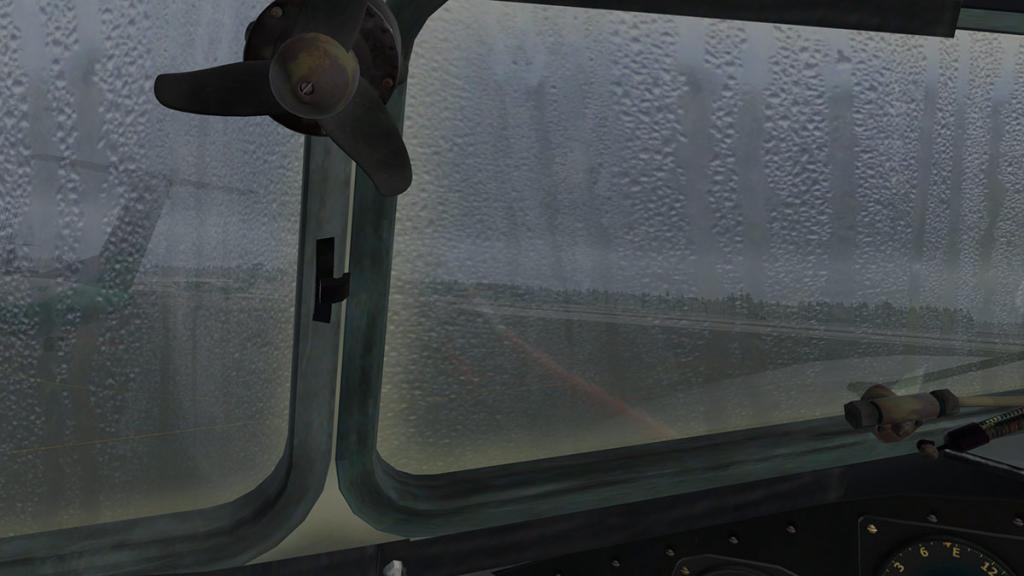
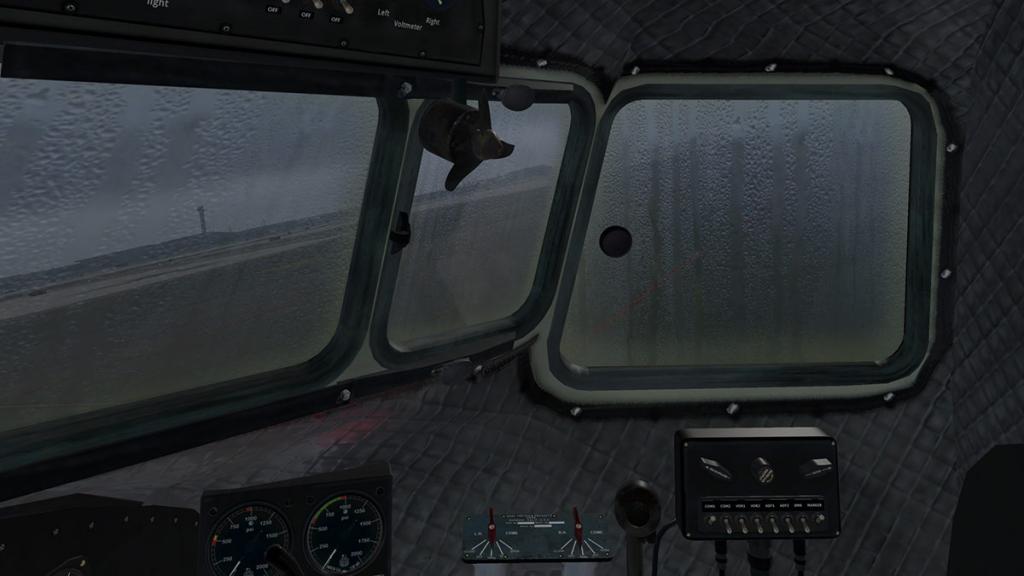
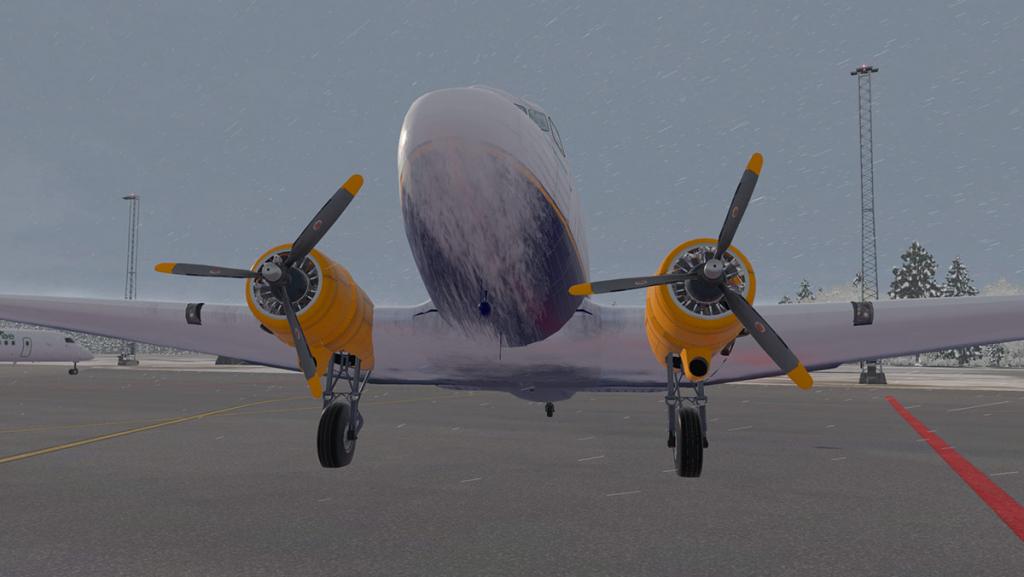
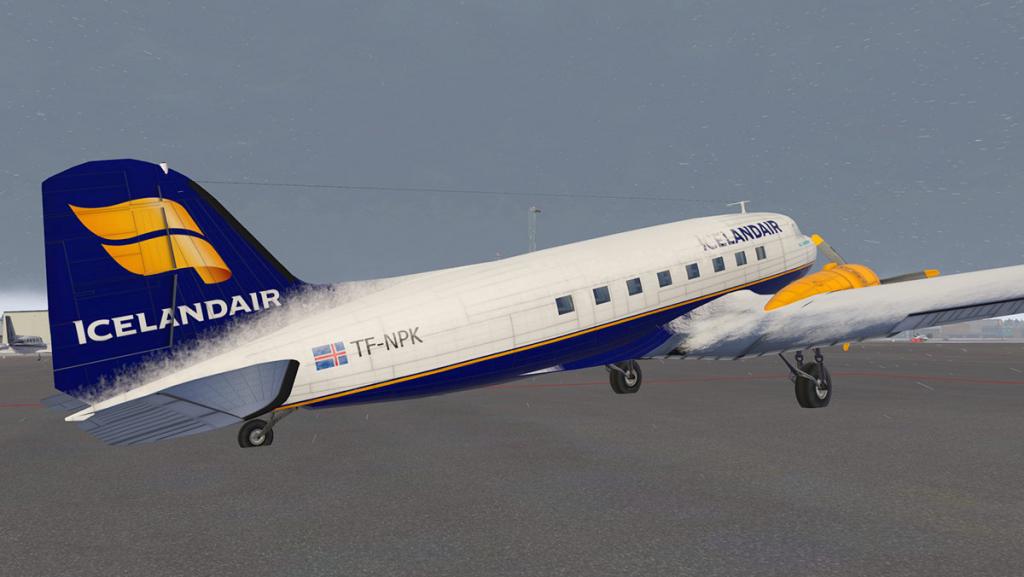
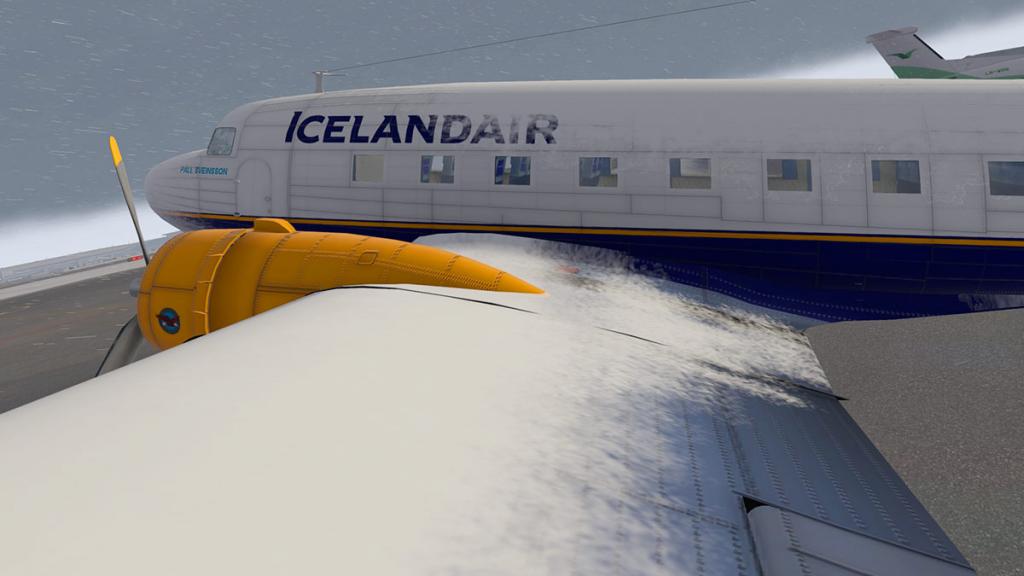
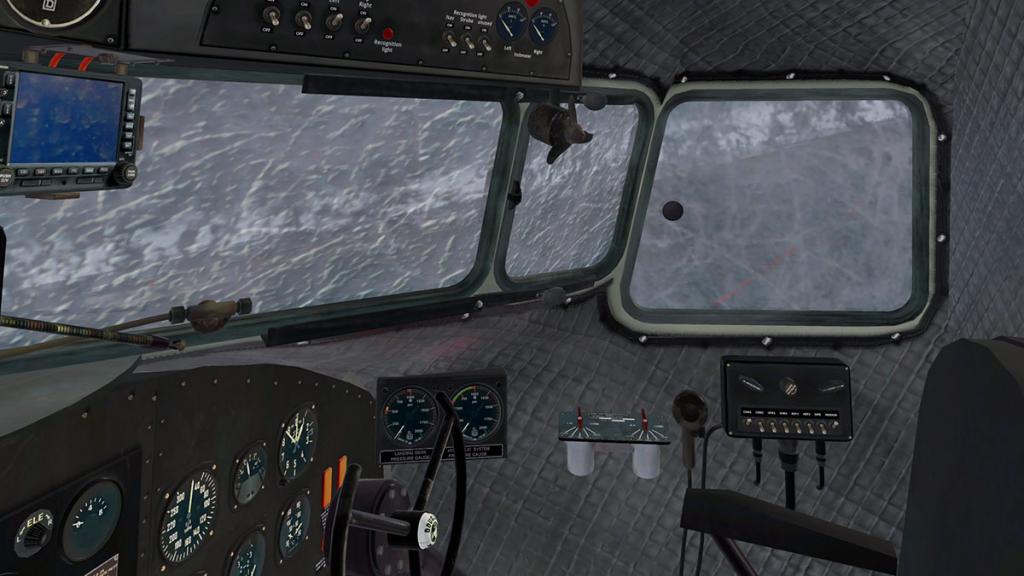
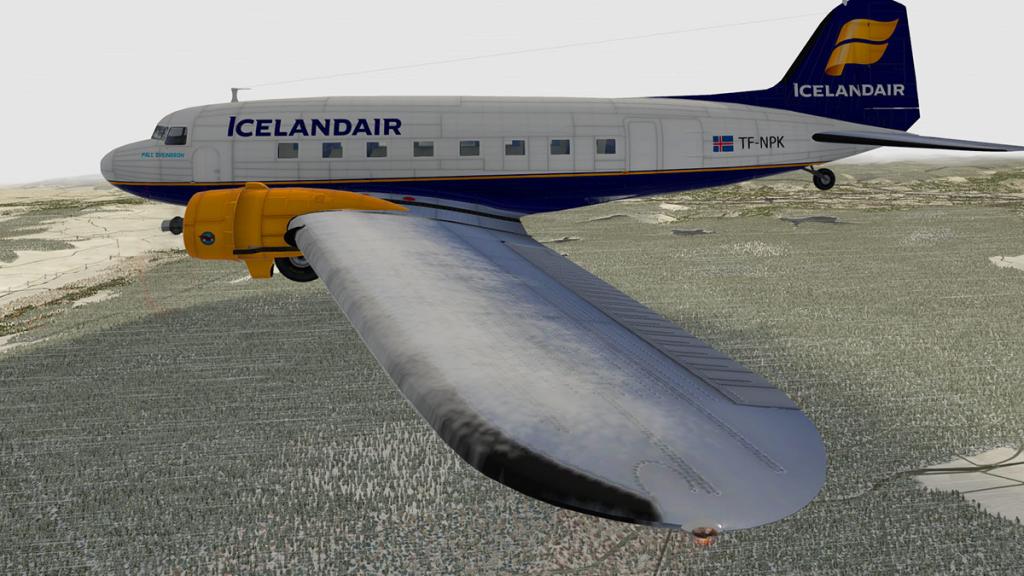











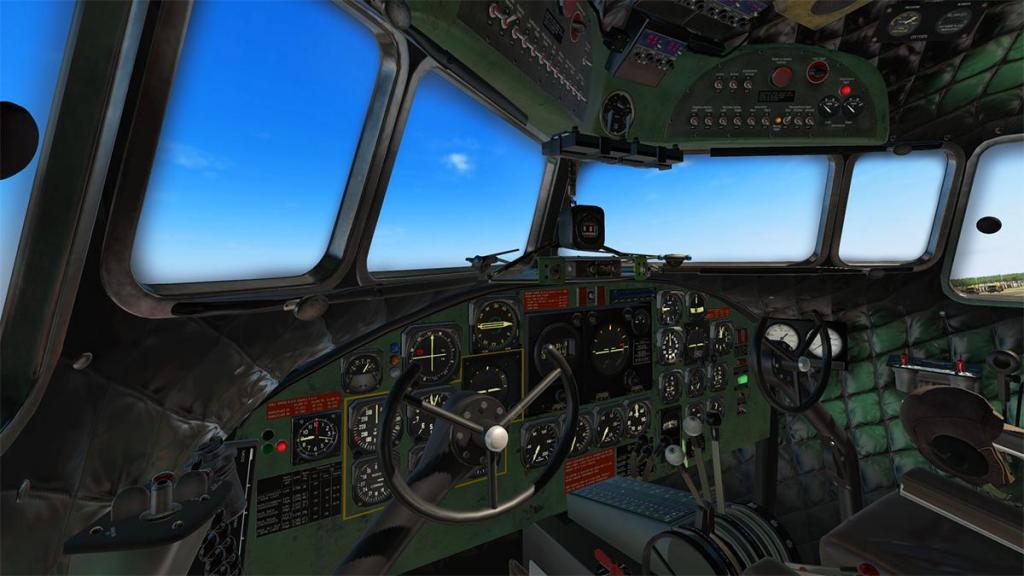


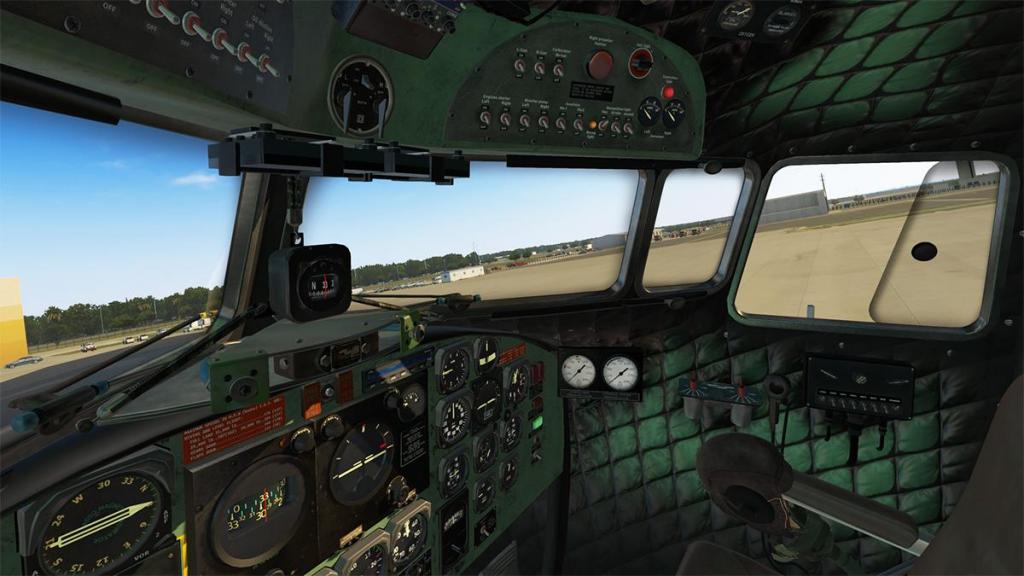



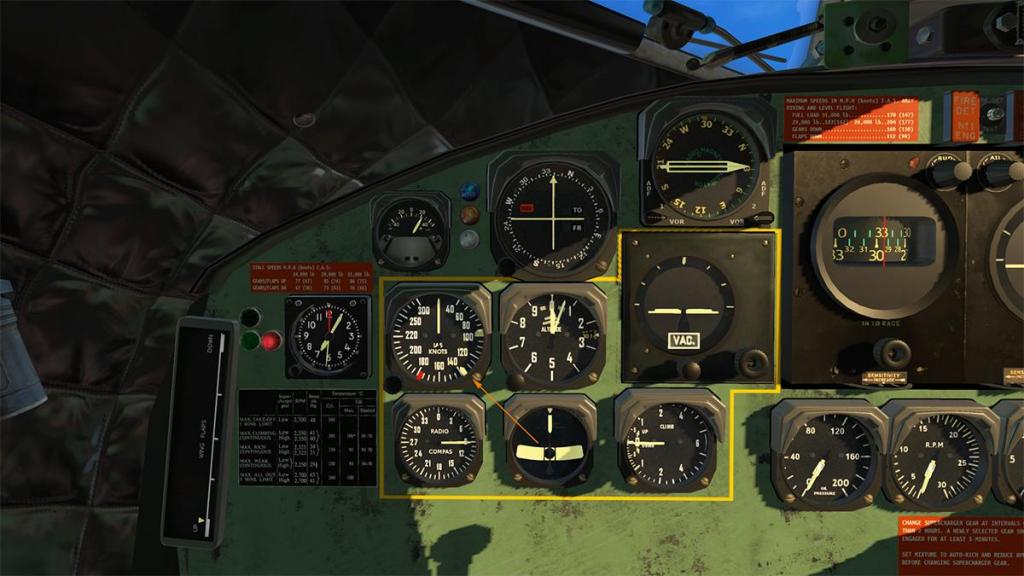






















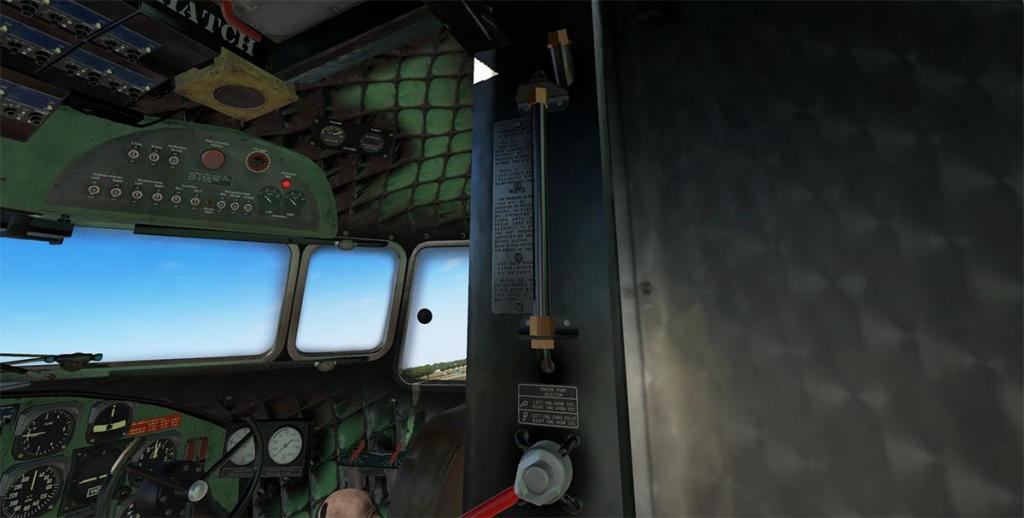













































































































































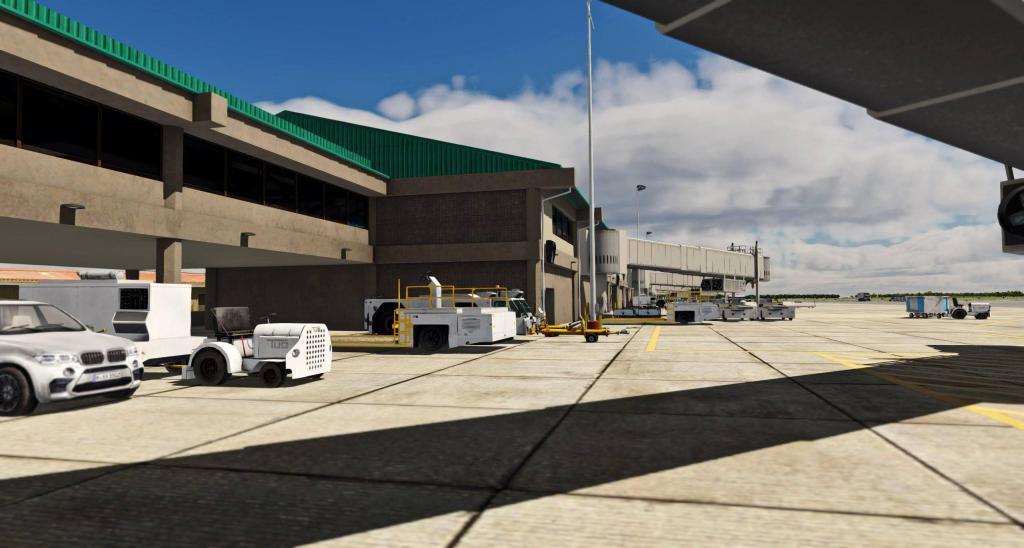
















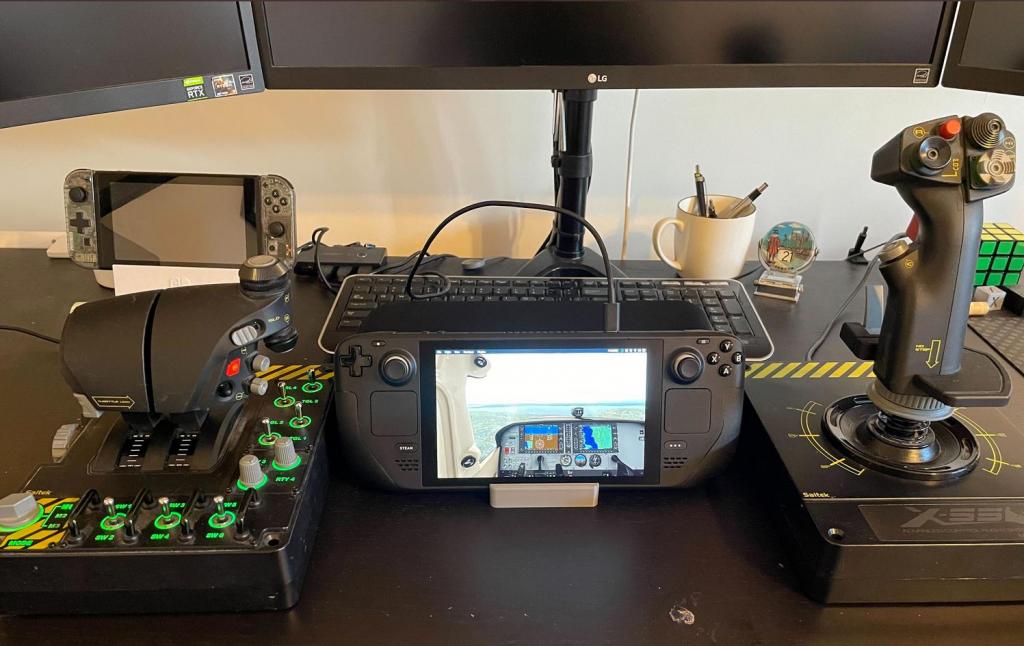

.jpg.eea8a7c011f74d181d42aa0c882b6f96.jpg)
.jpg.c373cf86d605ceabe1be9a17c8f38e09.jpg)
.jpg.2757448217f3b4d7024d4fd4803bdfa2.jpg)
.jpg.be844c803e44ad22d66e94133f8d2686.jpg)
.jpg.a94c2373e4fb7f9d1265d9a53cea167d.jpg)
.jpg.177e84593e80c1baa480864a91306d73.jpg)
.jpg.4ee8f1cb168168ffb45265a8751b5070.jpg)
.jpg.cff9d517f1a9a56fb6cabf3e66fd5820.jpg)
.jpg.b21110b81f6bfeb25ff10f2ed457fd7a.jpg)
.jpg.42e0630f6b102e72571bb1d056a76a7f.jpg)
.jpg.be652fef5c668ffd5c1f80e4816c368a.jpg)
.thumb.jpg.0d6fc888fbaff6531f044d6a6d298c13.jpg)
.jpg.3d3456c55ffec39a7c9e20682b3e43c3.jpg)
.jpg.75ebea327ab9036c4036393656ccf507.jpg)
.jpg.c0d6dc36c8649f42351c3ea31c504e19.jpg)
.jpg.6ce46d8fb6d61baeff399d76e3c2d563.jpg)
.jpg.64d1e2f9118f3ce581137b60d9df1478.jpg)
.jpg.14622973a086f16bf9483cb594a2f480.jpg)
.jpg.ee331792a954e1268e70a9a6ccd2aea2.jpg)
.jpg.ba5535496f117aab0e3d5017e8cb6c34.jpg)
.jpg.3d00244f7631ba37268de8a812be8748.jpg)
.jpg.5c45a2d8a92e93b0f149403728dee4f9.jpg)




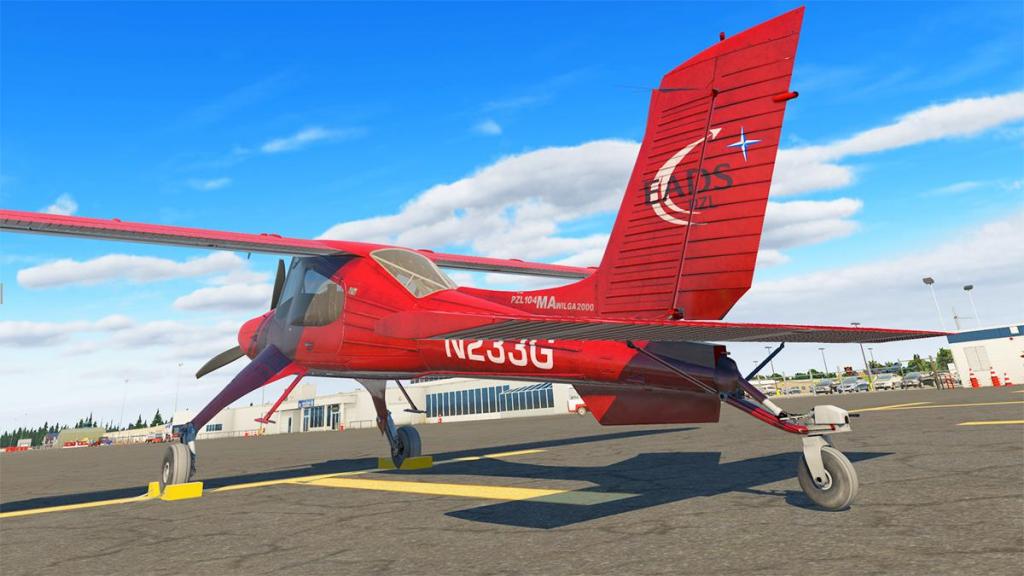
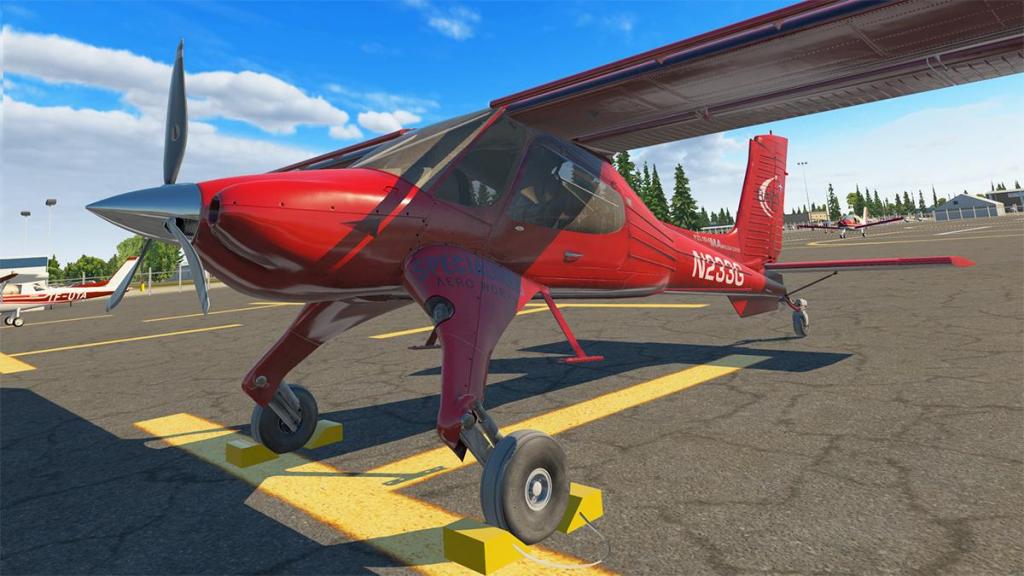
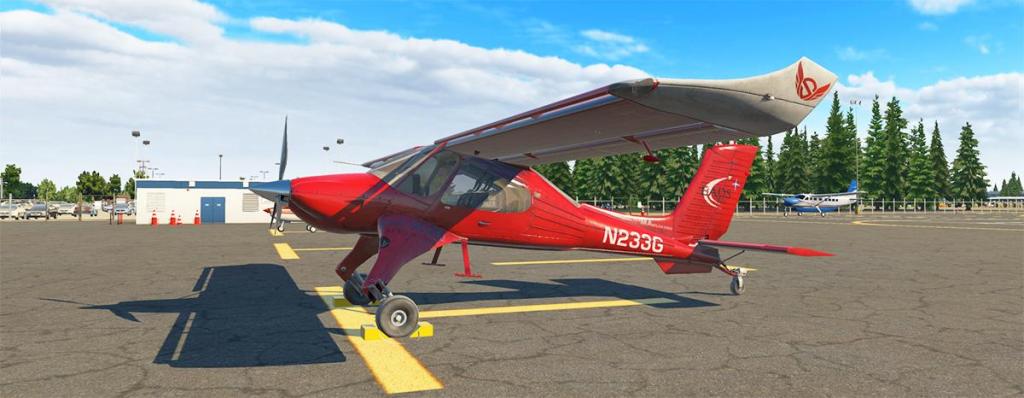





































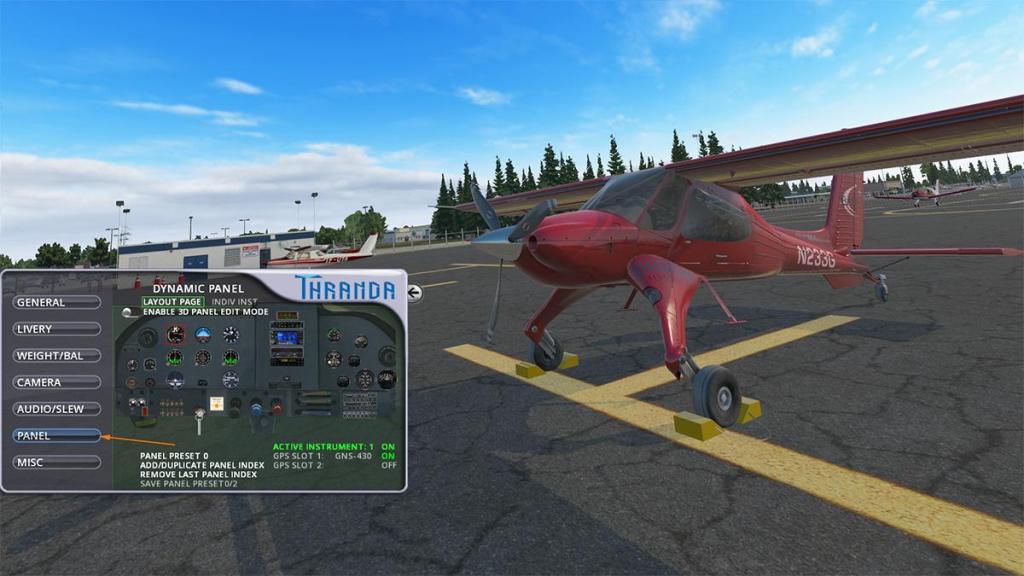















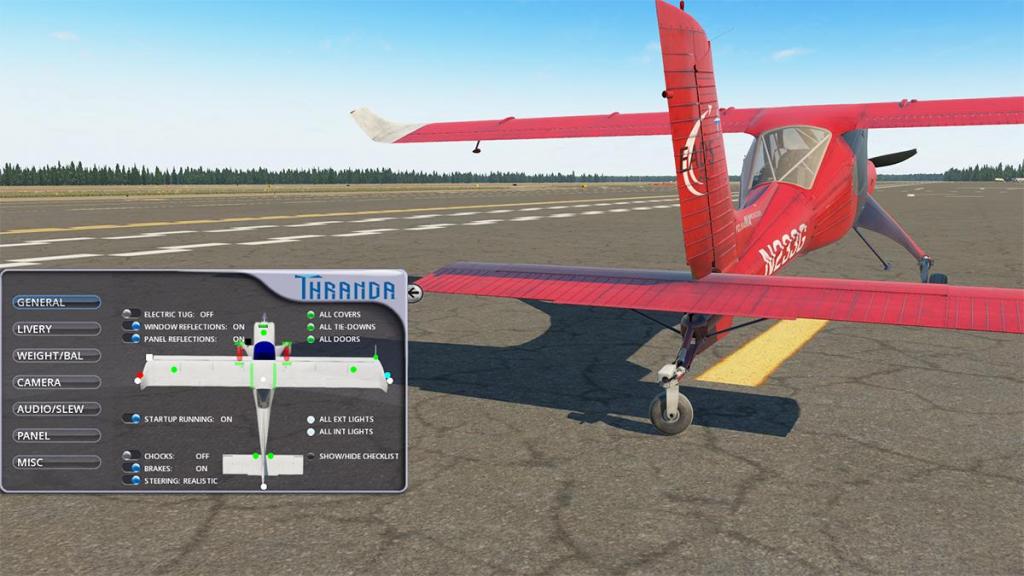



















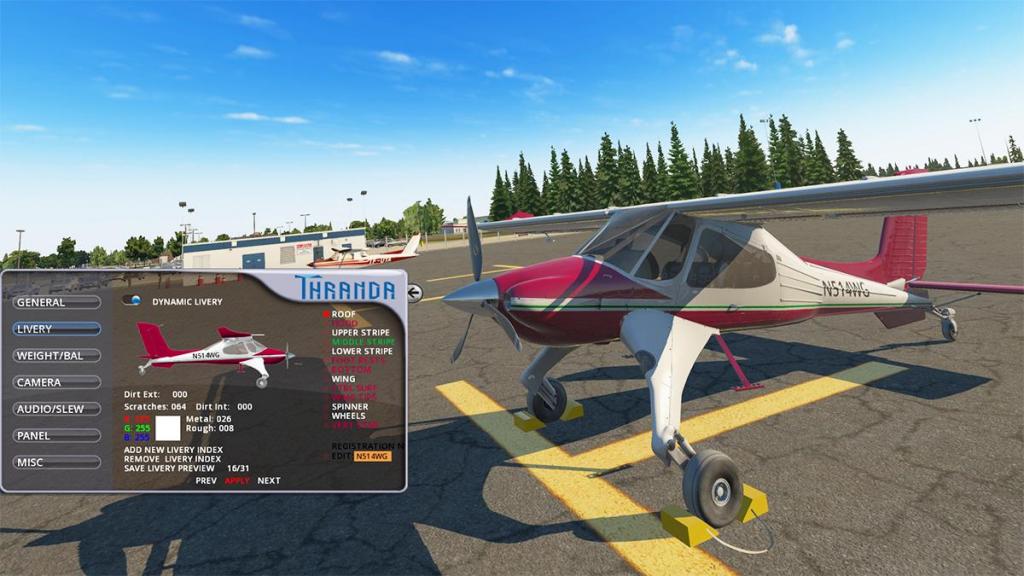


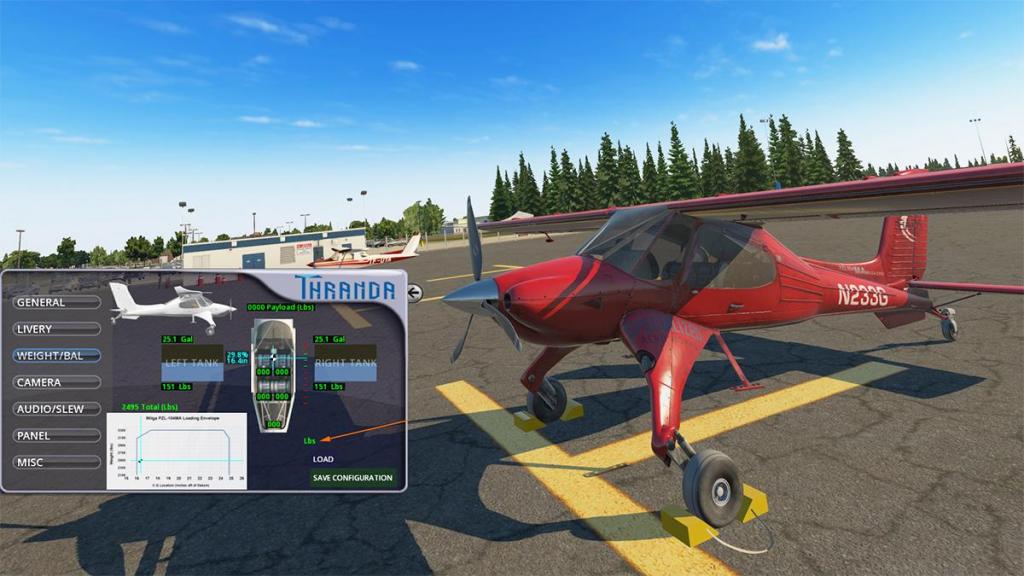
























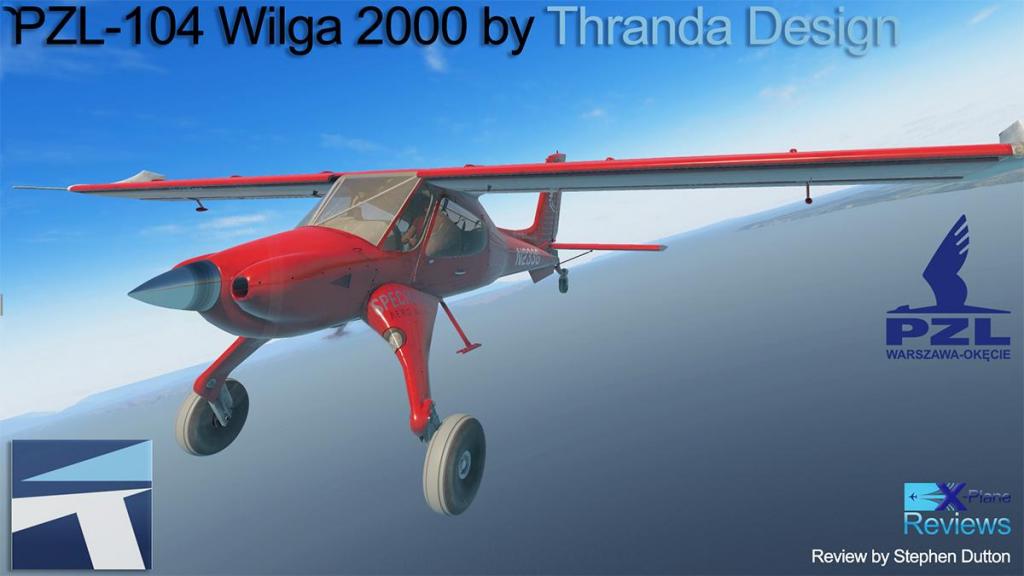

















































.jpg.0d6e7536972501b74cd2429c07f75f3d.jpg)
.jpg.18e9ccf042d748a72889279138d2be67.jpg)
.jpg.e6c997cc5d71950b7571d1eab5bc5dec.jpg)
.jpg.4f64633702c1ee00305e3c279df67671.jpg)
.jpg.821bd332b2958603fc75767d59f67ea4.jpg)
.jpg.d8e81740396e84975f09114a7a424469.jpg)
.jpg.ba1c09ec24d4da336f0434bca0371c7c.jpg)
.jpg.bca97b094499960005ca26414d65767f.jpg)
.jpg.3b334472c45fe9f974dd965e7f5adef5.jpg)
.jpg.68dcab7b1b6511cdff8fba92522fb7ae.jpg)
.jpg.a01a10b9679987d66c0a594595e99ca4.jpg)
.jpg.2518f42fa30335a3e205496da024b641.jpg)
.jpg.53ad740cd1c03702af10c58edbb4b527.jpg)
.jpg.76104a440bd5959b9d06cc406ae7fa75.jpg)
.jpg.8aaddccf36aae9da9c7576b34d6c0454.jpg)
.jpg.f226562e8f568e3b194c3d1803e418b6.jpg)
.jpg.e889a2ac3fc6b0f08d1896c745ba6b0c.jpg)
.jpg.253d852ab52c3c566c8f6d829cbcb58f.jpg)


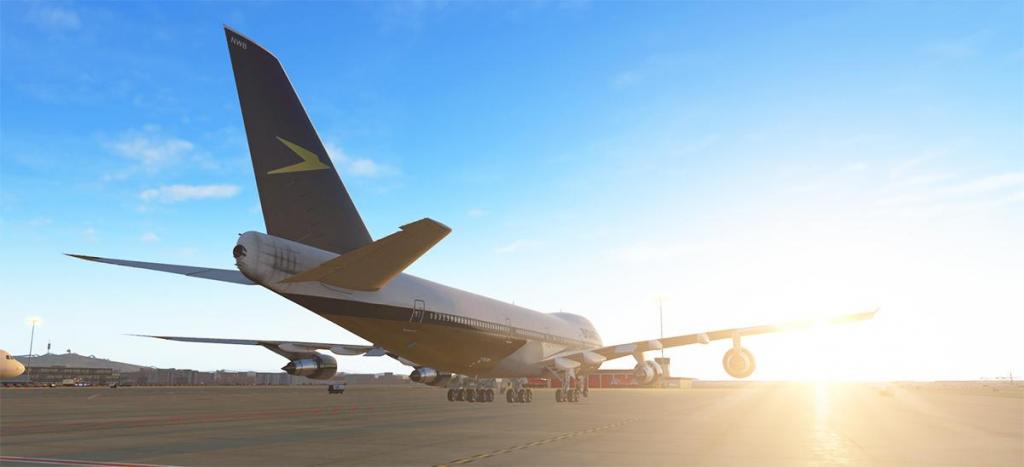
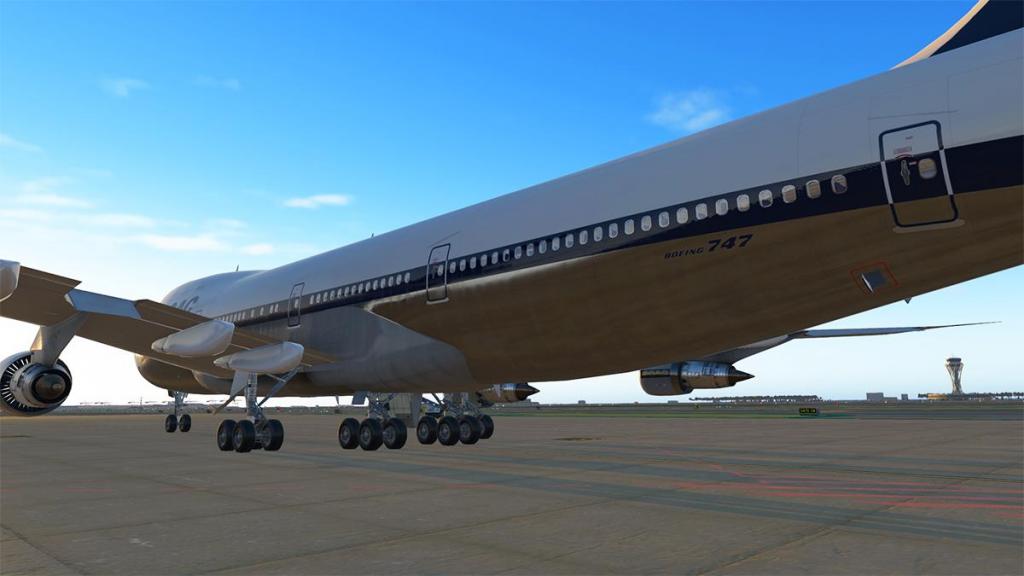




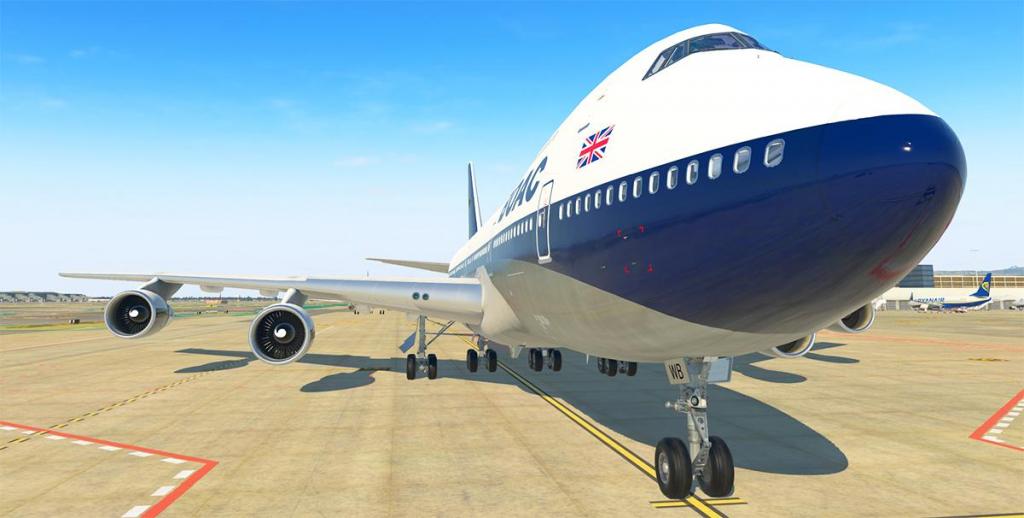









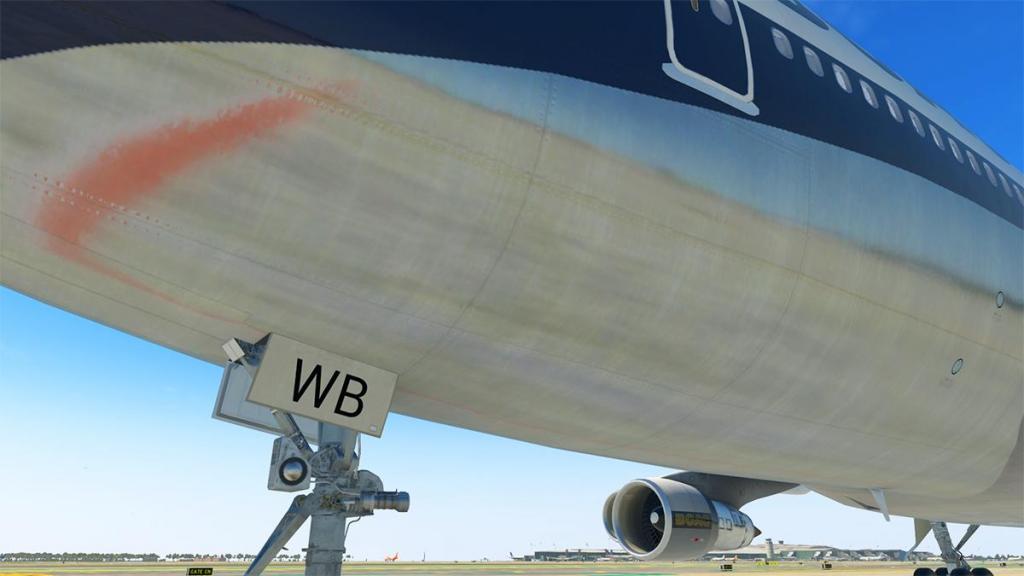






















































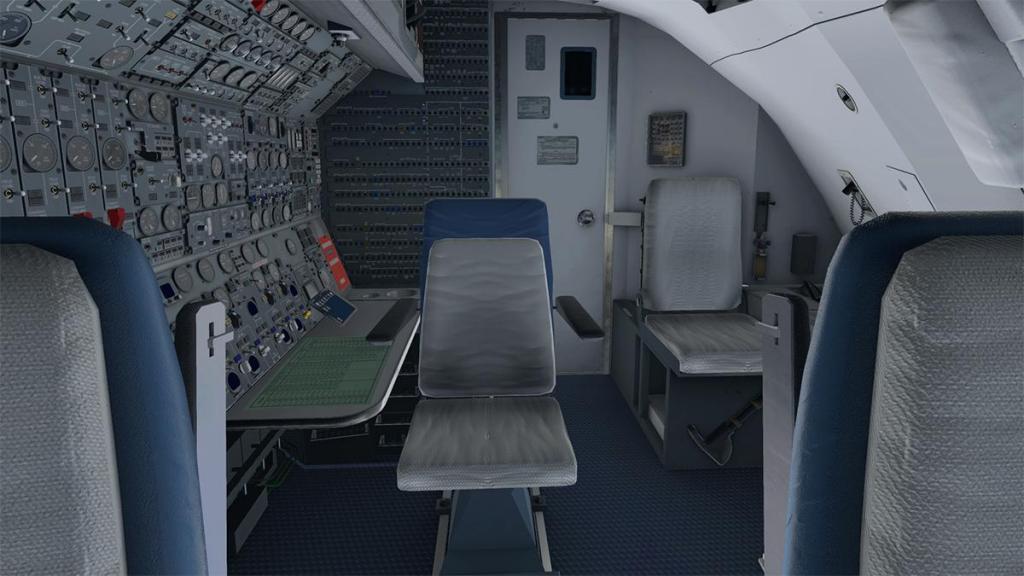
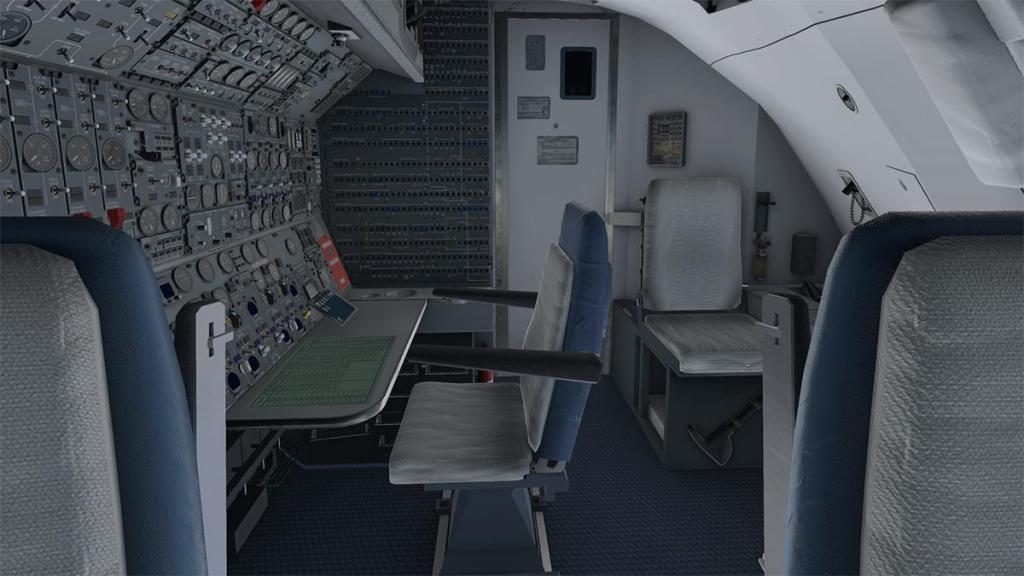


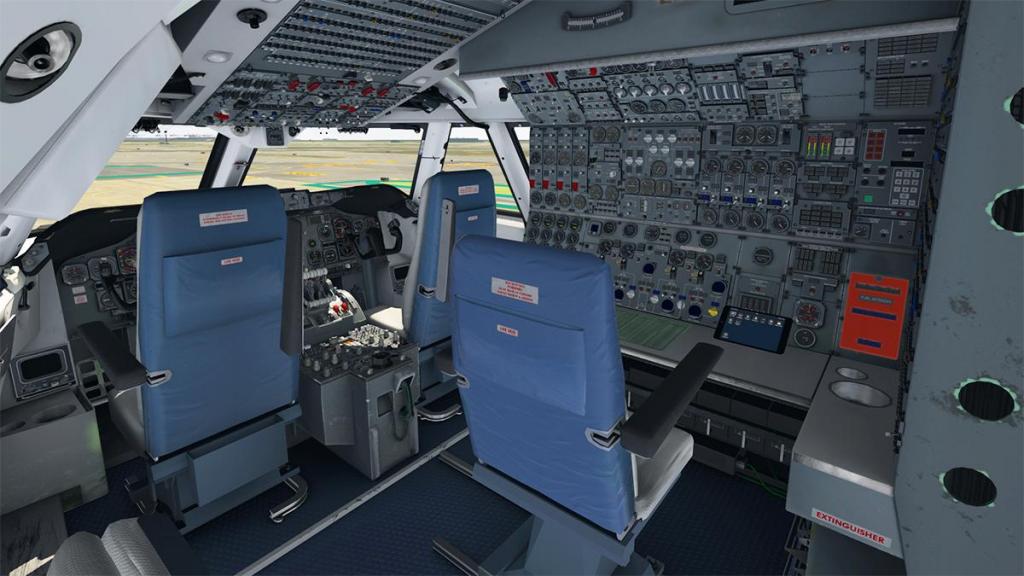


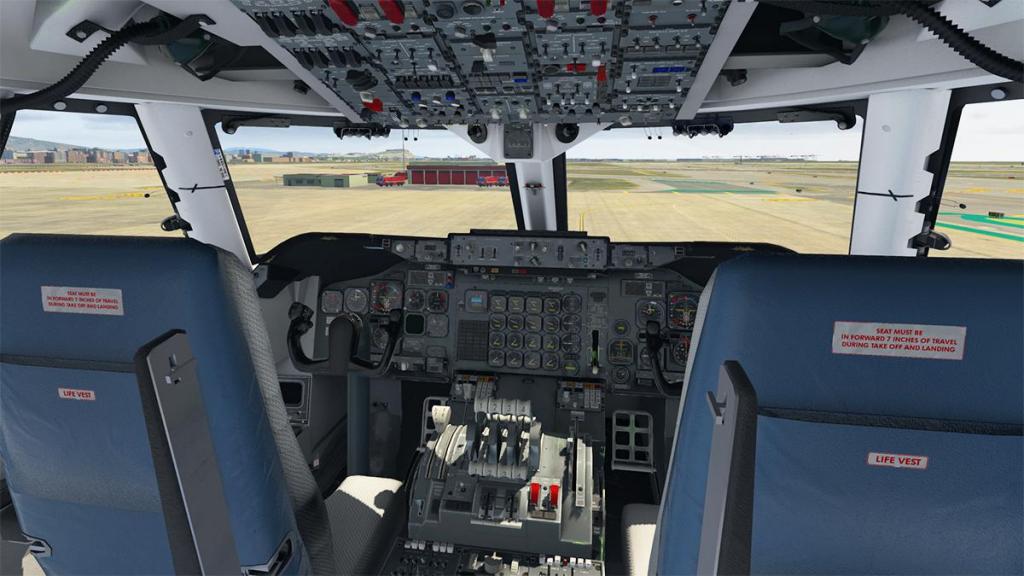







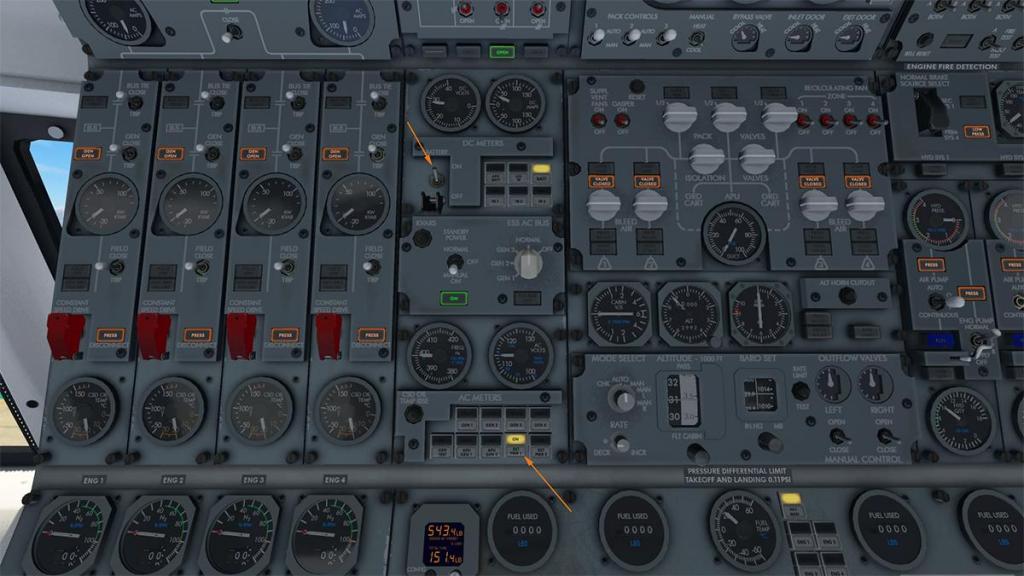


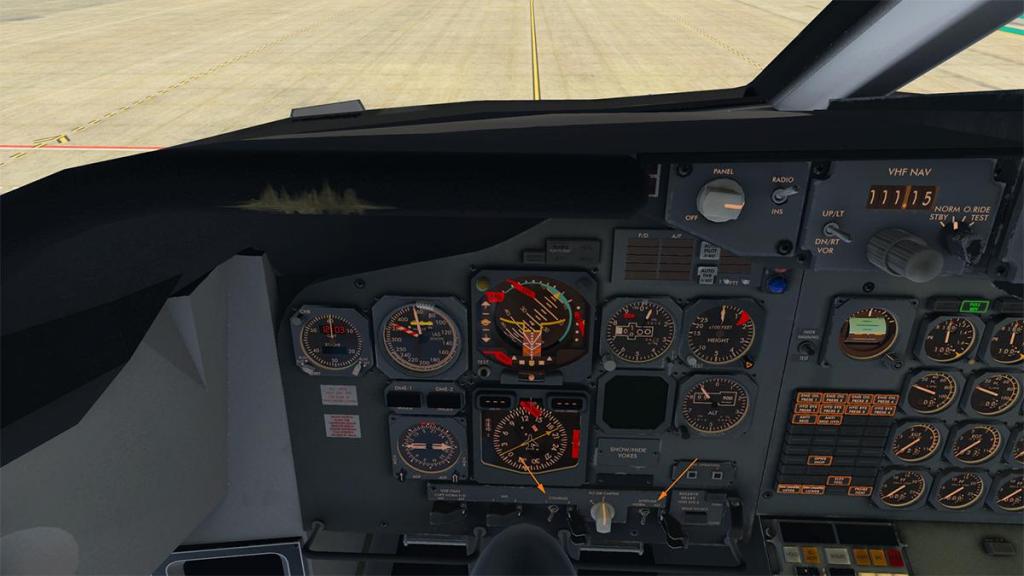

































































































































































































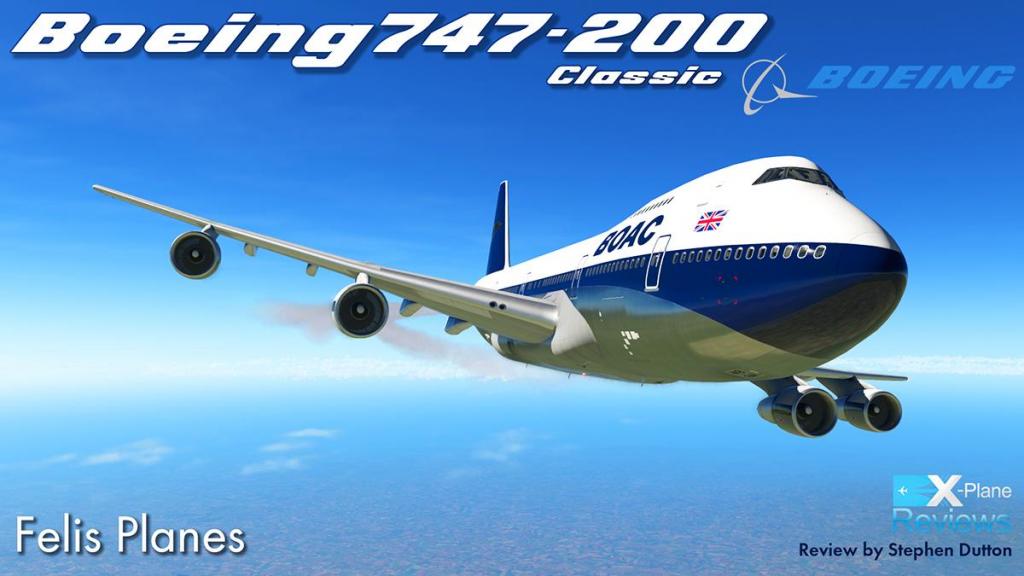





















































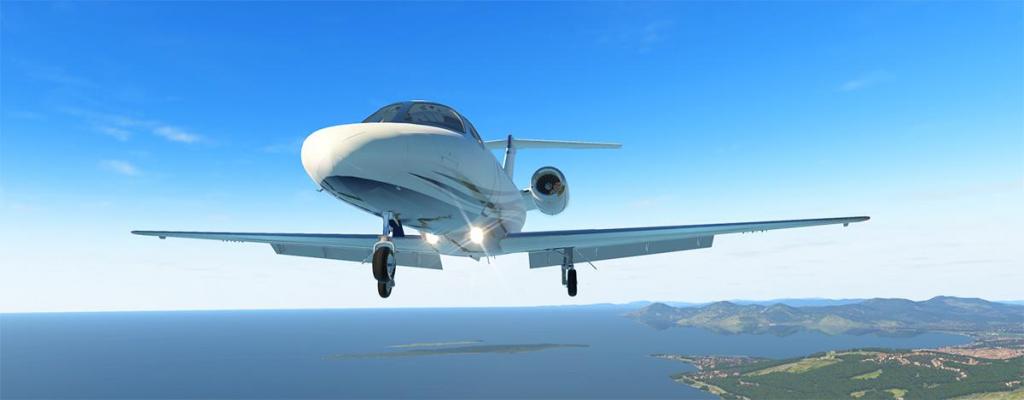



























.thumb.jpg.f792f6f6cc51a51258d696e93a40e3d3.jpg)
.thumb.jpg.cdb2c042e1e519f648b86eab2c6037bd.jpg)
.thumb.jpg.c4b5476f2a4c6a67de1ed7d64fad0d53.jpg)
.thumb.jpg.c789e23b1d86cc9941c21faaeb50750a.jpg)
.thumb.jpg.e77d3f14ec46ed703ebf79a2bdaecfe5.jpg)
.thumb.jpg.b0906538ae4214b00bb4335276b80fb4.jpg)
.thumb.jpg.e62099309daeb0f529bde8e15fe59733.jpg)
.thumb.jpg.4be98e0029eacbd5c57a87f96650a605.jpg)
.thumb.jpg.8eea58381cd93884eb5c3d225d88d2a9.jpg)
.thumb.jpg.1c30f2e119e6c1ec47a7e832c25eeb64.jpg)
.thumb.jpg.de84850f85c409e2ebb46f249fb8d8aa.jpg)
.thumb.jpg.c3ad348b9a3228dc6f078bdcff1cf21d.jpg)
.thumb.jpg.56d86d0c7d756a803efdbfa6f47b323b.jpg)
.thumb.jpg.e74a4ef58c201cc724c7c2be3c246a96.jpg)
.thumb.jpg.aca0f26fa5693e5f821192b9e9be9068.jpg)
.thumb.jpg.46d0c624218f9495643b4f555f354e9c.jpg)
.thumb.jpg.4b2ec3b246fe4f29db6ef3ebcaeb0cf2.jpg)
.thumb.jpg.a61cebc8668a9c419629344c54afcf78.jpg)
.thumb.jpg.d3e3b00a14281b6128176567eec4007f.jpg)
.thumb.jpg.e4ea2a12fa819a965e6755c8a444d1ef.jpg)
.thumb.jpg.ba26eb0c61ecdebd90ebe5f75162932a.jpg)
.thumb.jpg.0ff47ba58df9bffff6300fbda8a614fd.jpg)
.thumb.jpg.77a9f486f3669a1e61c67b83b0f59990.jpg)
.thumb.jpg.8bb9b9a0f13d6e62b4e4c61a41206078.jpg)
.thumb.jpg.332813114291080469a5625e5c7fe005.jpg)
.thumb.jpg.686348b0faefc90887fb082a39243504.jpg)
.thumb.jpg.521e9d965cc07216a587949d7056731f.jpg)


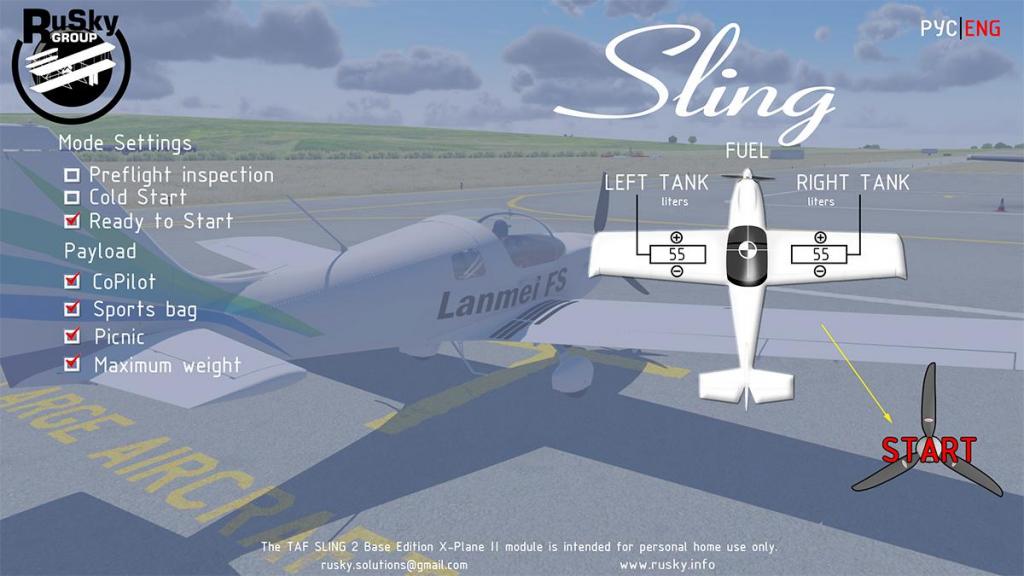
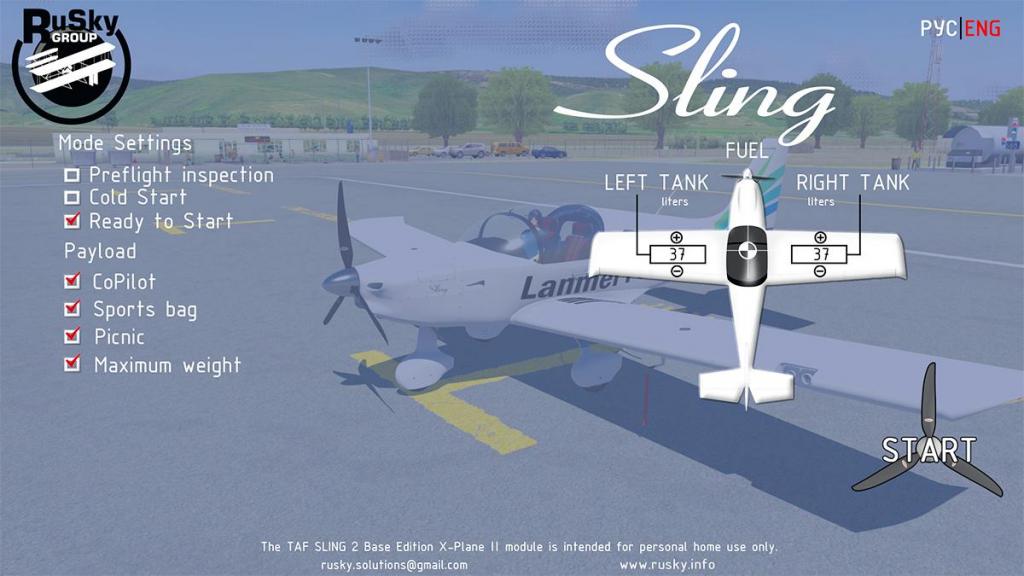
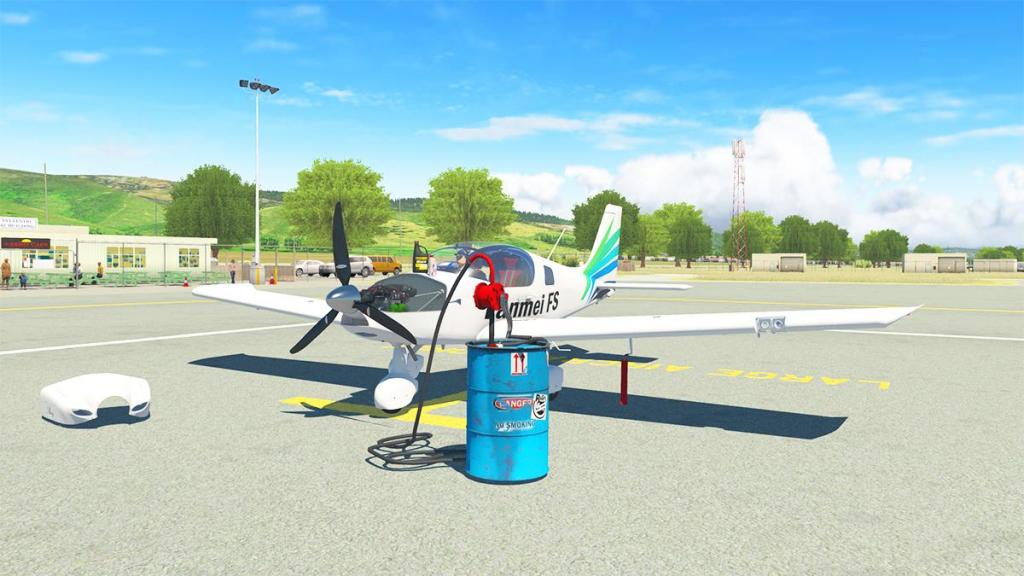
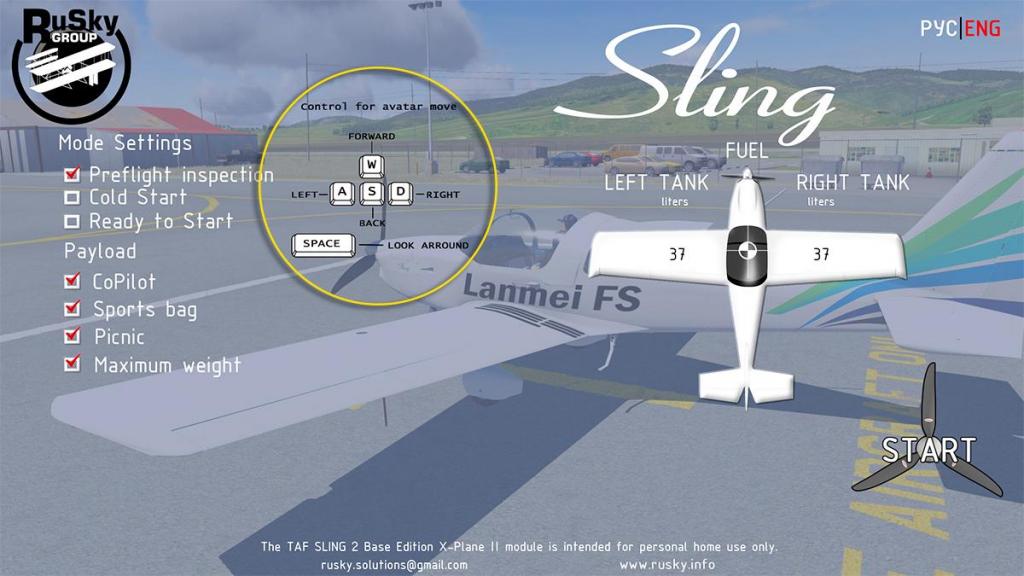
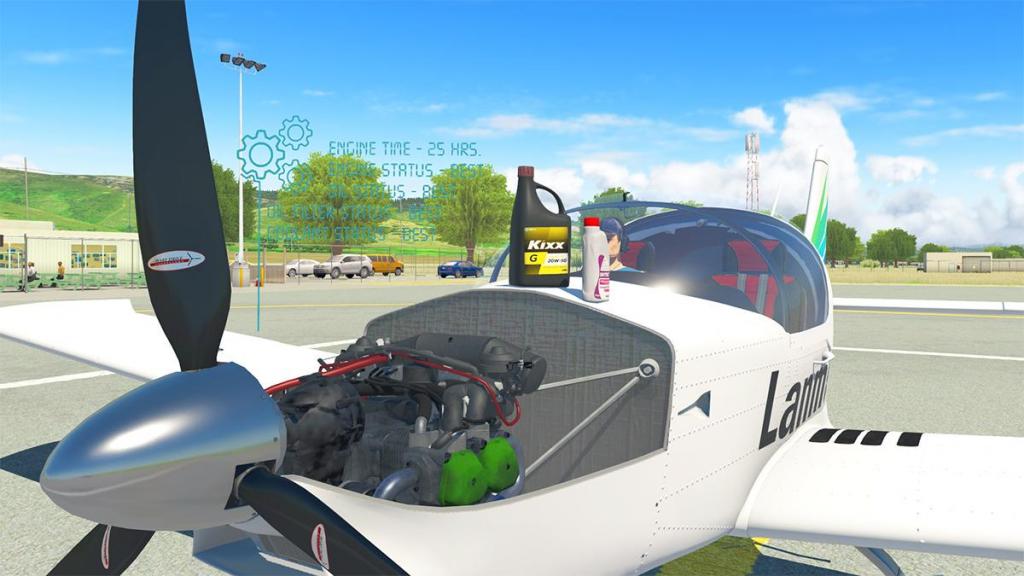
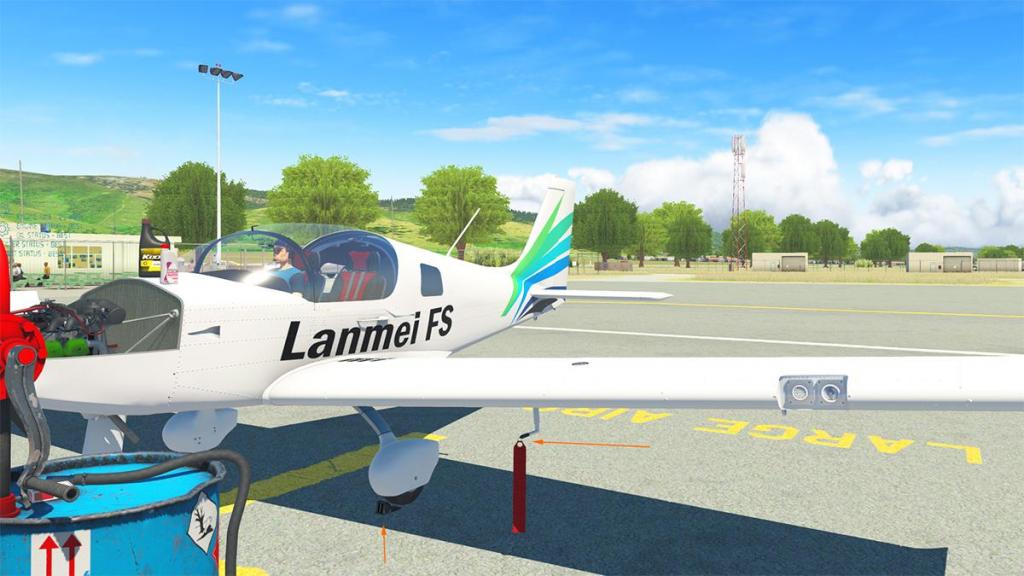
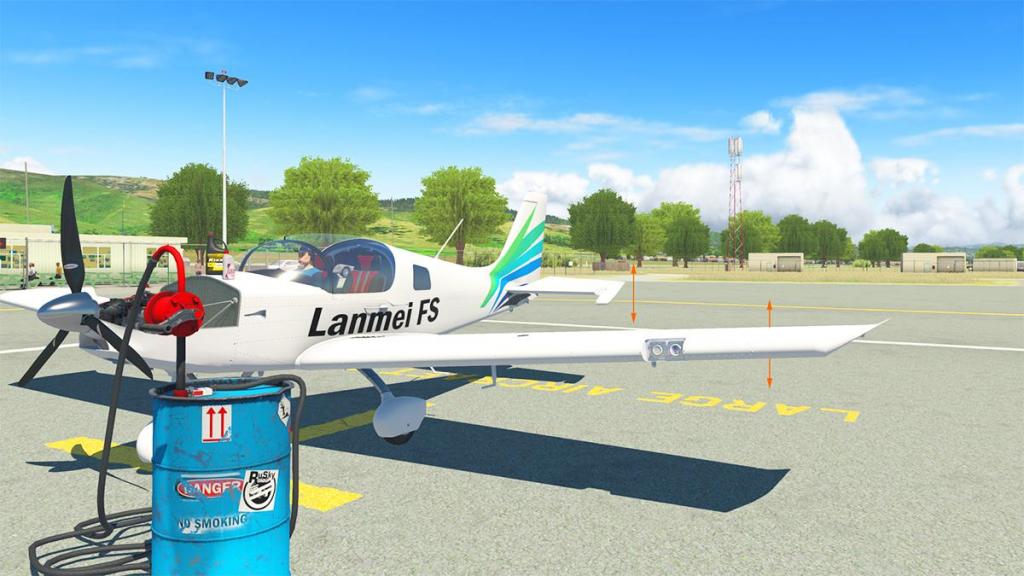


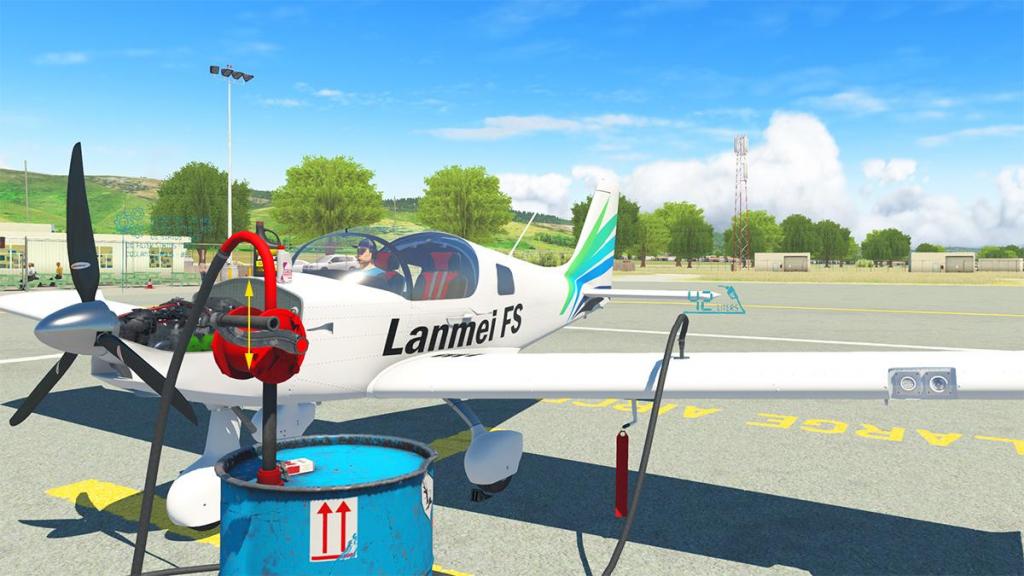
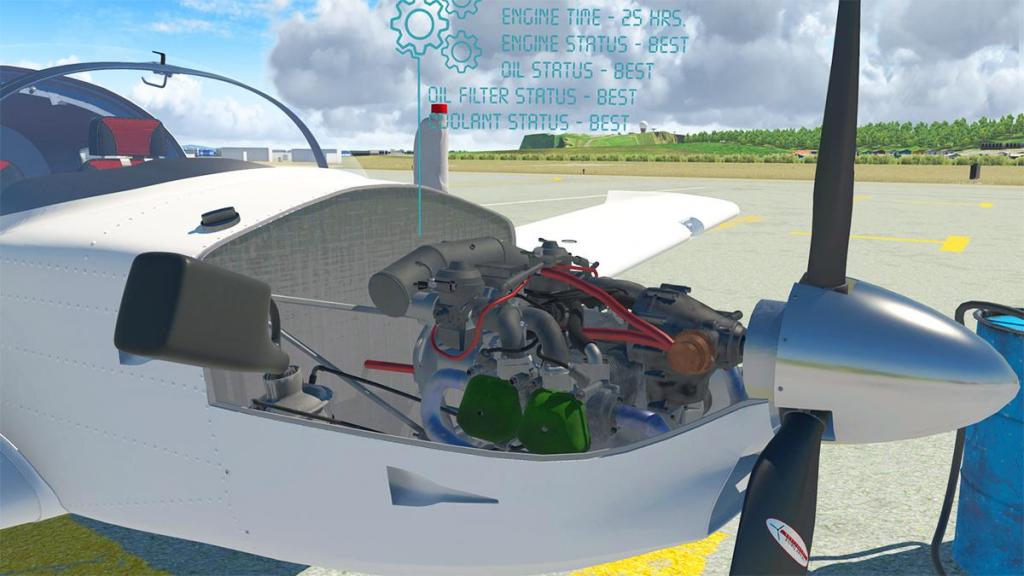






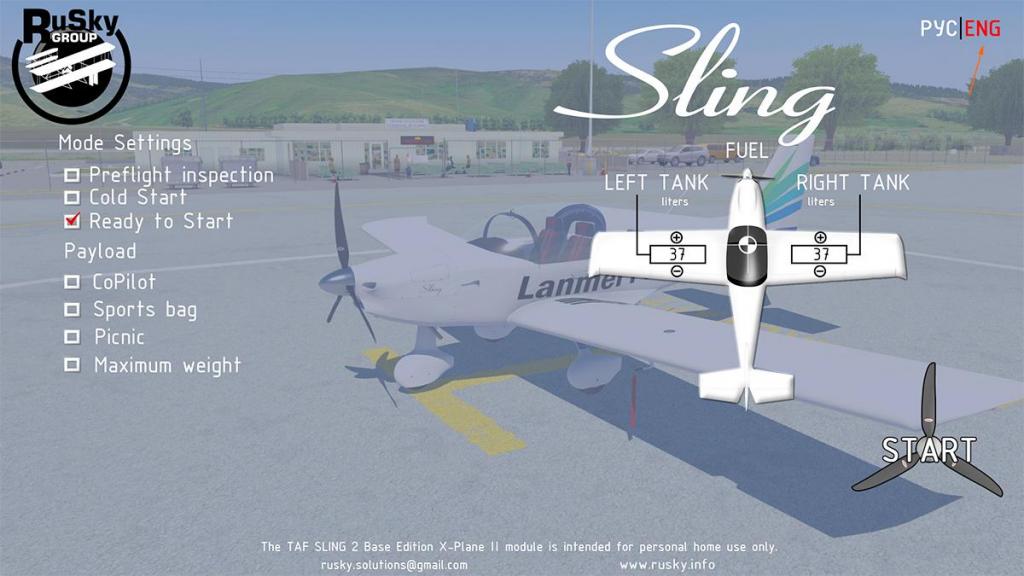
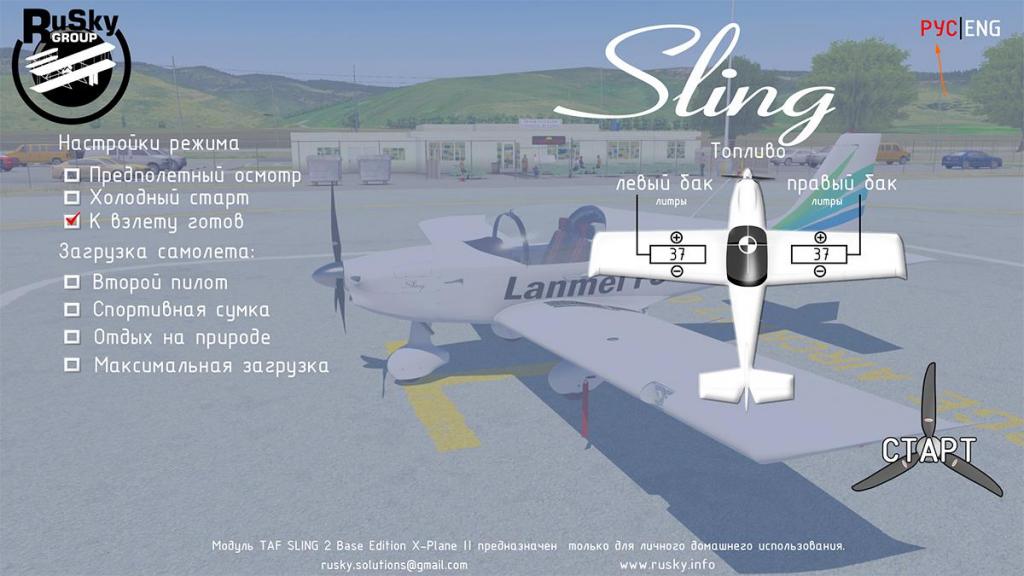
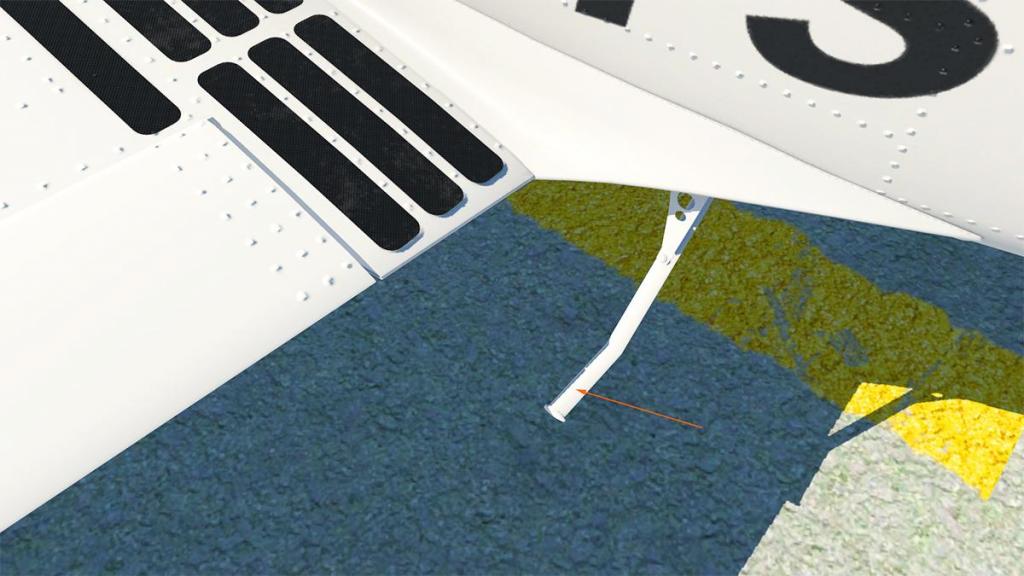
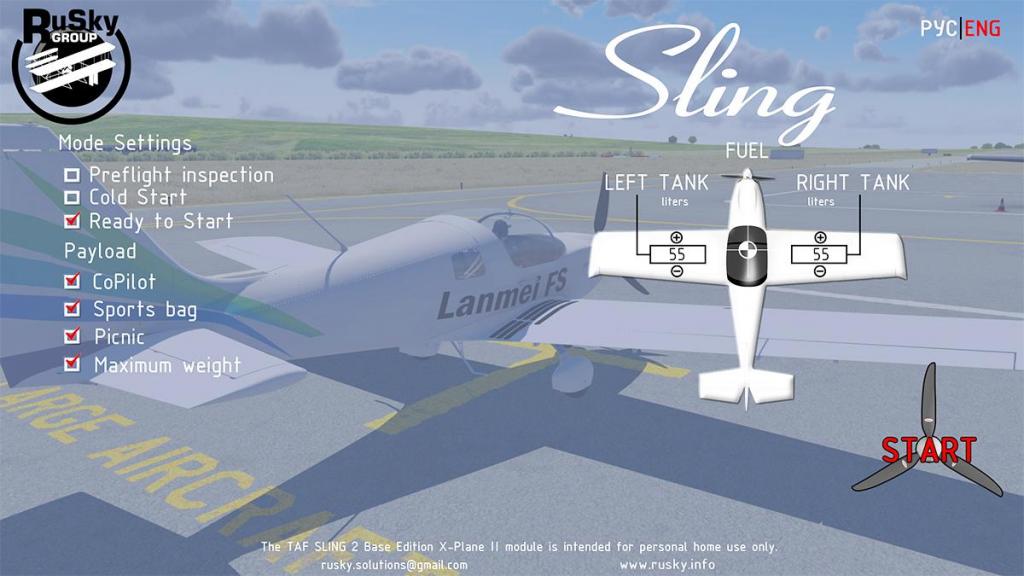



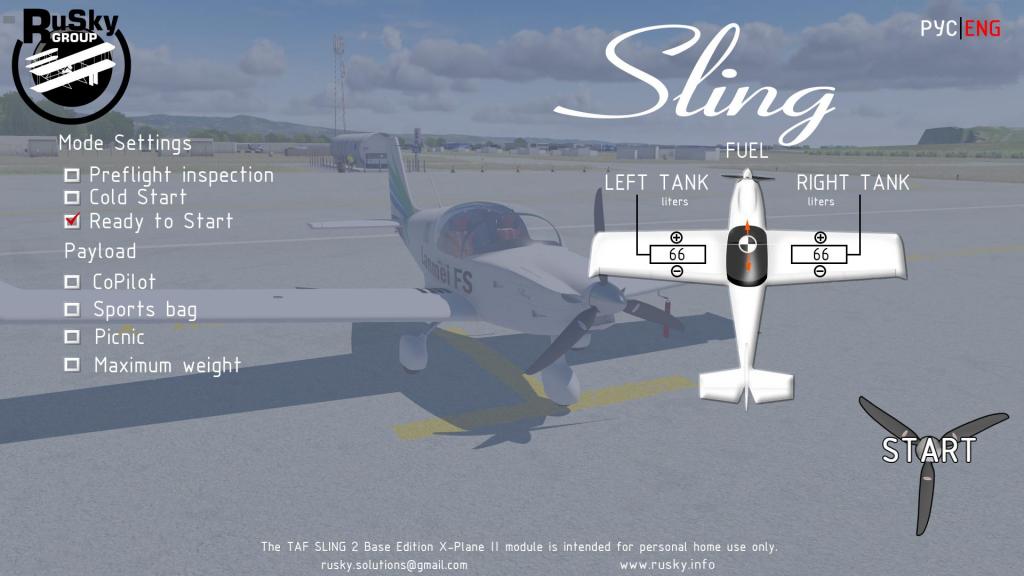
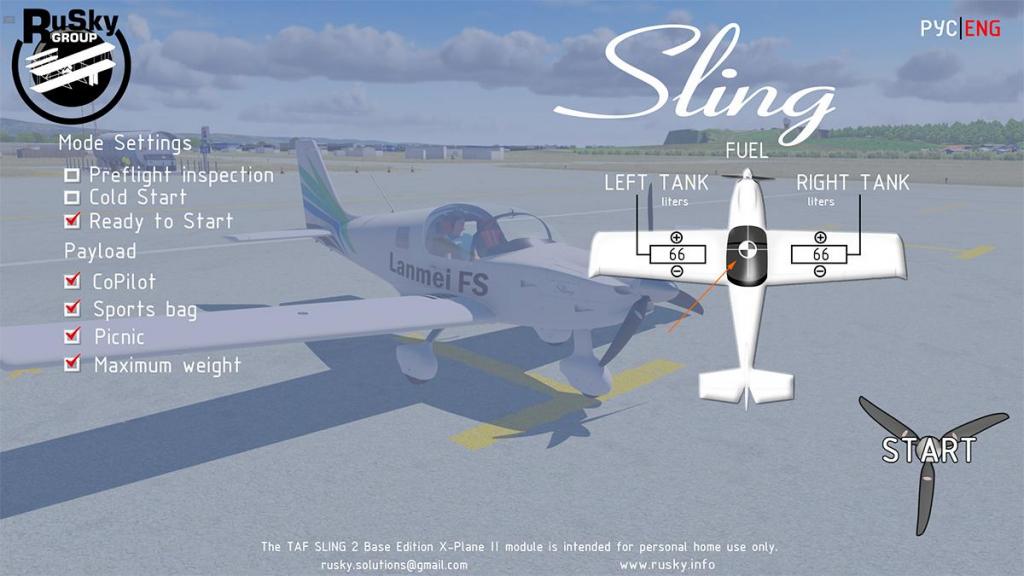

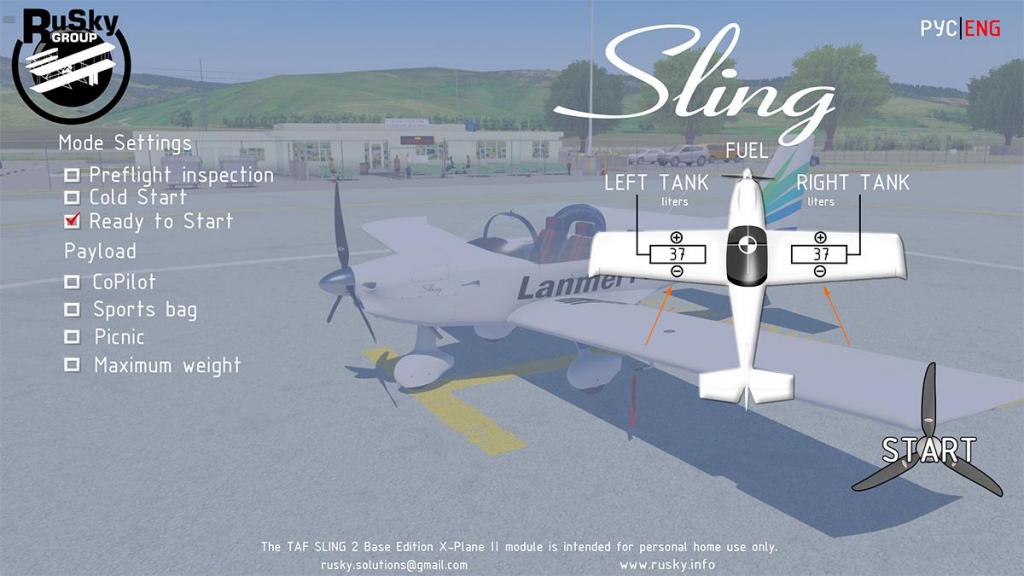



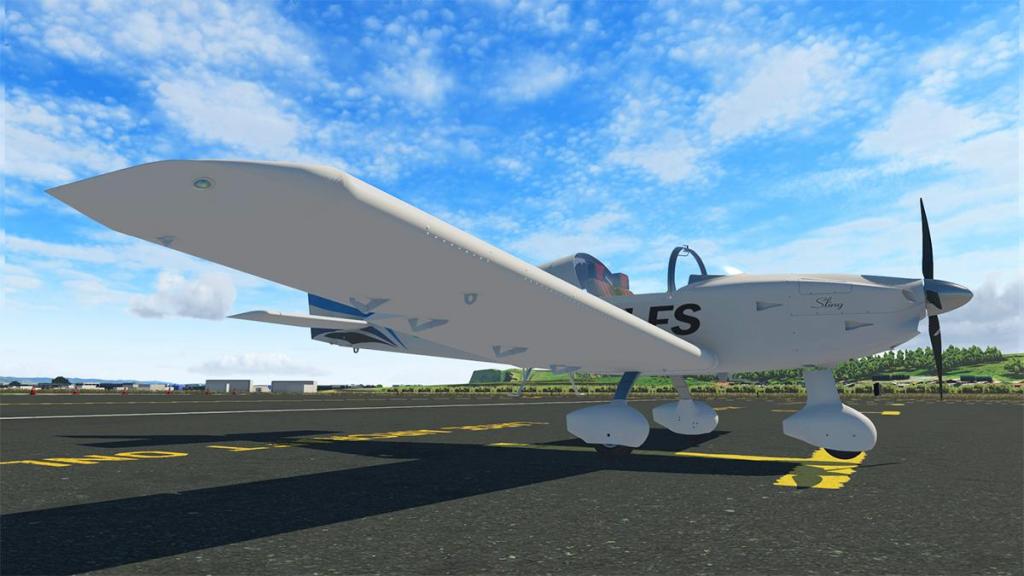


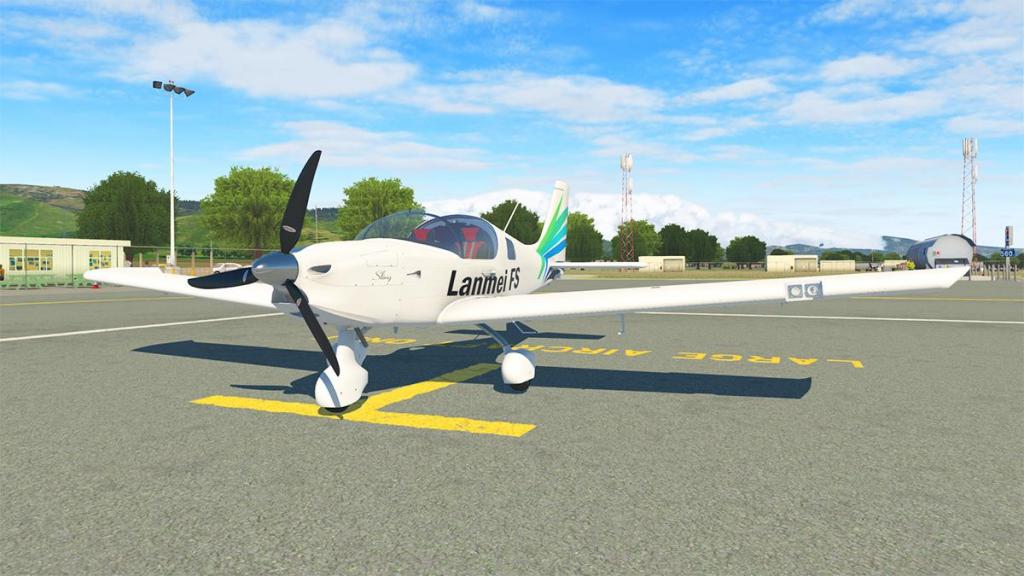



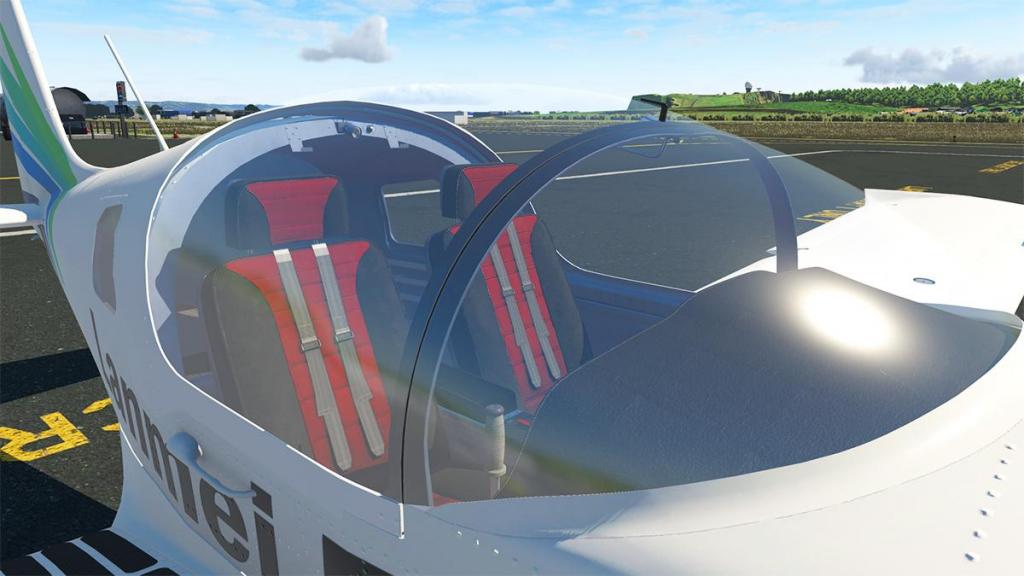












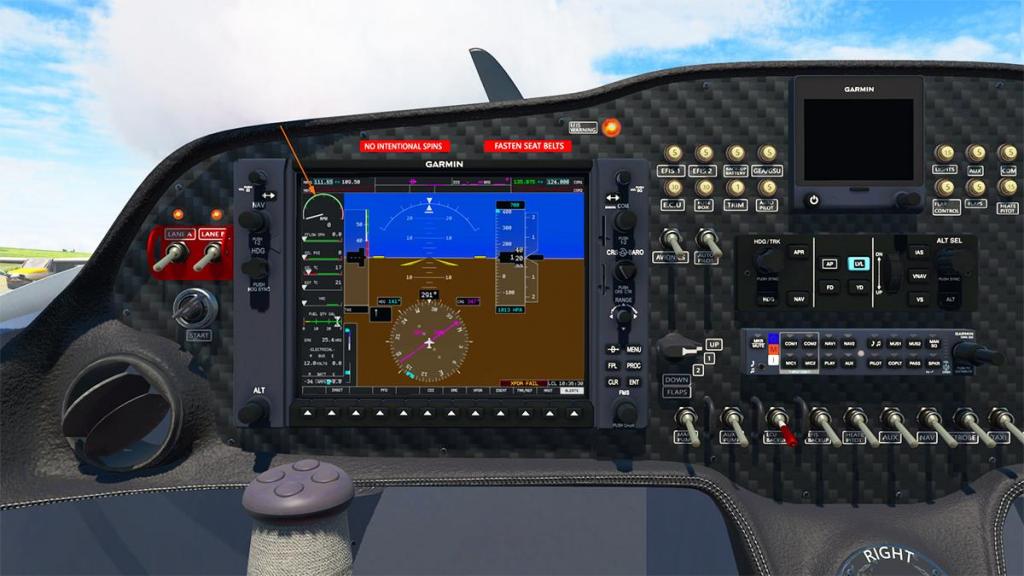
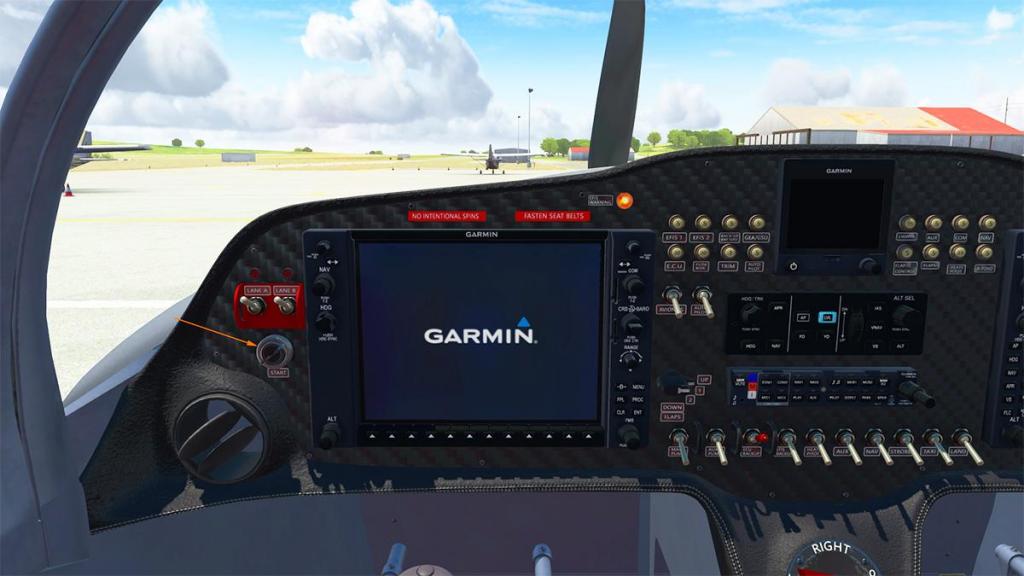

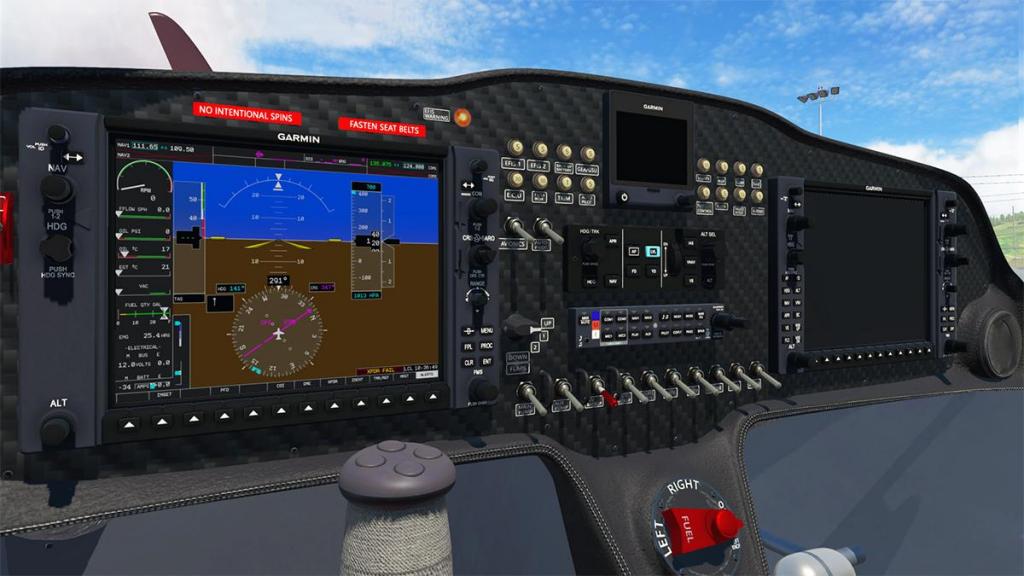
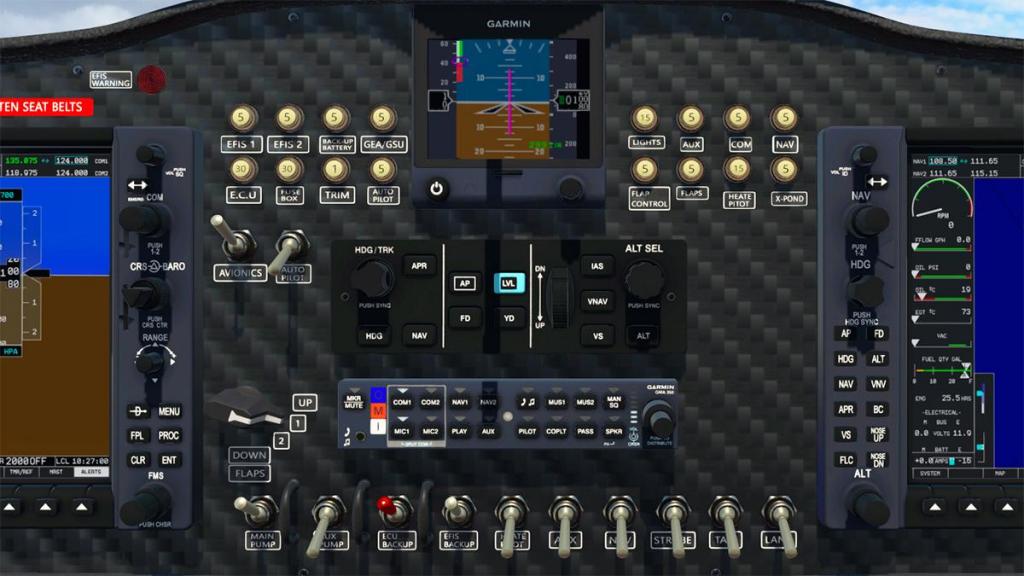
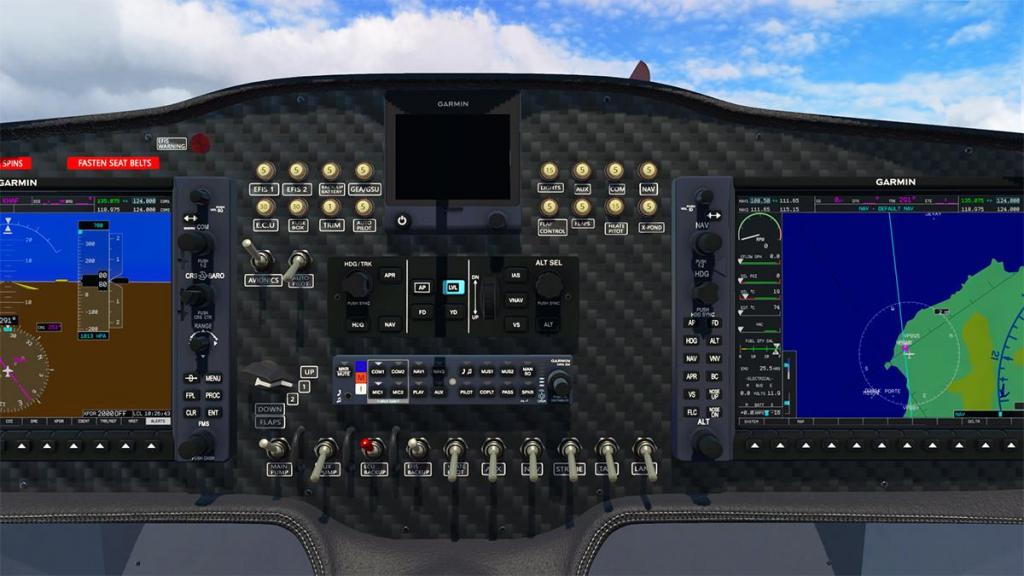









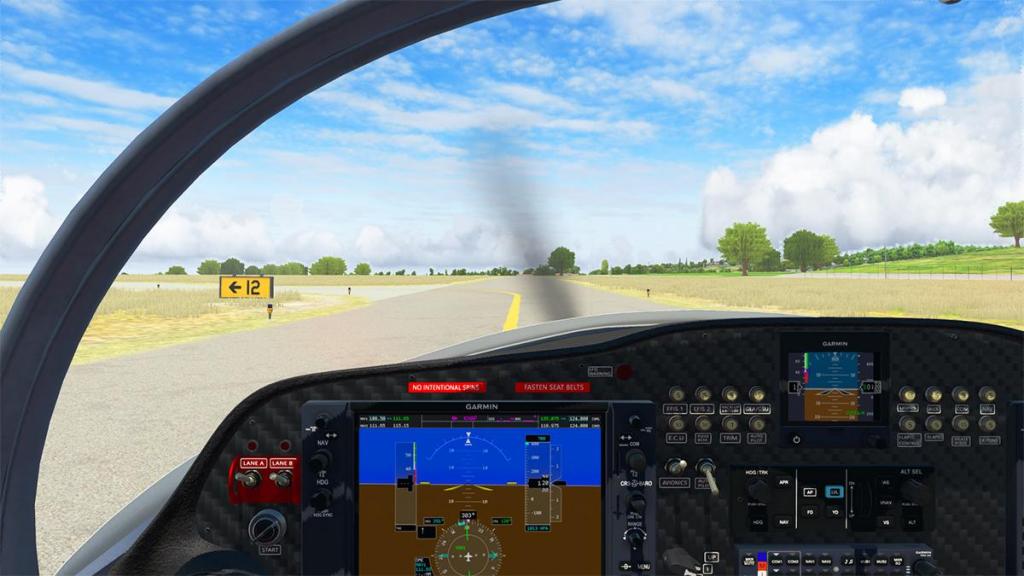

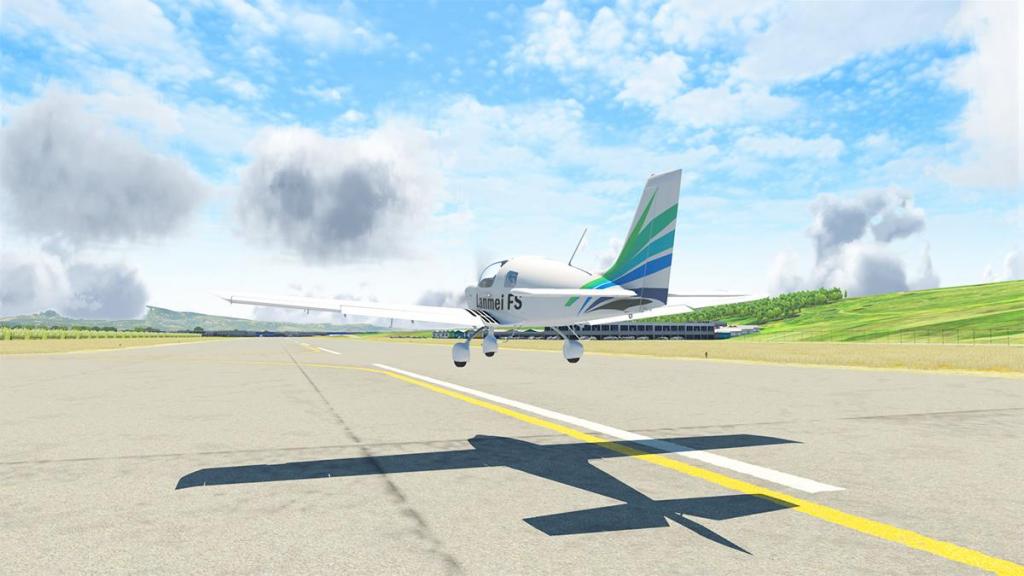




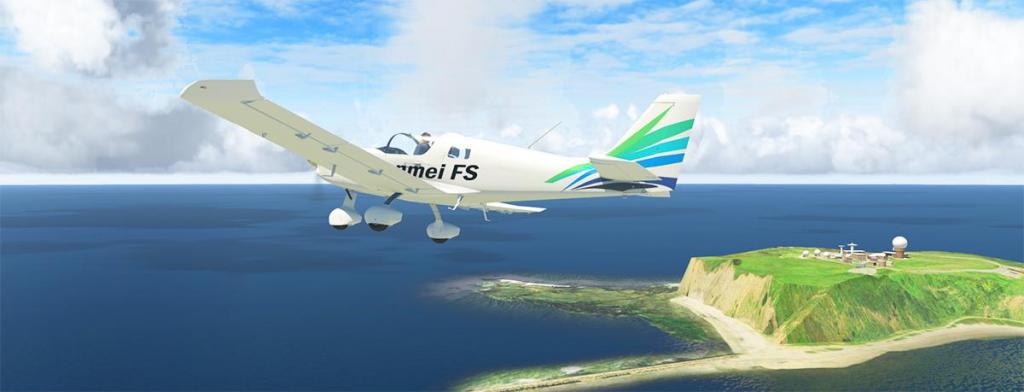
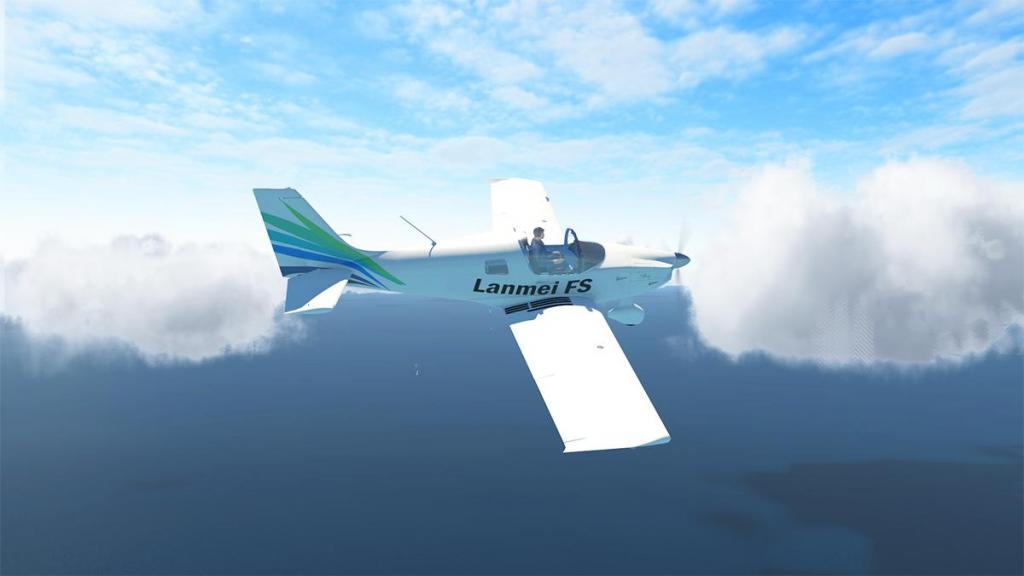

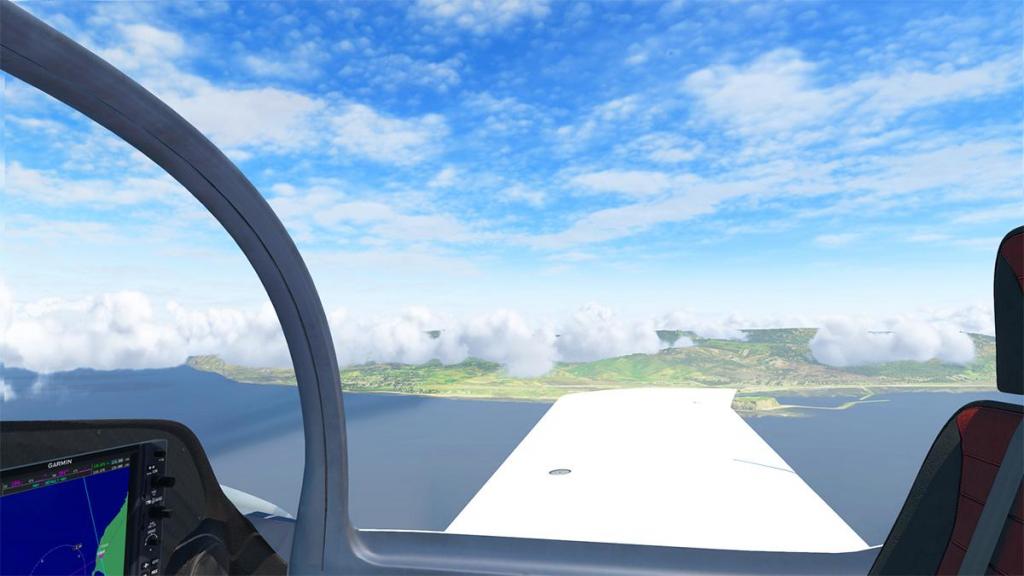
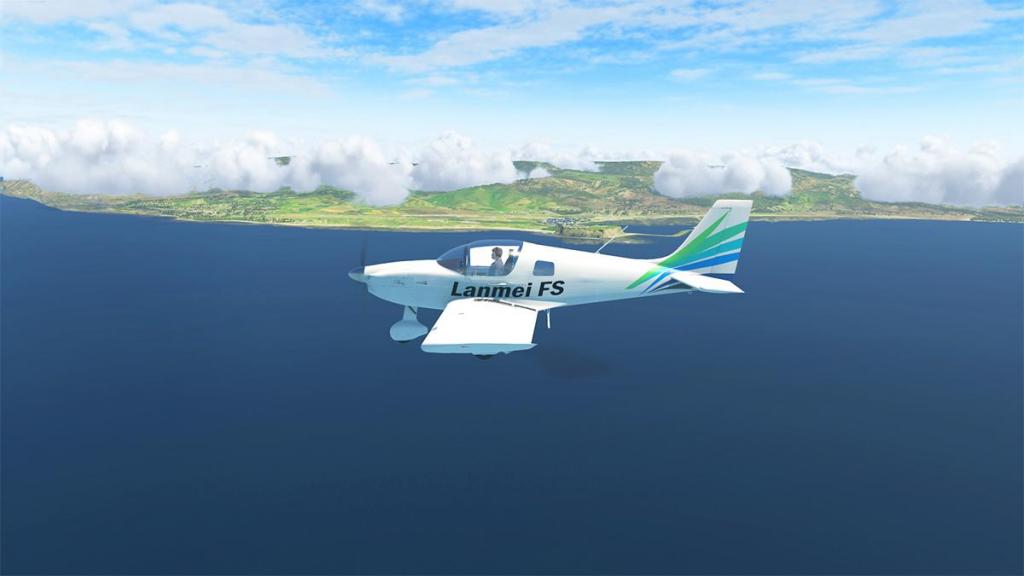
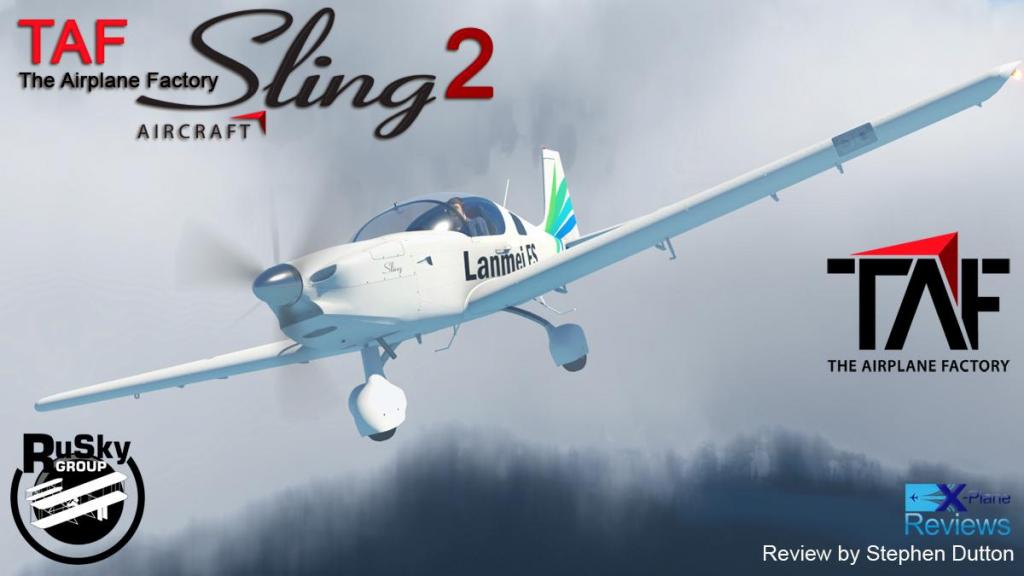

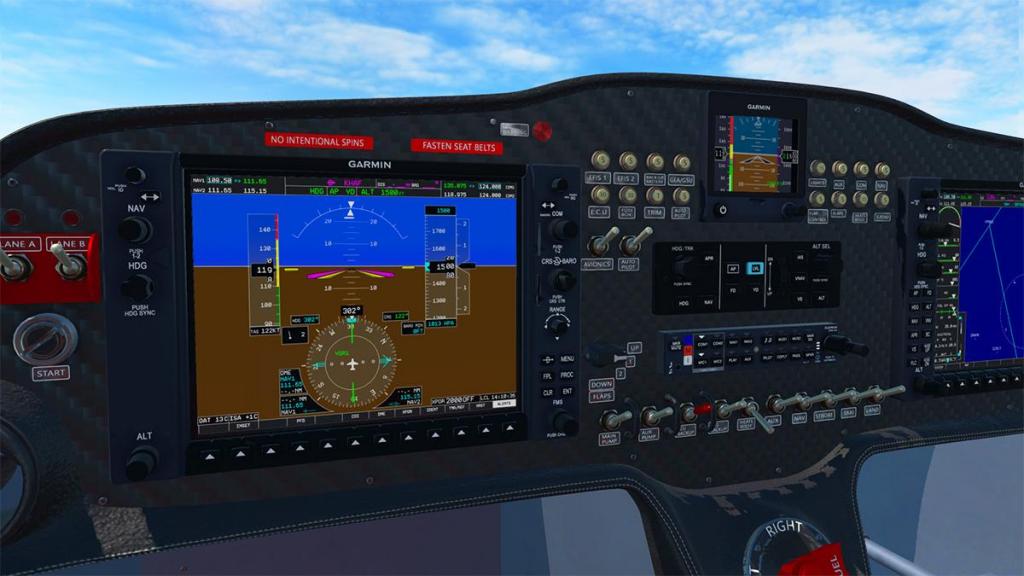

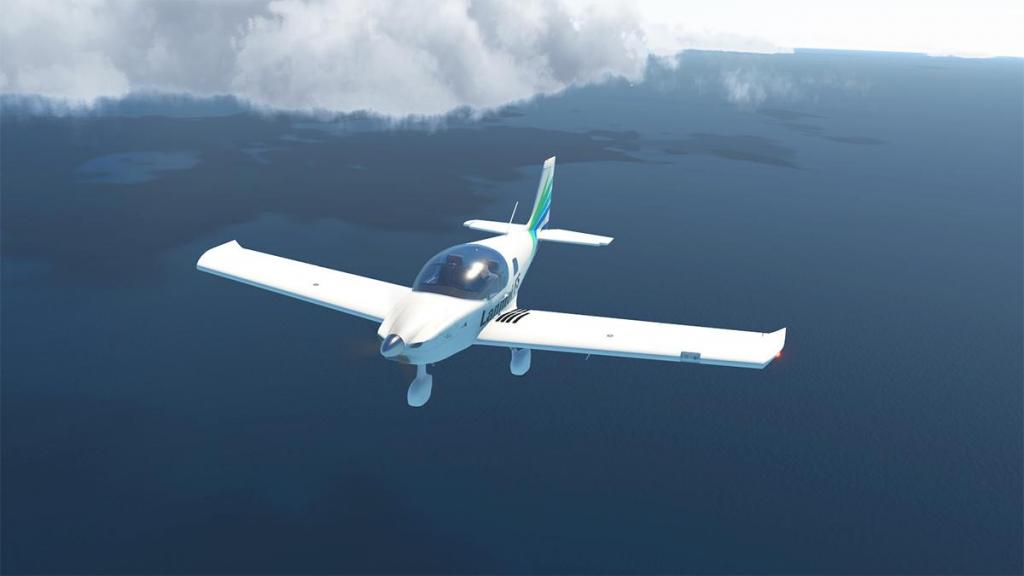



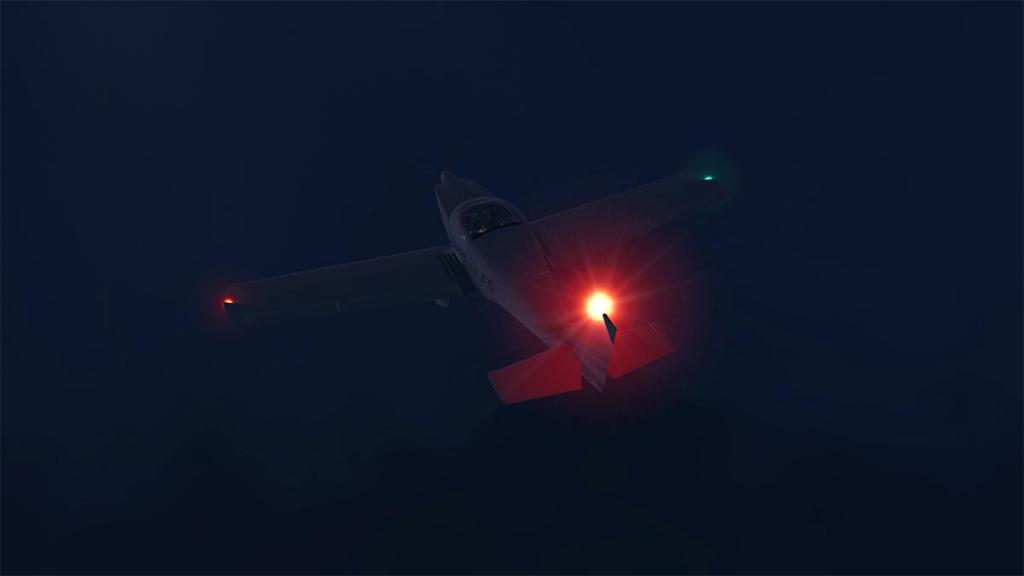



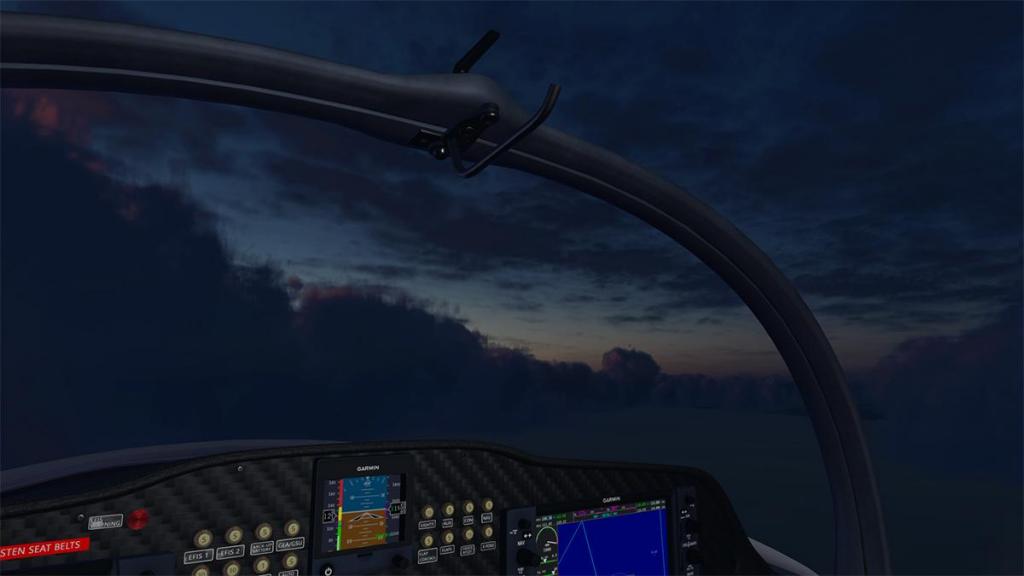



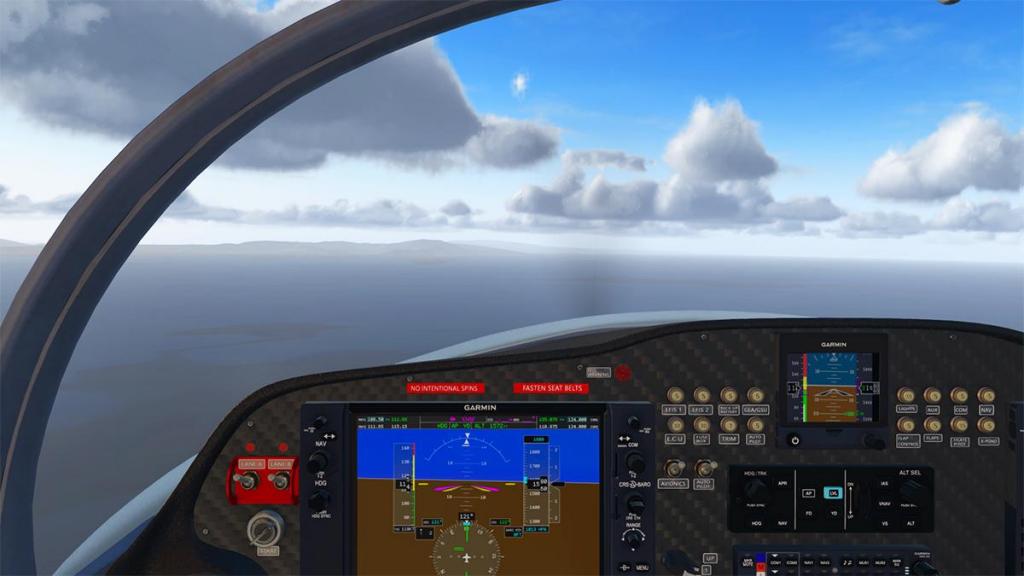
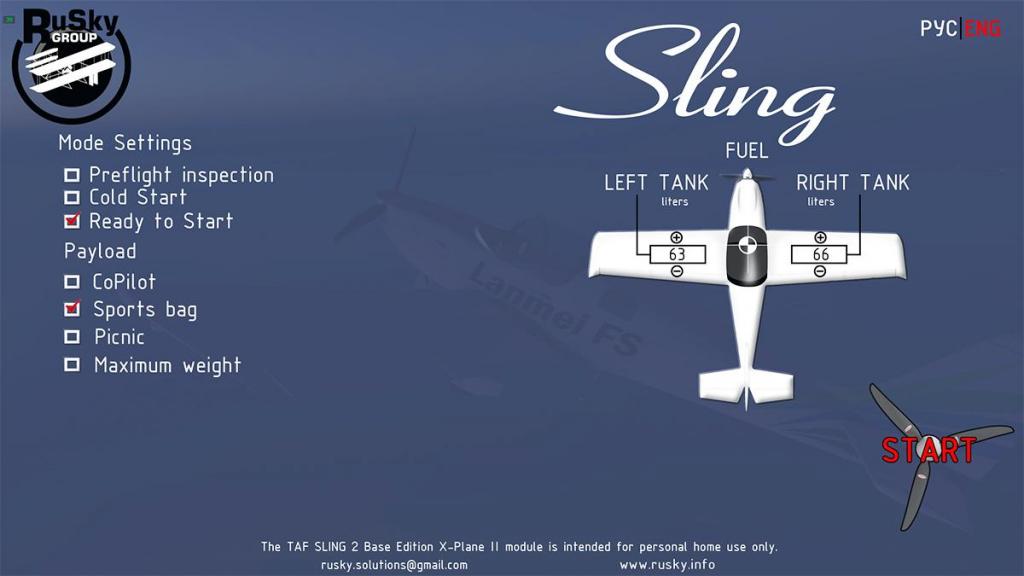




















.jpg.479d92a54e618d571f5ed80797531f00.jpg)
.jpg.ffececfd933ebba4791dc8e00ce0c151.jpg)
.jpg.79b0b7b0d8ccad10a38674cacb351260.jpg)
.jpg.4f649188384fdb8971a49e623d416284.jpg)
.jpg.05a0718f573a610b8978327319bdedef.jpg)
.jpg.9bbb249f91d24f62a6703f29f04e8428.jpg)
.jpg.1ec8d9d80dbd239a2548d7511ad047c5.jpg)
.jpg.4a94d247fc46bafd4ddd006bed0d1bf9.jpg)
.jpg.230b3a757113b088d657b55d3217392f.jpg)
.jpg.1afec5865ad8886766f31c240ac8b129.jpg)
.jpg.737b498671032194c0125d1a50534c18.jpg)
.jpg.5dea86d73df588360aaa851c91237666.jpg)
.jpg.e993dd8003736a2e302d9212da95655c.jpg)
.jpg.f66c87612c5f10a34fb907feb7de419d.jpg)
.jpg.60e67ee1ad9b21ad8f013e9b732c72e2.jpg)
.jpg.4fdf3ed4ac647510c8ceb9ba7ca15858.jpg)
.jpg.c34b8a1f7caf8804ca07515e4d2b6b74.jpg)
.jpg.a65a167203ded468b13d698c981c30b1.jpg)
.jpg.d70fc54c42b1cb8d29d8f1c2fb5da391.jpg)
.jpg.a3c276bd7db96afe5f7fe0948ebbb9a3.jpg)
.jpg.0acf08ad724c03650f7172ee3509b0b9.jpg)
.jpg.52144c40e153d0cddd7e792bee3f3103.jpg)
.jpg.9cfc86e66fa76842352e504a5c90cb32.jpg)
.jpg.0aad1407708b905cfddc89447dccbb8a.jpg)
.jpg.7f706e88895d5ee00ad7a0a70fc8ab18.jpg)
.jpg.86e9d1b7f761f37ea9b21dab2c41156b.jpg)
































.thumb.jpg.4e1dc632252b50db2cdce5a1e85ddf04.jpg)
.thumb.jpg.287adb032620d72edfa0a77bd04214e3.jpg)
.thumb.jpg.bcb0114ded933bbc87679c98423fddfd.jpg)
.thumb.jpg.a862bfc7a97d17c64f61eea69e433540.jpg)
.thumb.jpg.2838270997faf9af59ecd7e2eb6f37e3.jpg)
.thumb.jpg.e4aef1449d0fdd1d2acf1d1a9abe3974.jpg)
.thumb.jpg.dd57cefbc5a6fed0604e5d604990d3d4.jpg)
.thumb.jpg.0bdf297072e70ca25f4affad82261773.jpg)
.thumb.jpg.fde0698e7b137ff90d3ed1a9215a6658.jpg)
.thumb.jpg.c3e80673d3d63345b199ea10e027376f.jpg)
.thumb.jpg.23bb66bce2166201e83c951c7c872884.jpg)
.thumb.jpg.241d29af58d949006b25377eb3190b85.jpg)
.thumb.jpg.c0d28411a506ca89e2deff475f7a8e65.jpg)
.thumb.jpg.25b34229e401f5d25fc92607c8b1090b.jpg)
.thumb.jpg.7c64f6bafbb945ddc837f2dc344adf8a.jpg)
.thumb.jpg.965045146577a64c5afabe0252b98c2f.jpg)
.thumb.jpg.6bf0e60044e507238a8baa26dda94741.jpg)
.thumb.jpg.50fe58dd0013d4db2424ac3b8393297e.jpg)
.thumb.jpg.b267da42f431bb2586e3cefc80ddde27.jpg)
.thumb.jpg.744a39ccb658728857391818b9e91577.jpg)
.thumb.jpg.44dcbd0eadcd1f247216d6196a106e72.jpg)
.thumb.jpg.6e88c83a18da0c8435184bc5f26d1689.jpg)
.thumb.jpg.19e88ffcd1ae97dd12c18b036675485a.jpg)
.thumb.jpg.29252417ca7566544225333ade735ff3.jpg)
.thumb.jpg.60123b0840f4c17cd61018f7661b7941.jpg)


